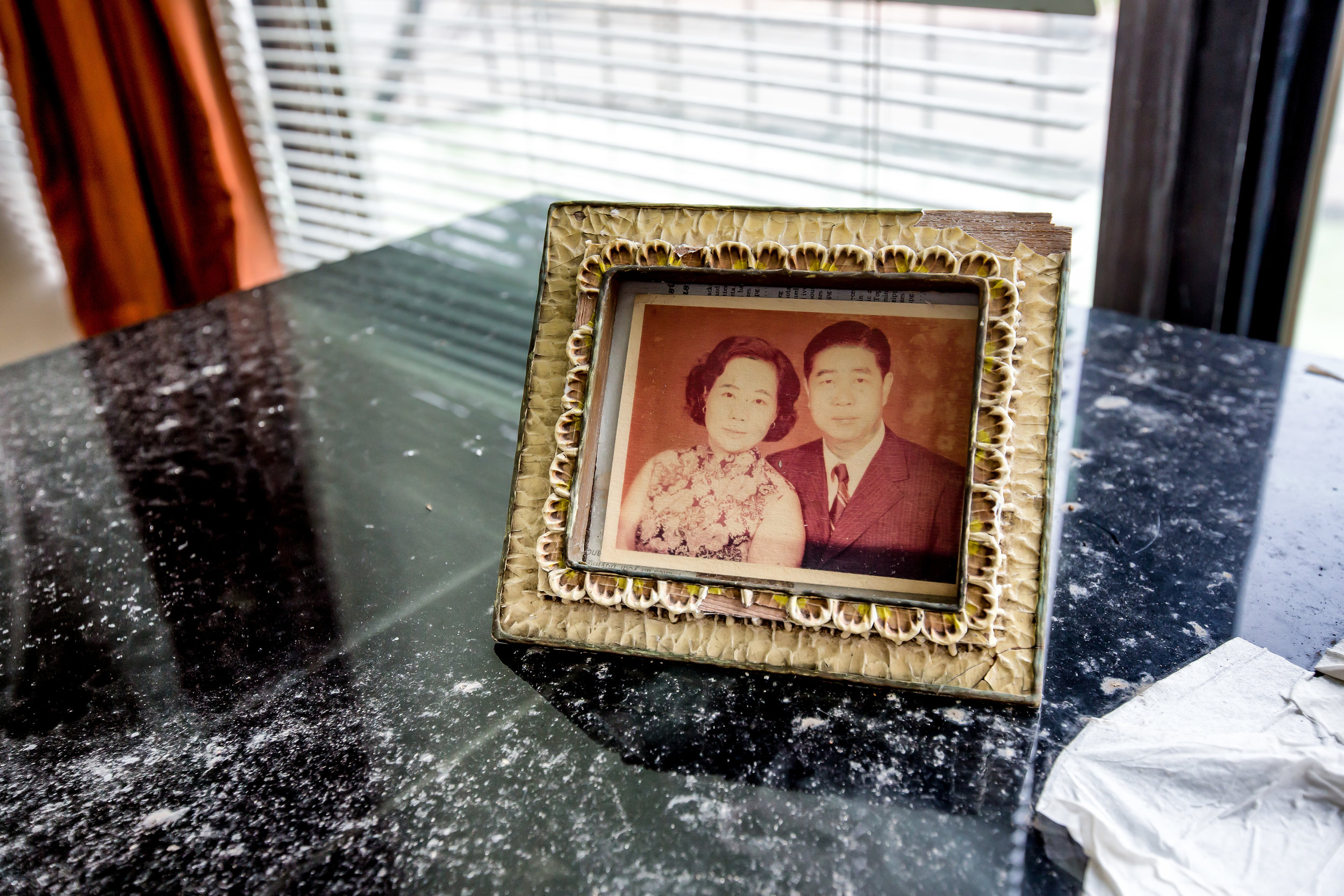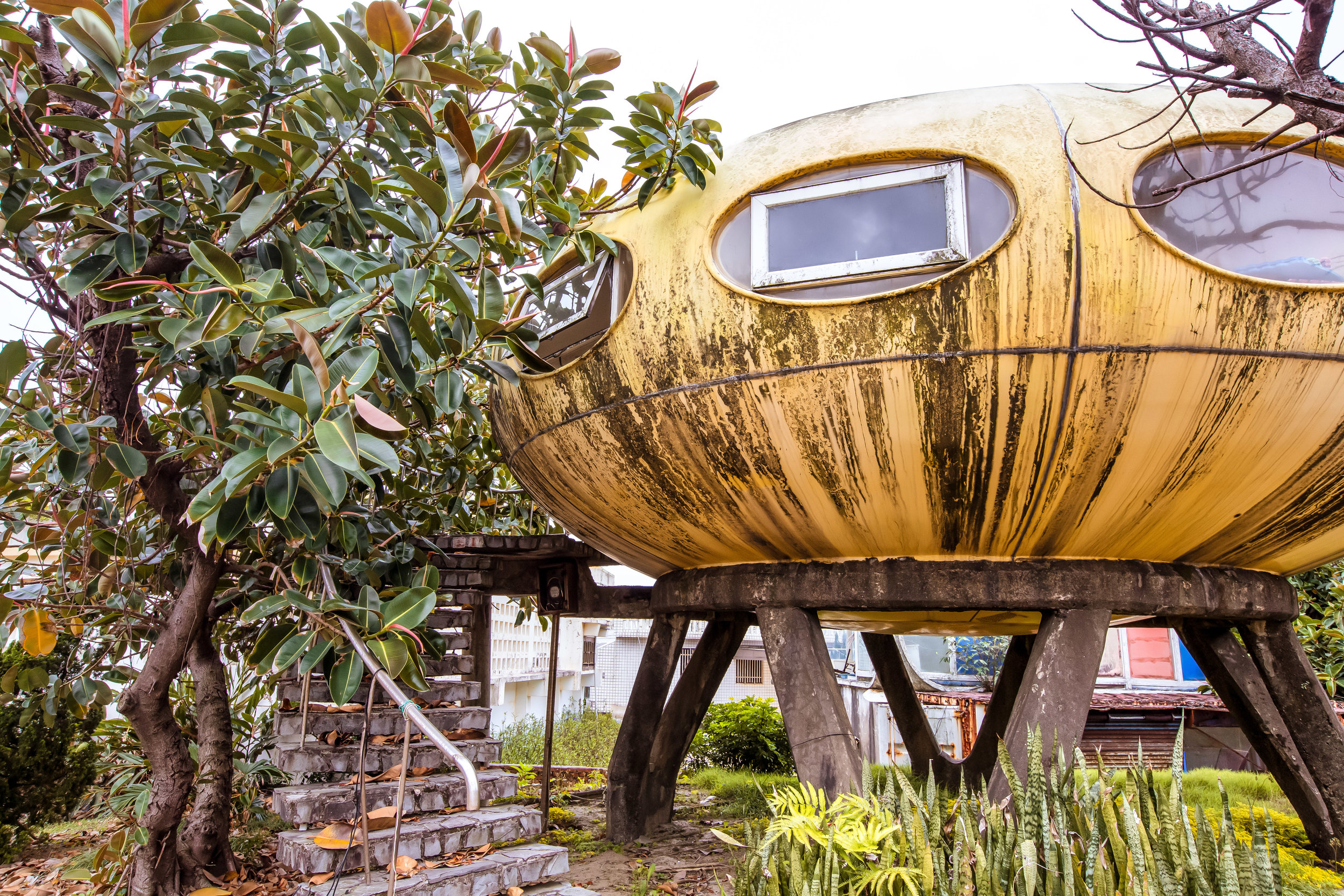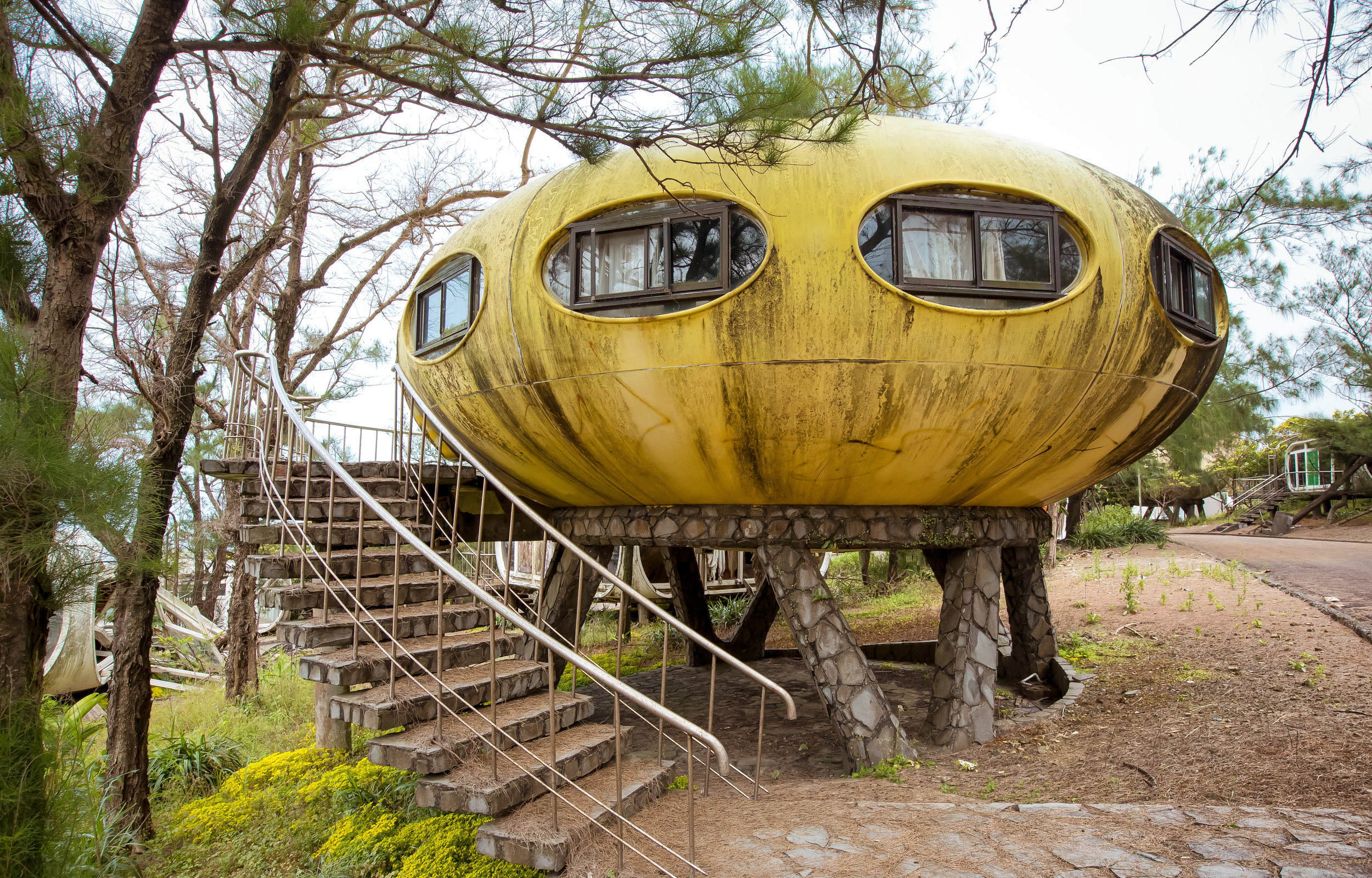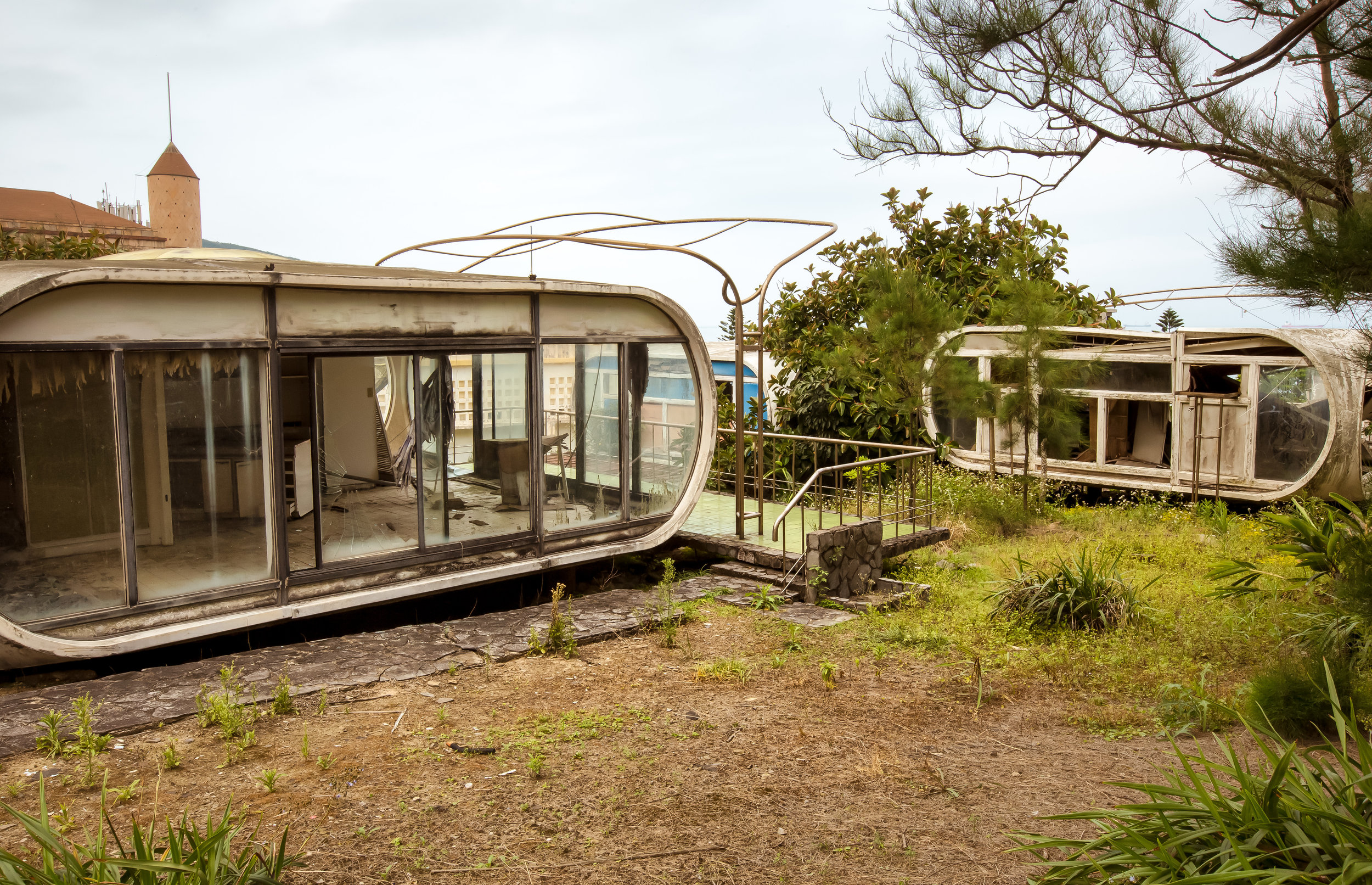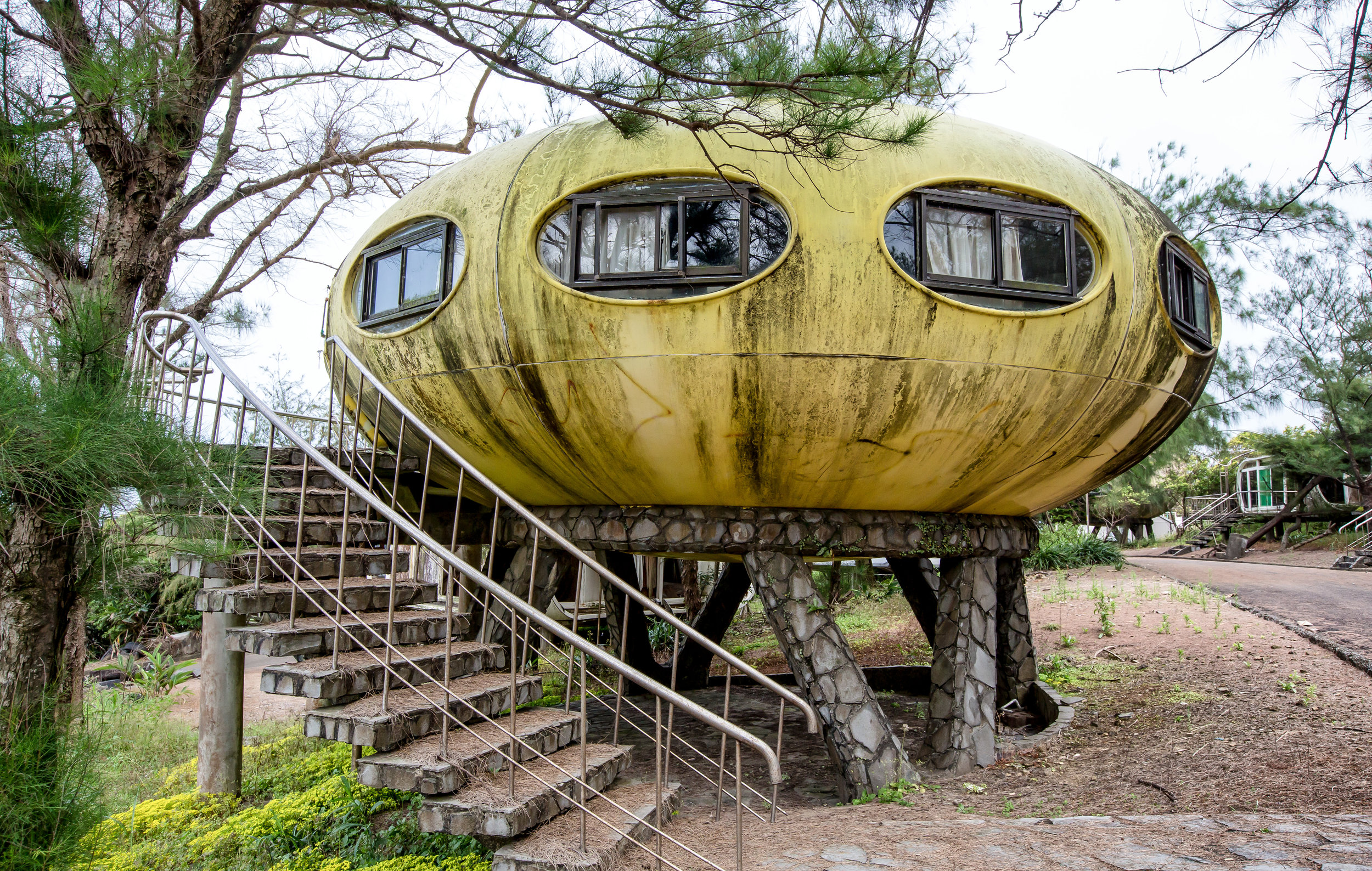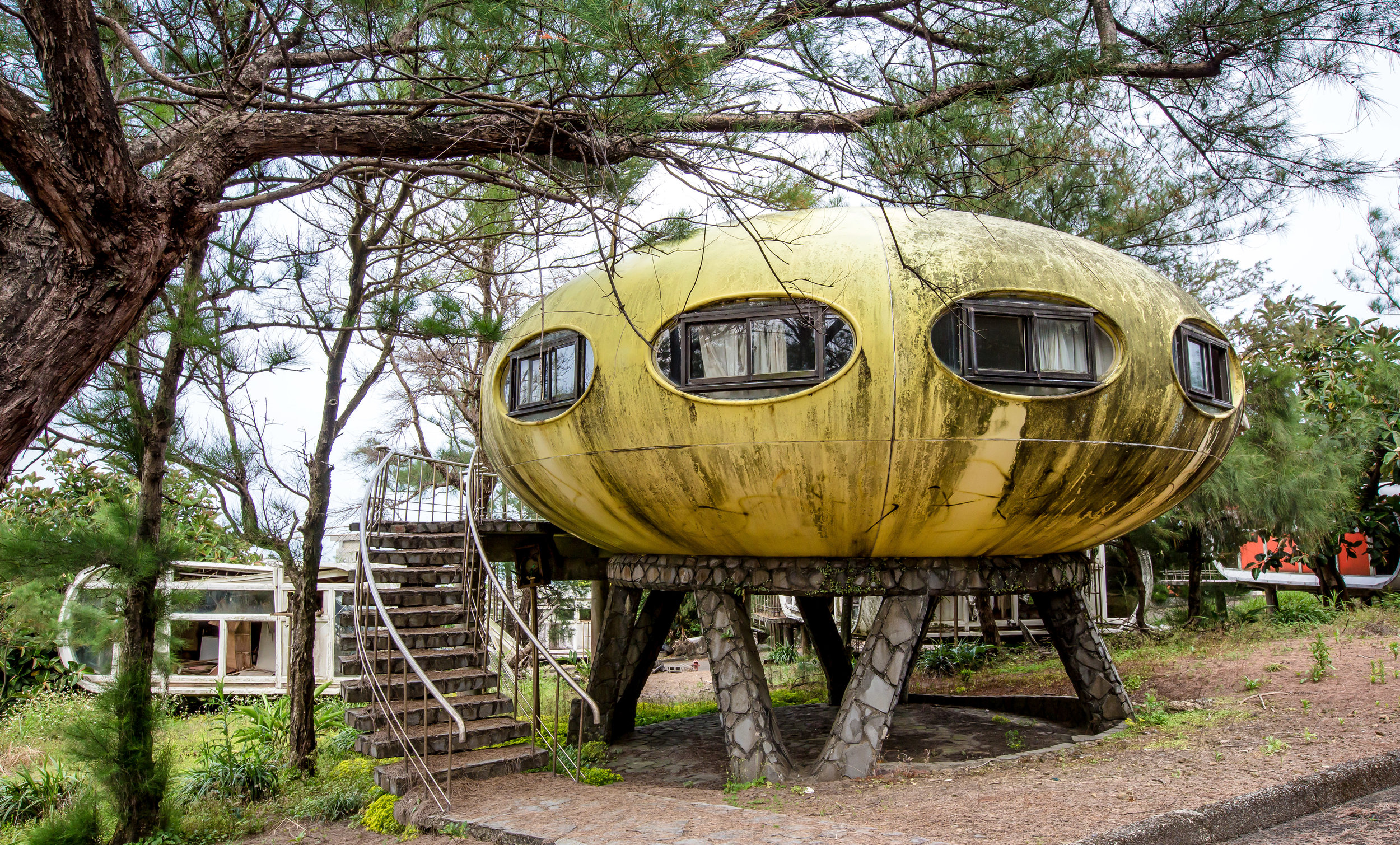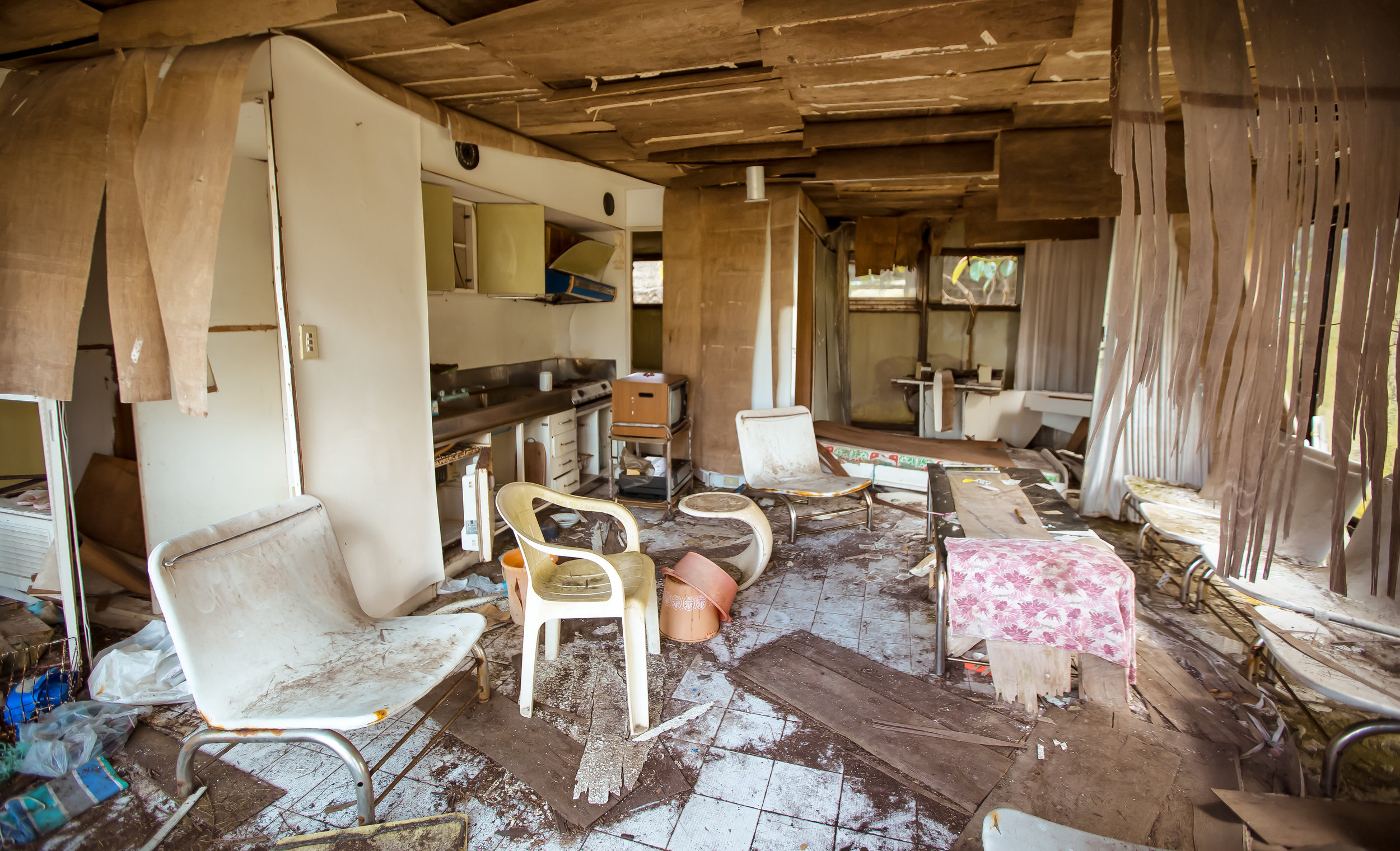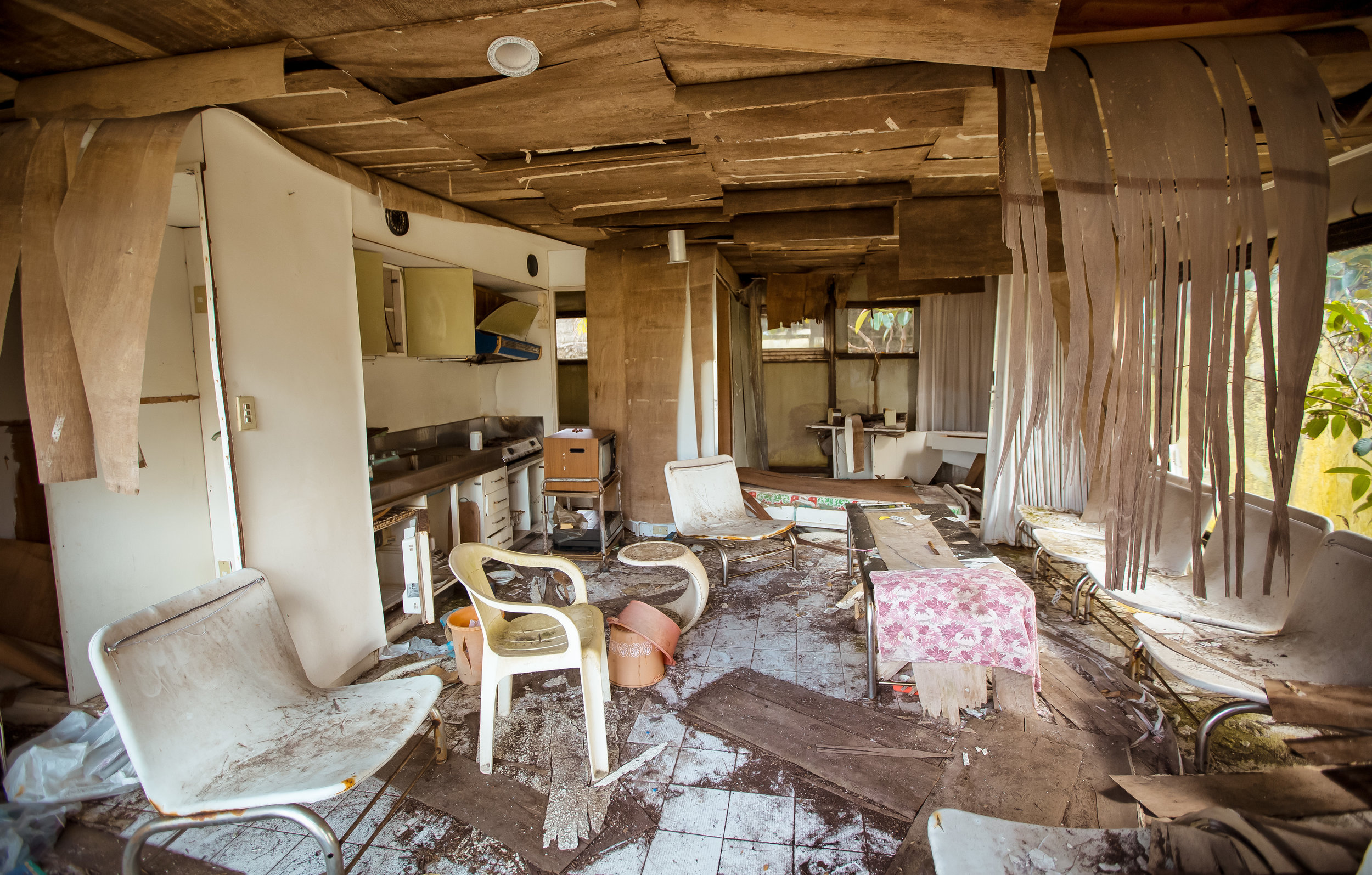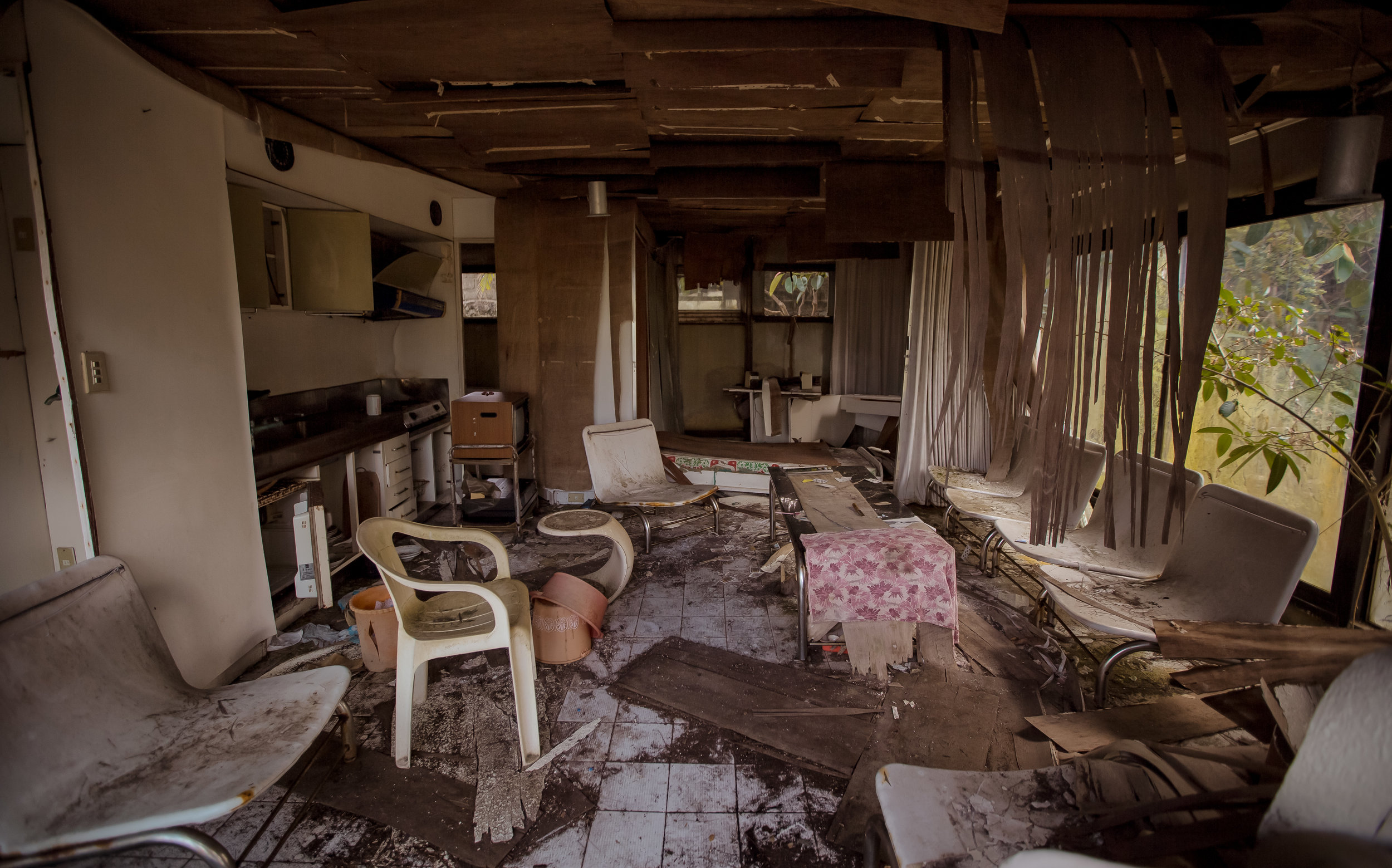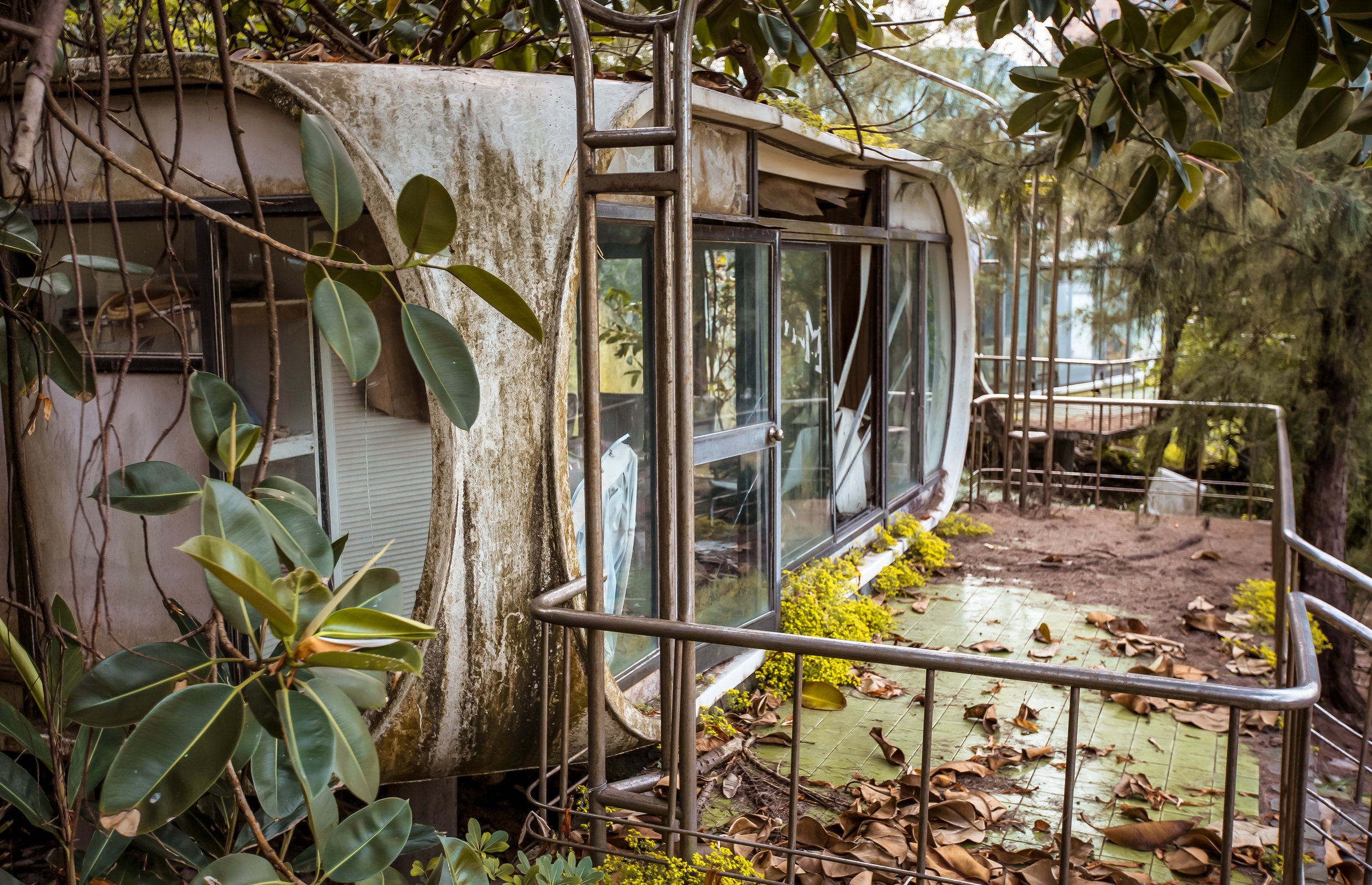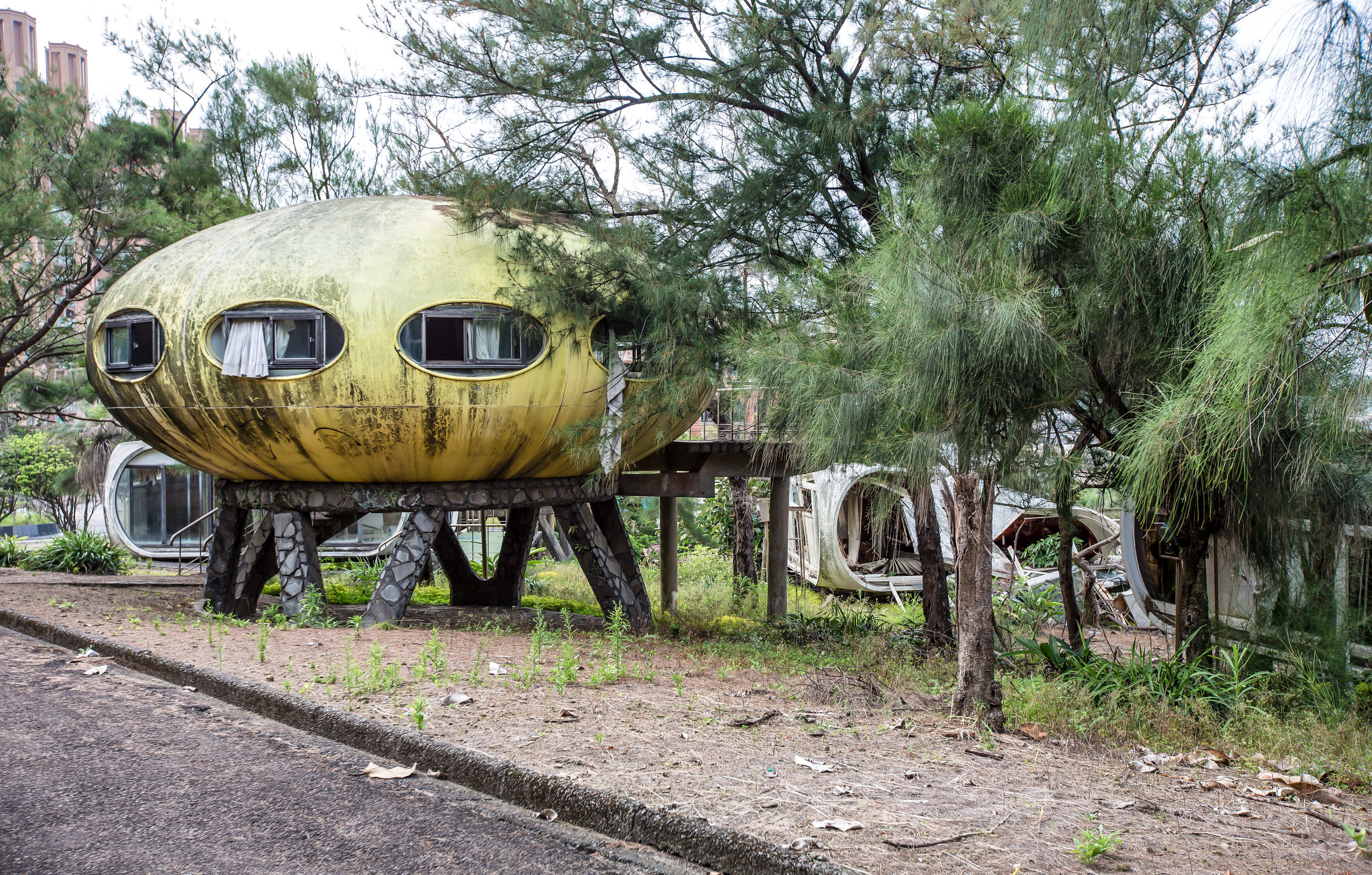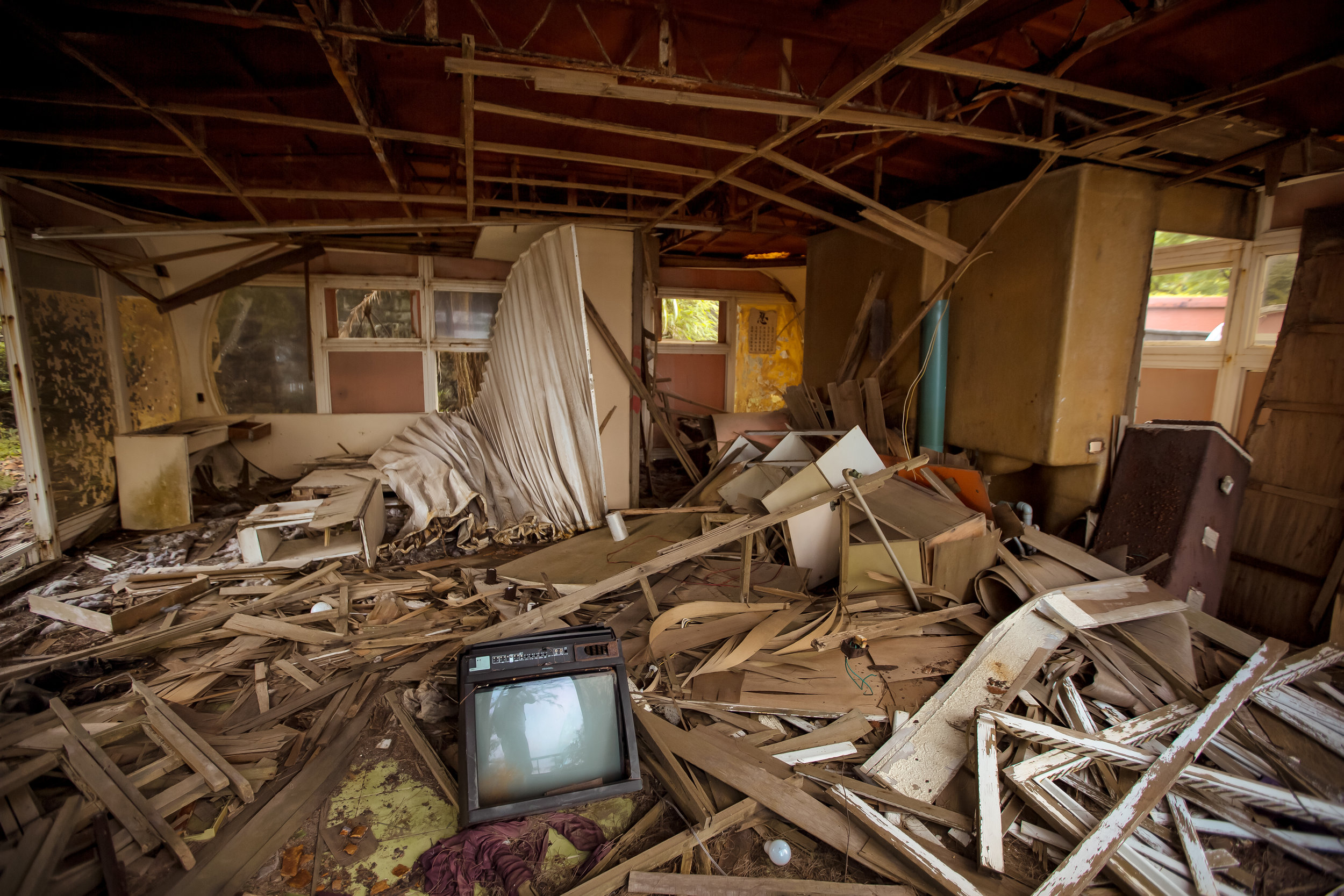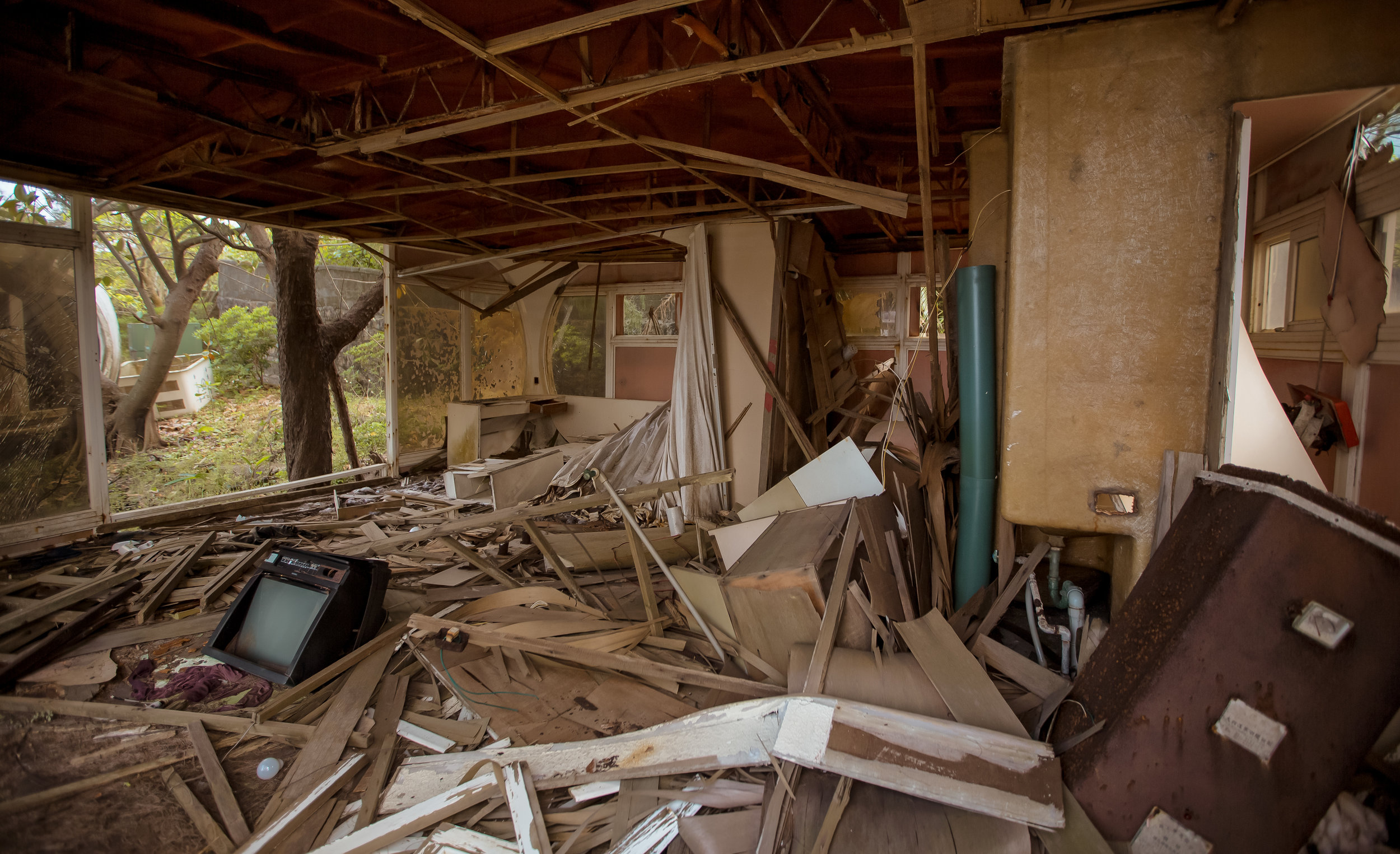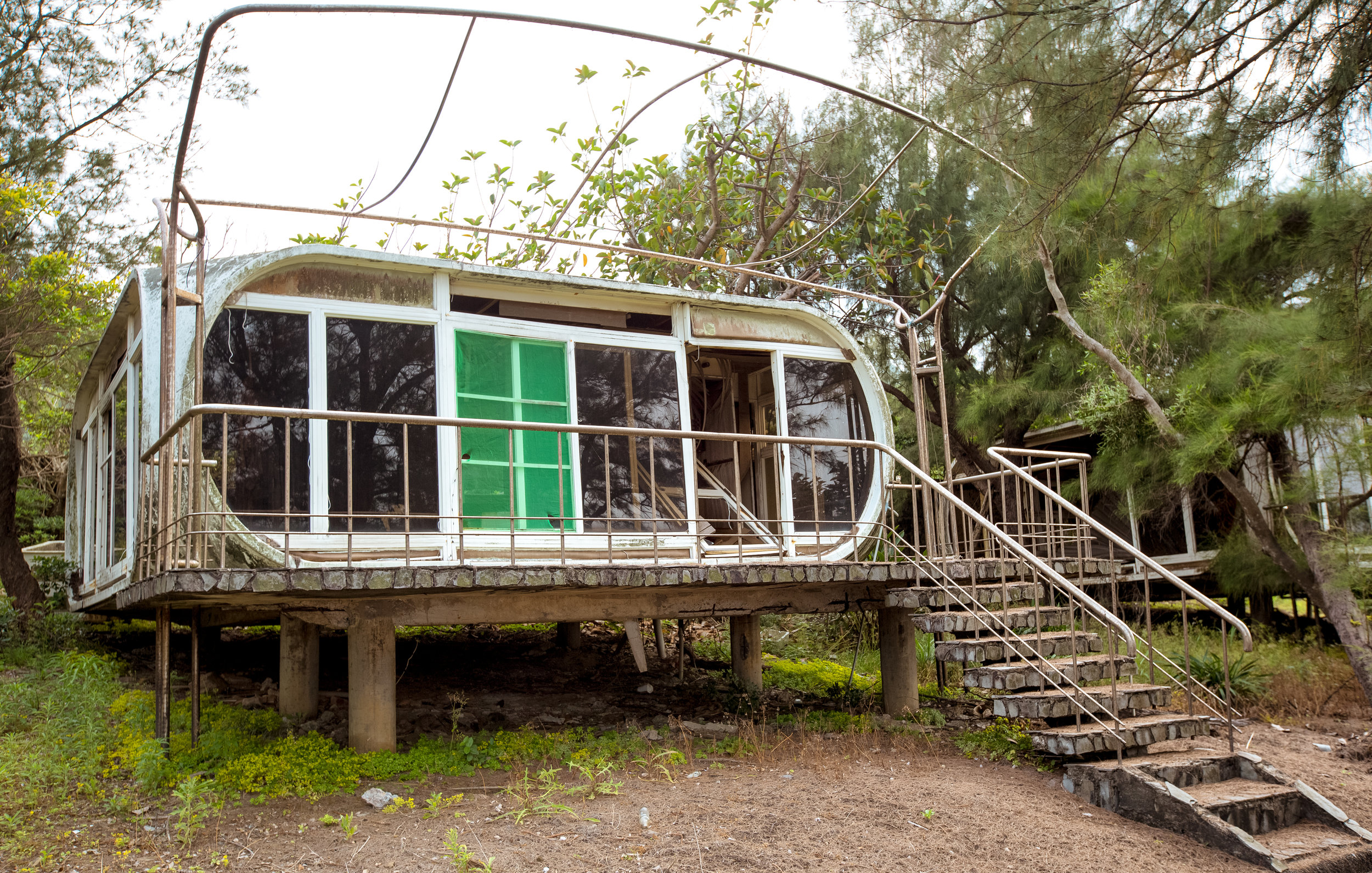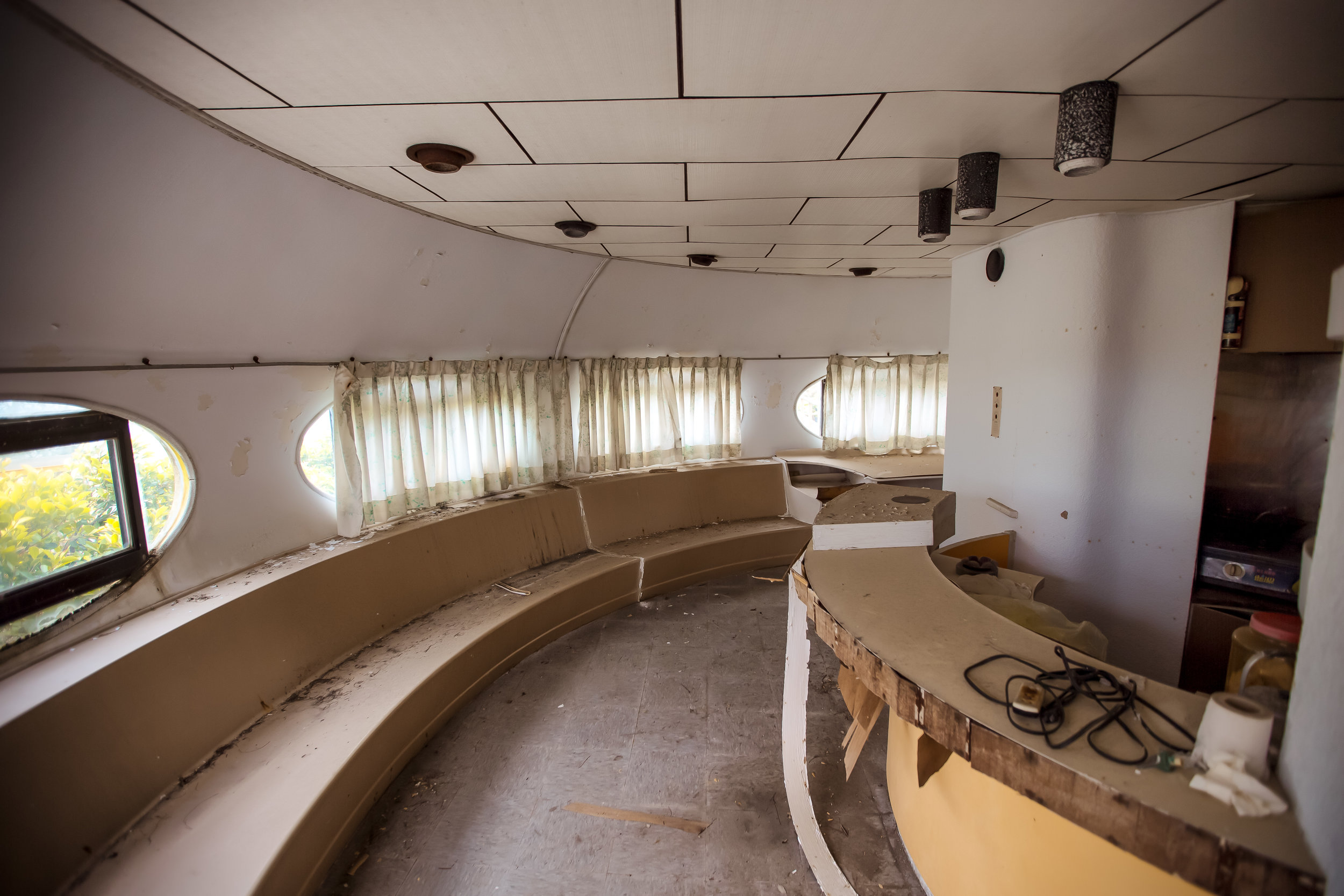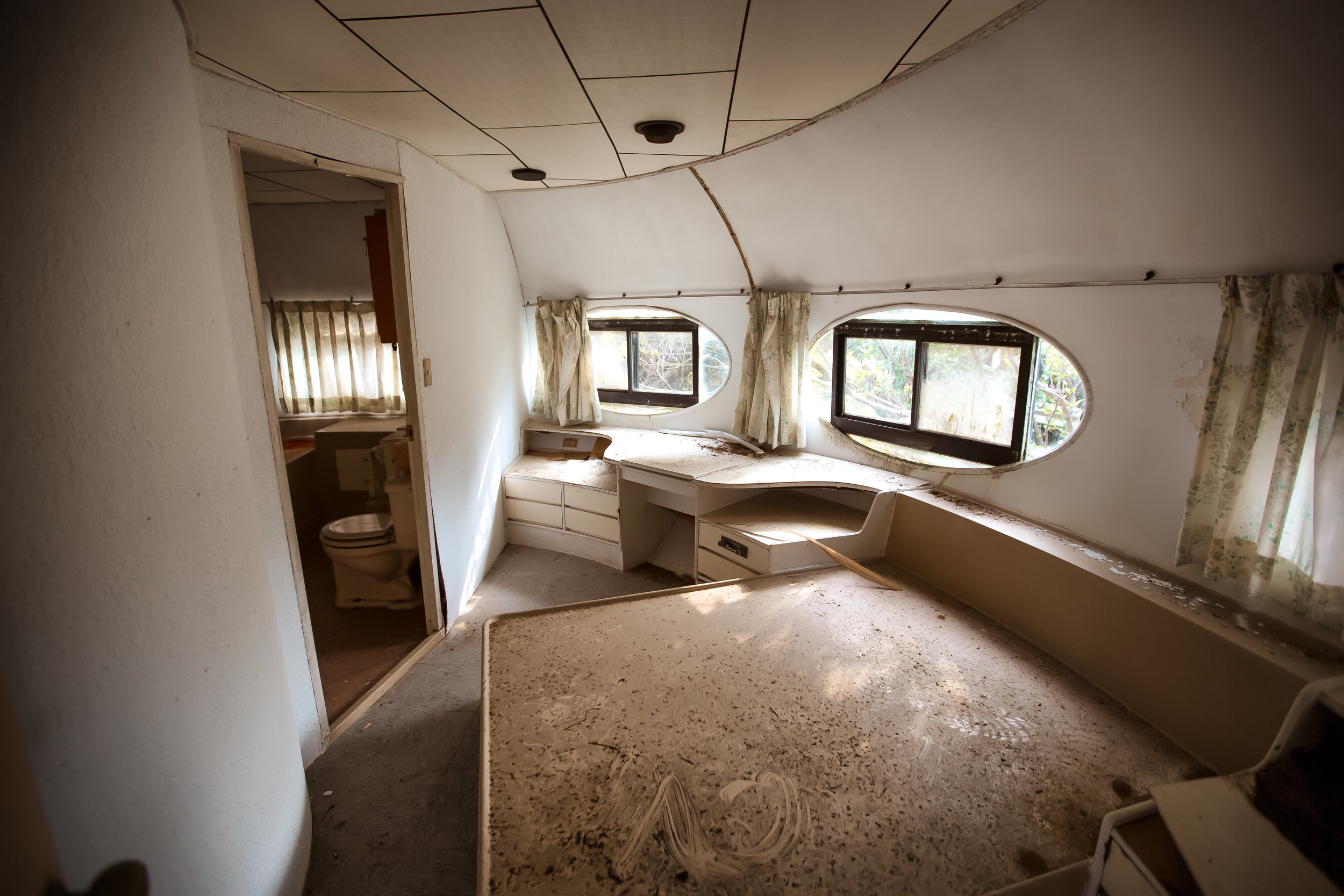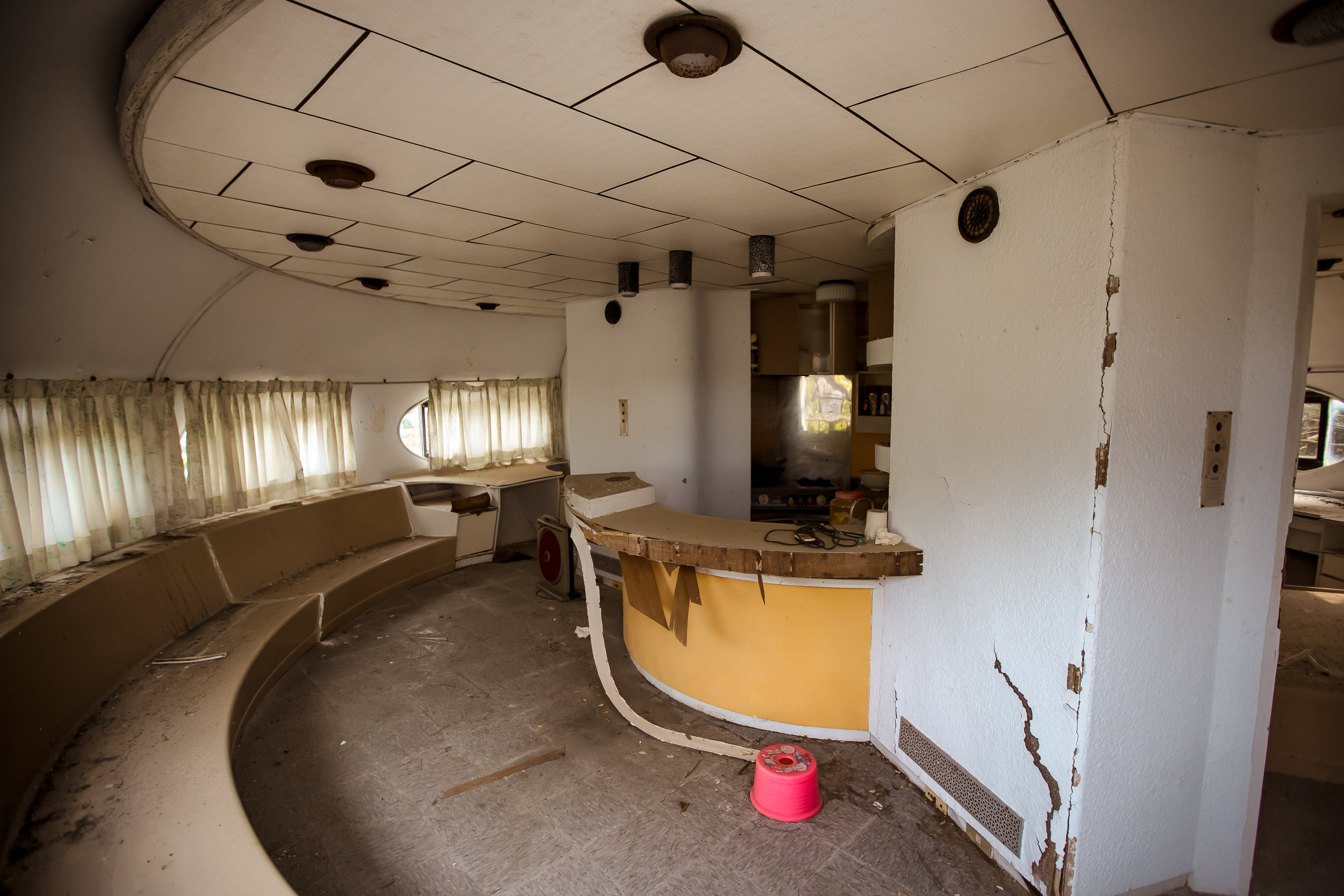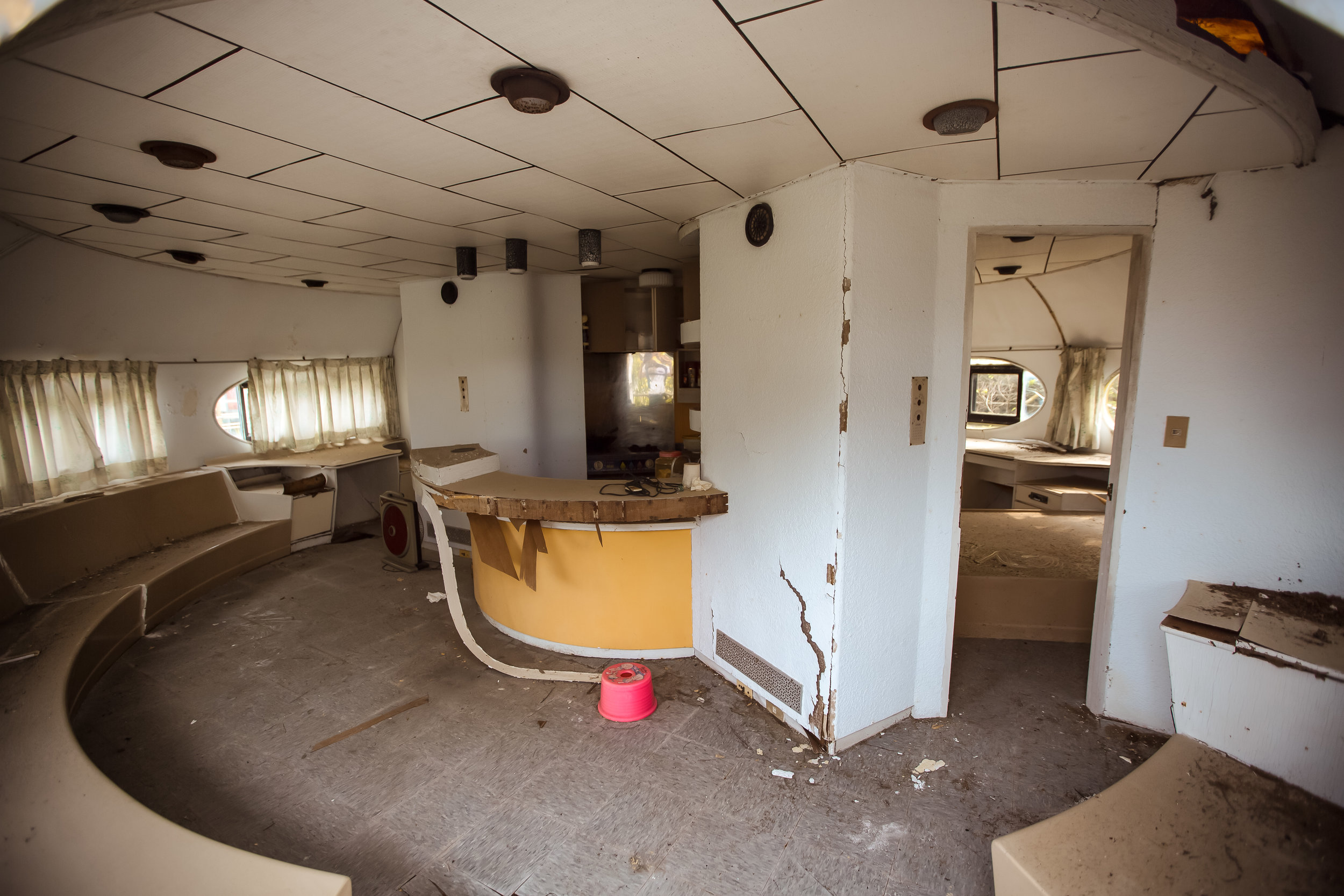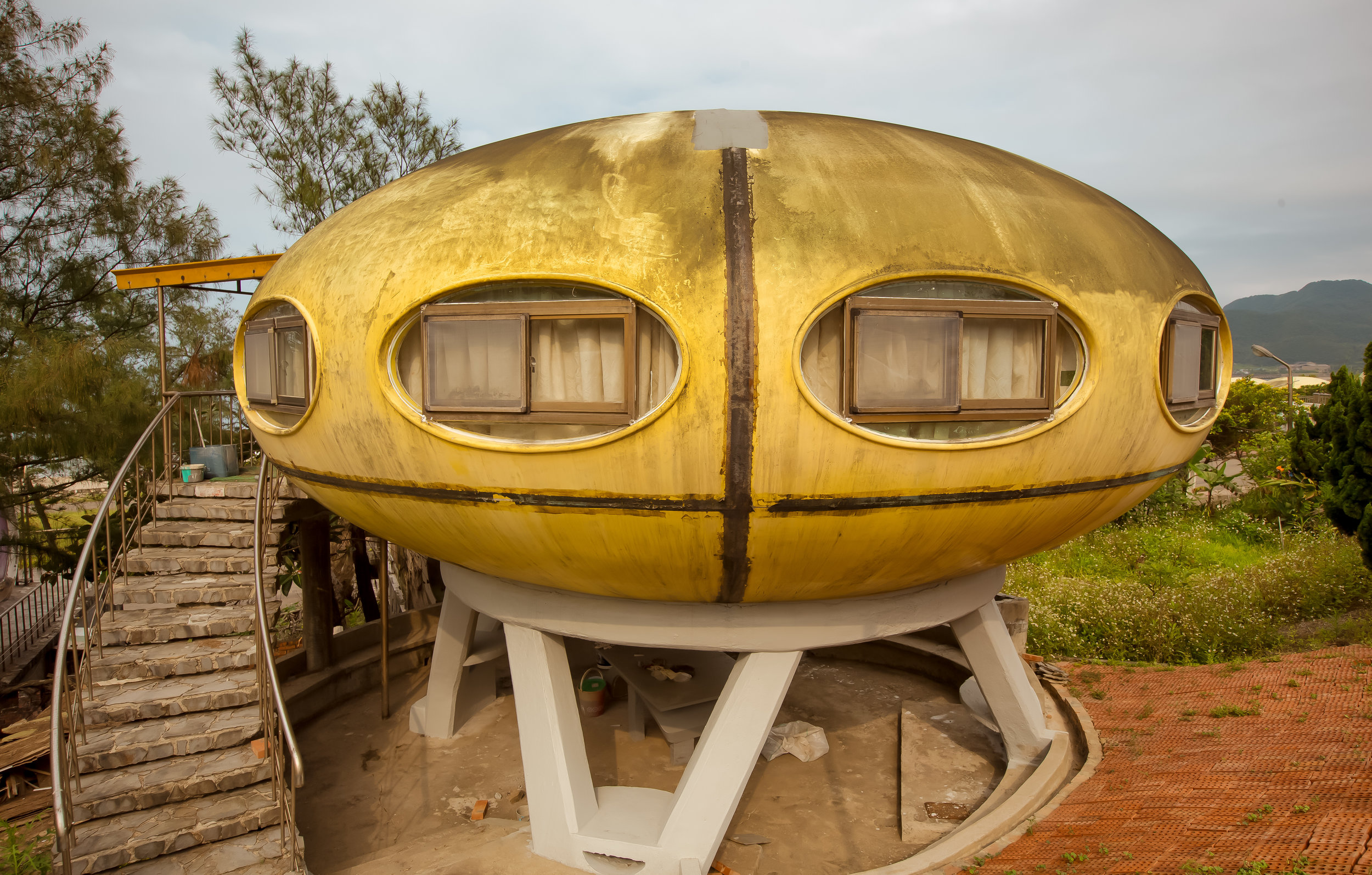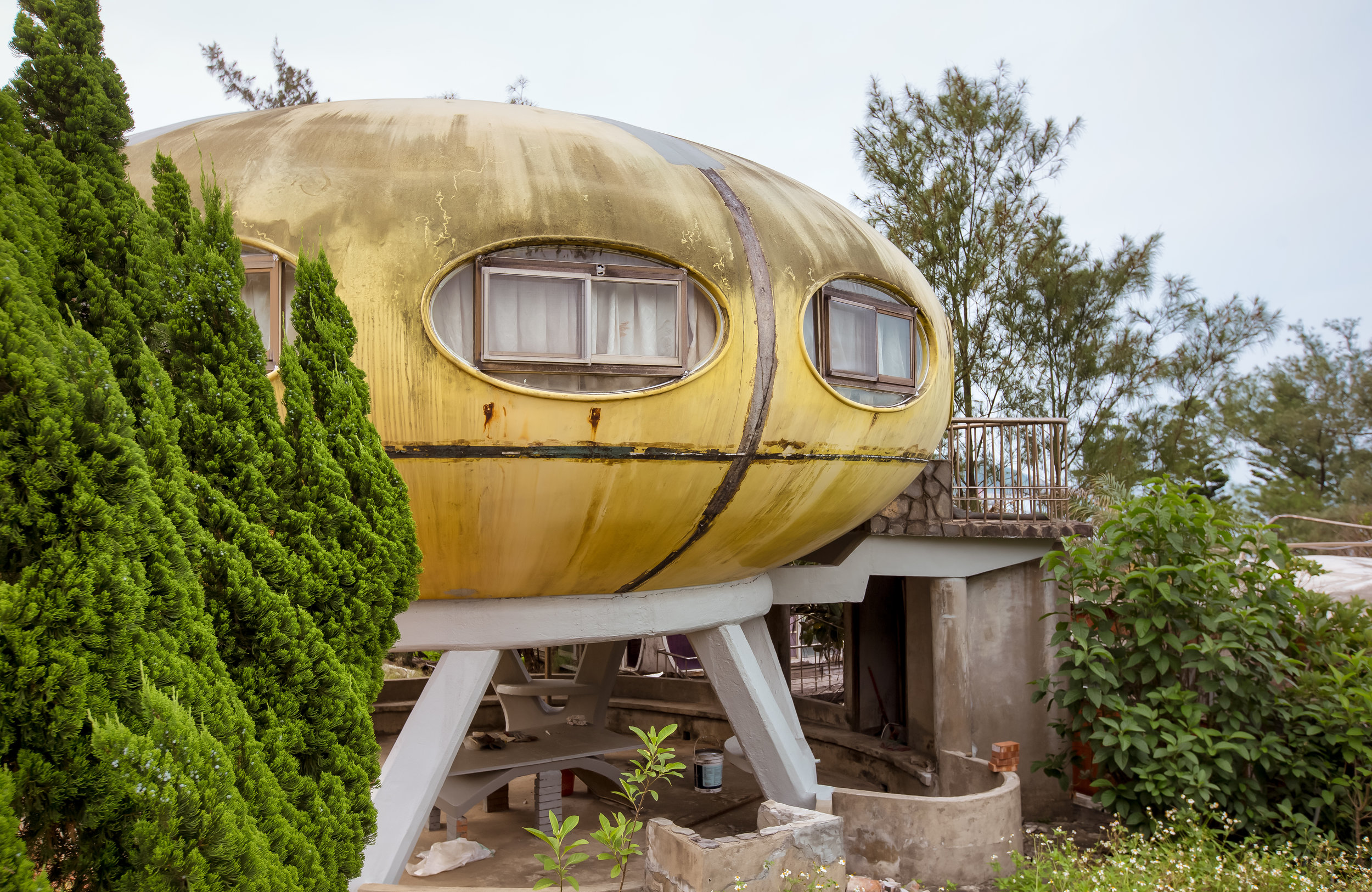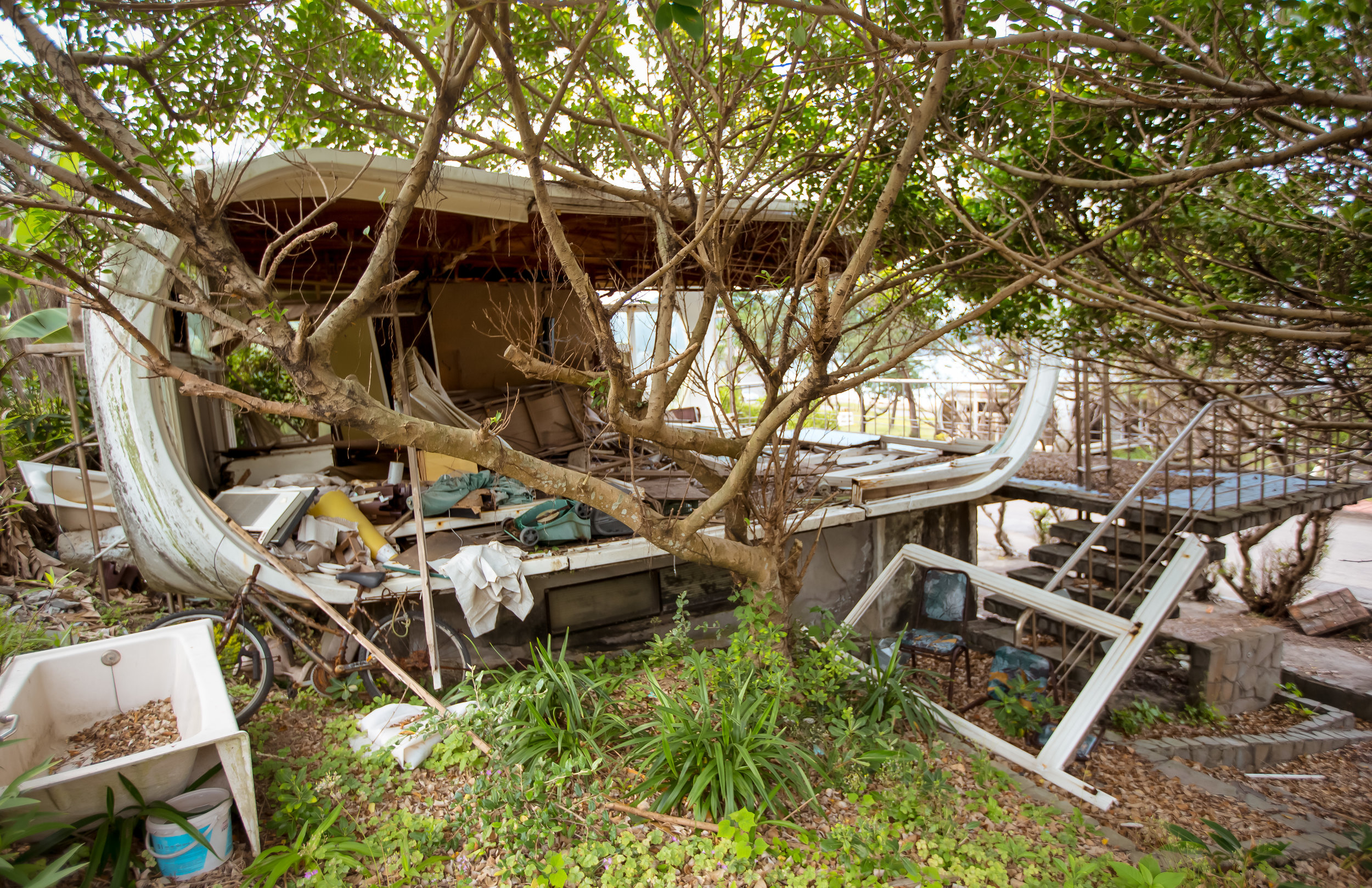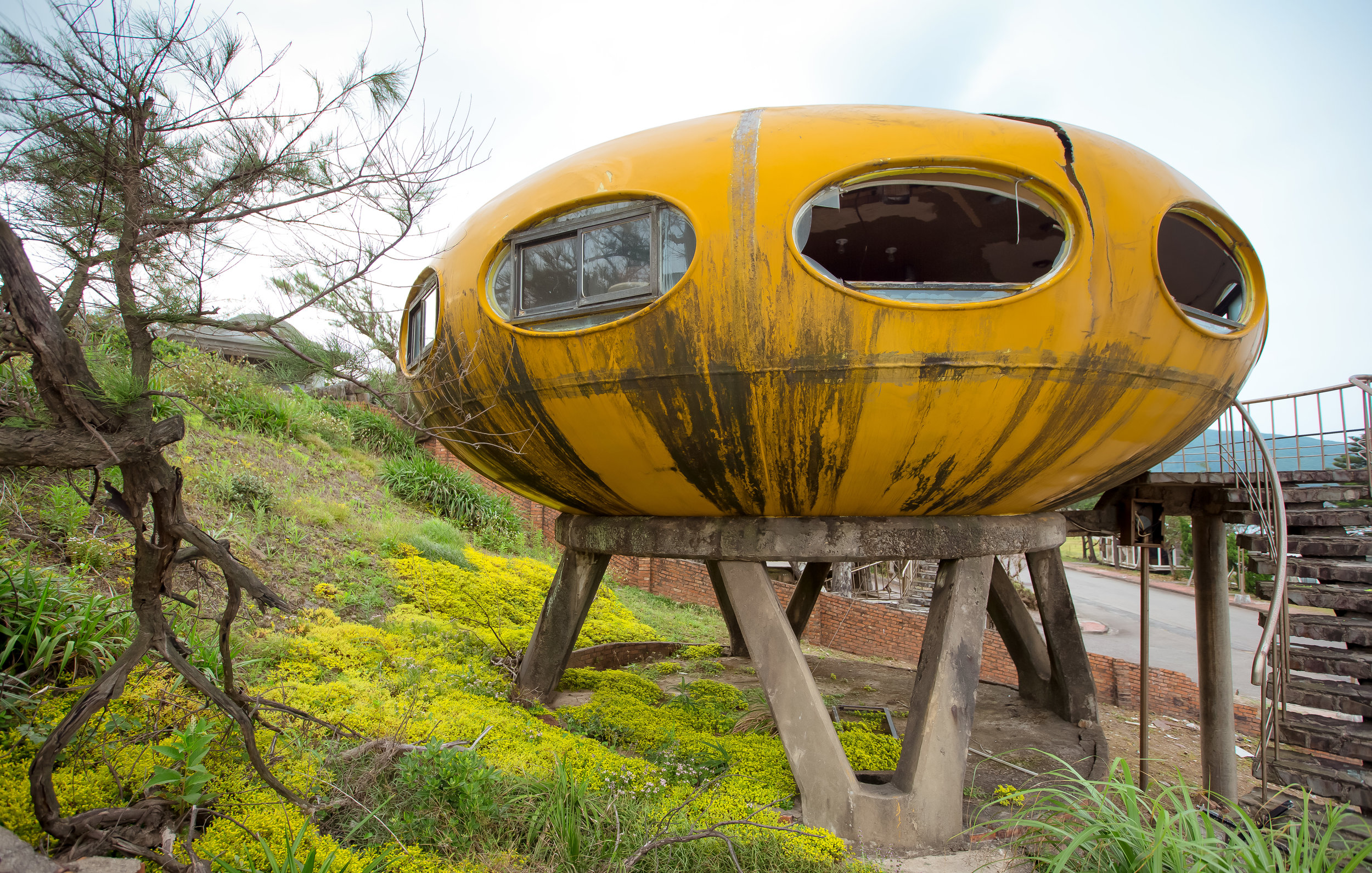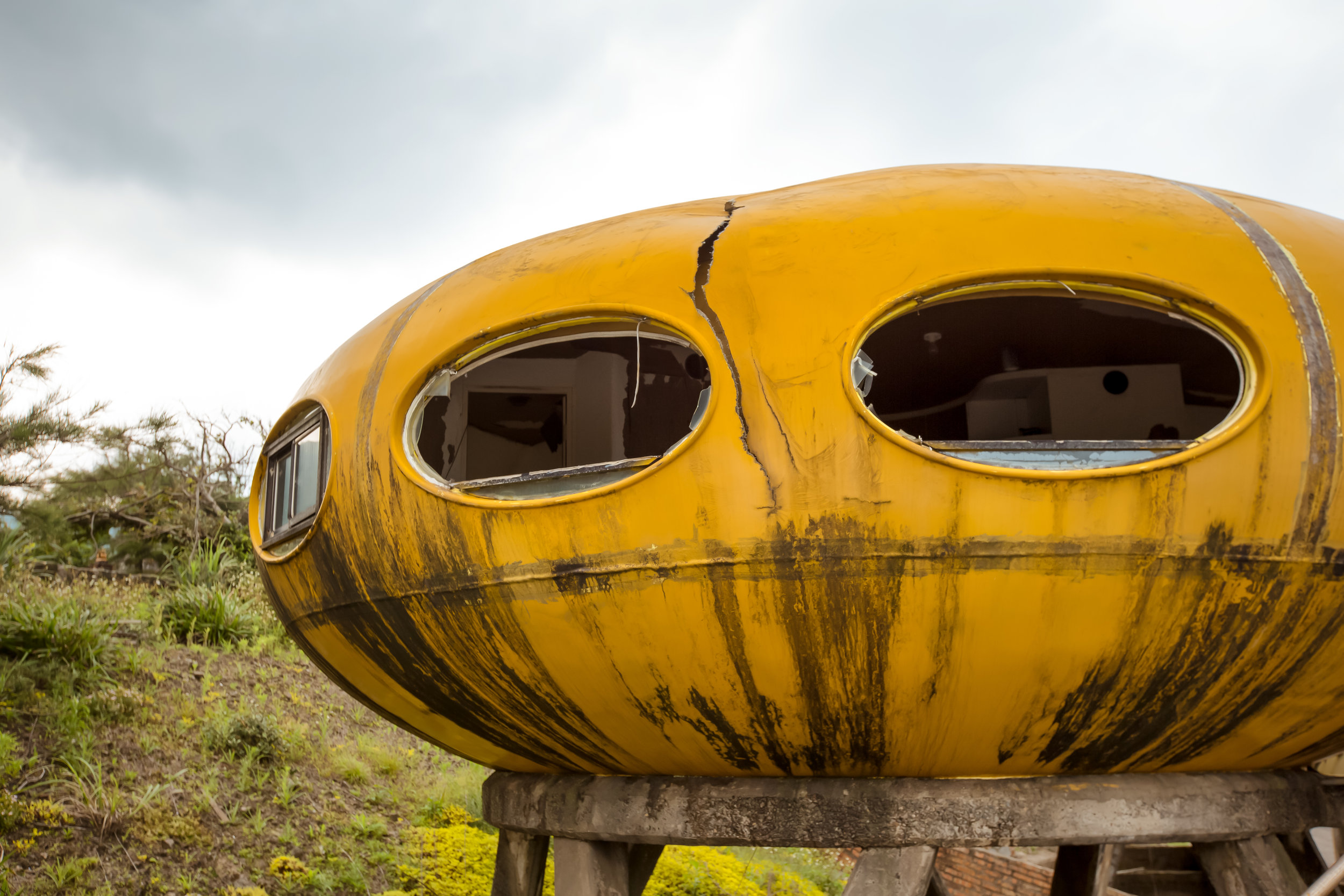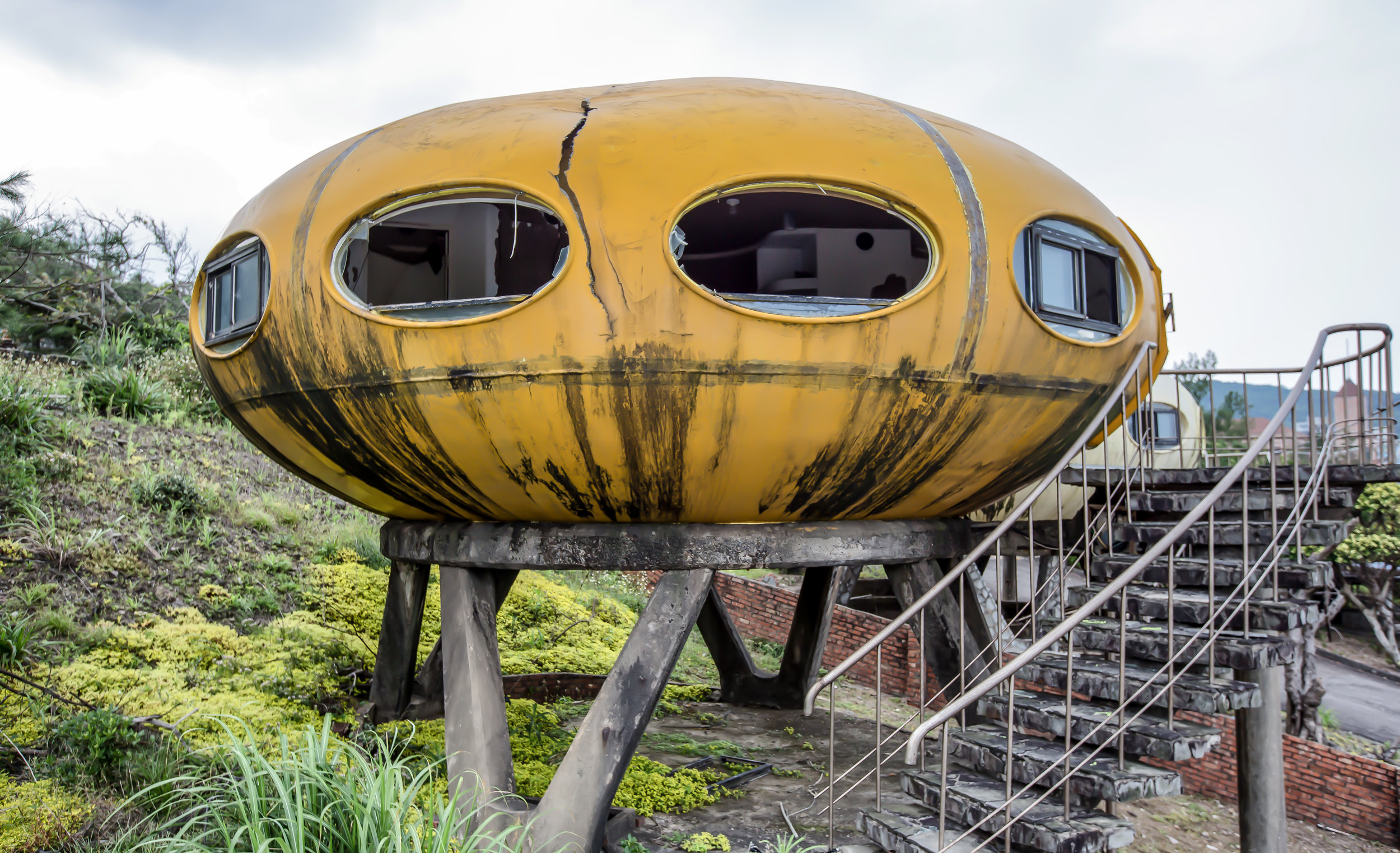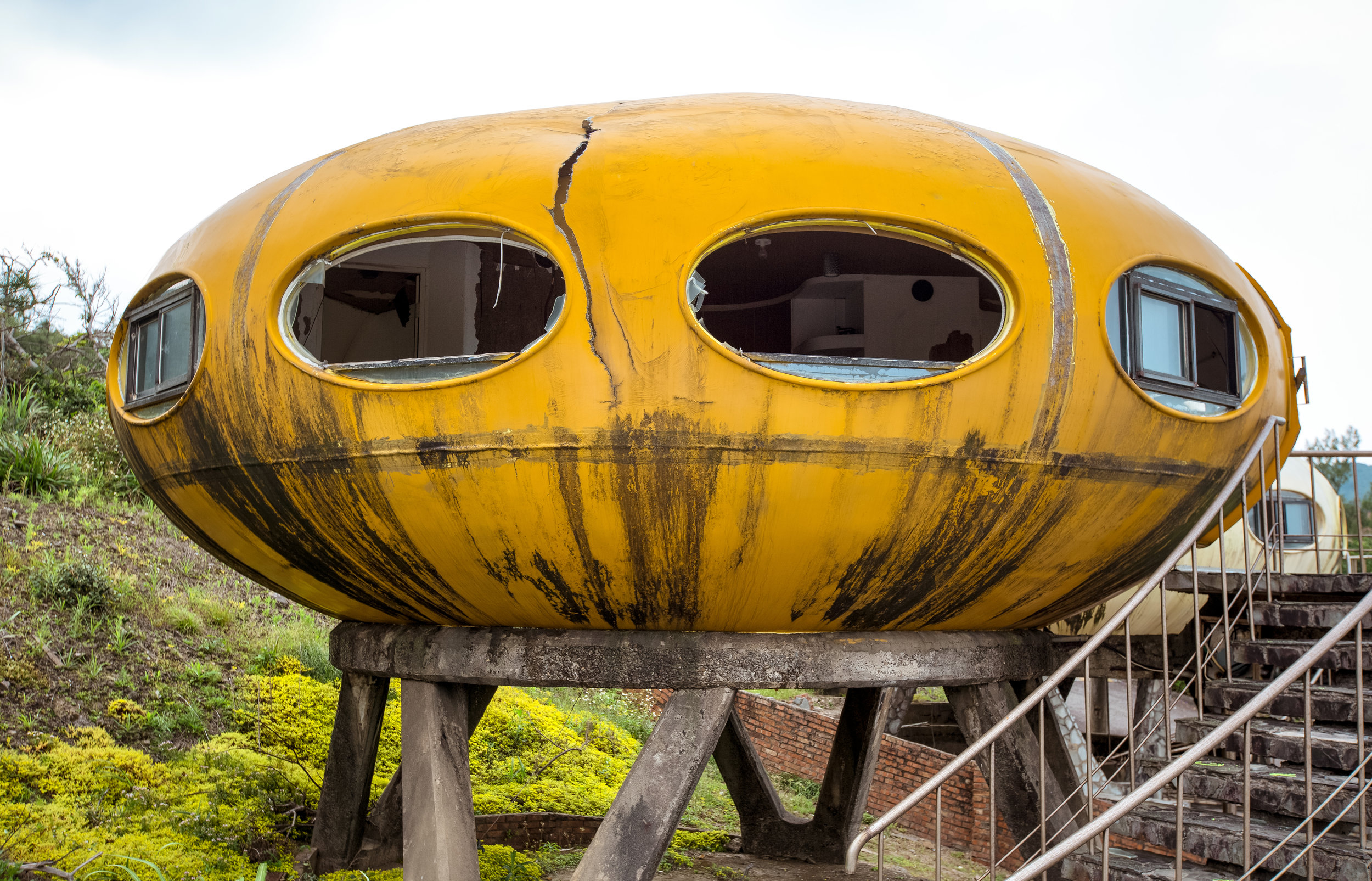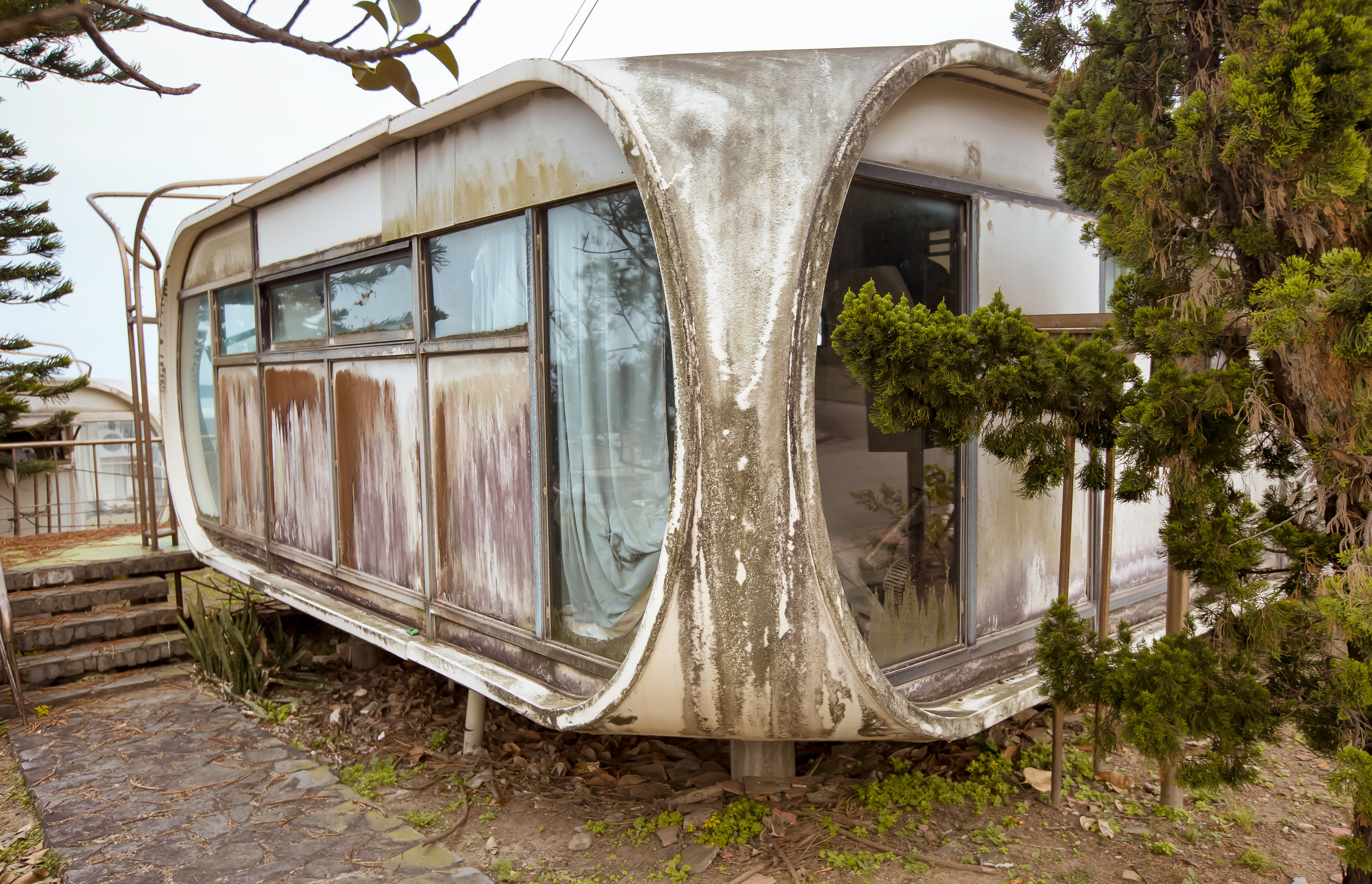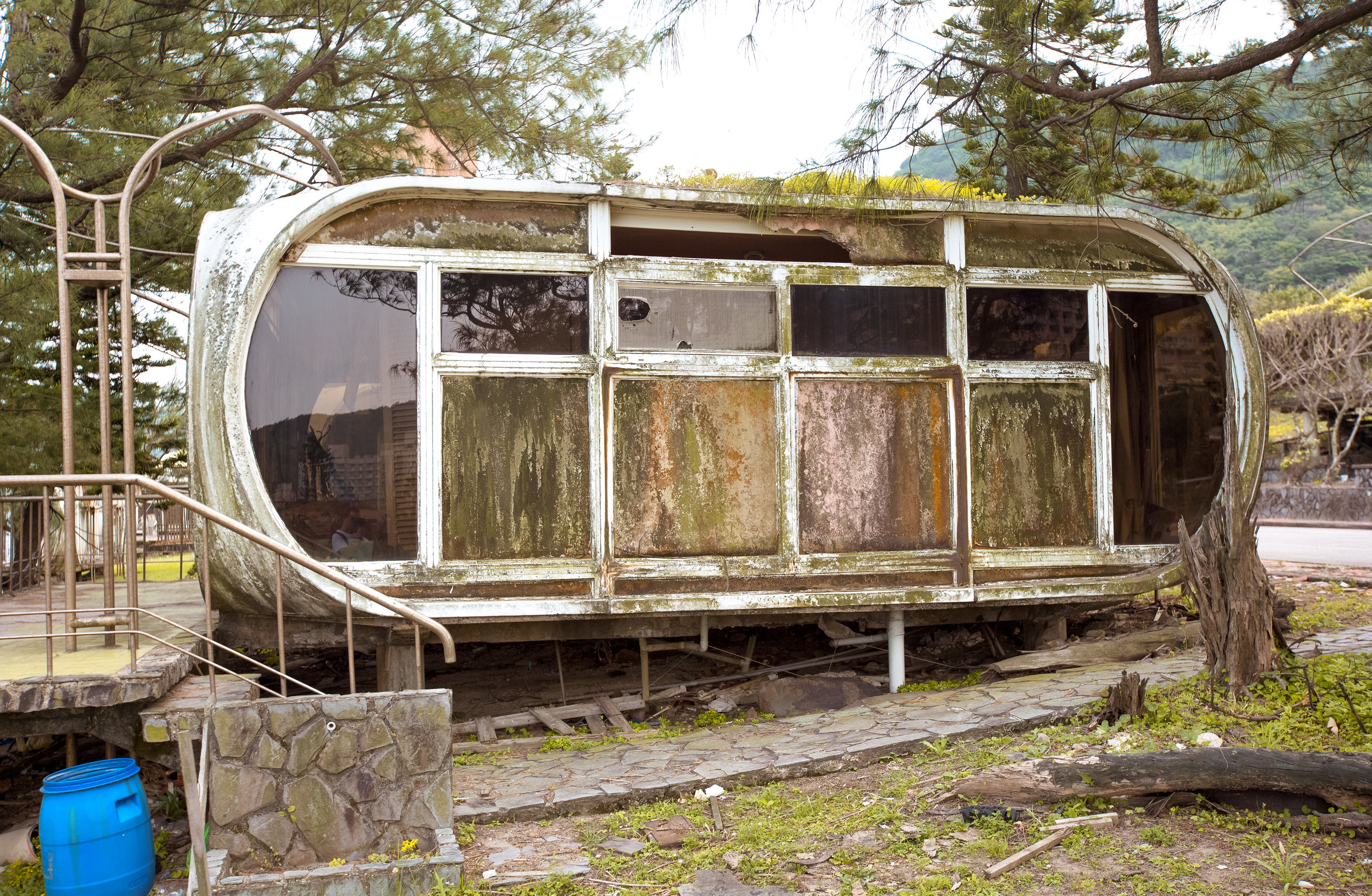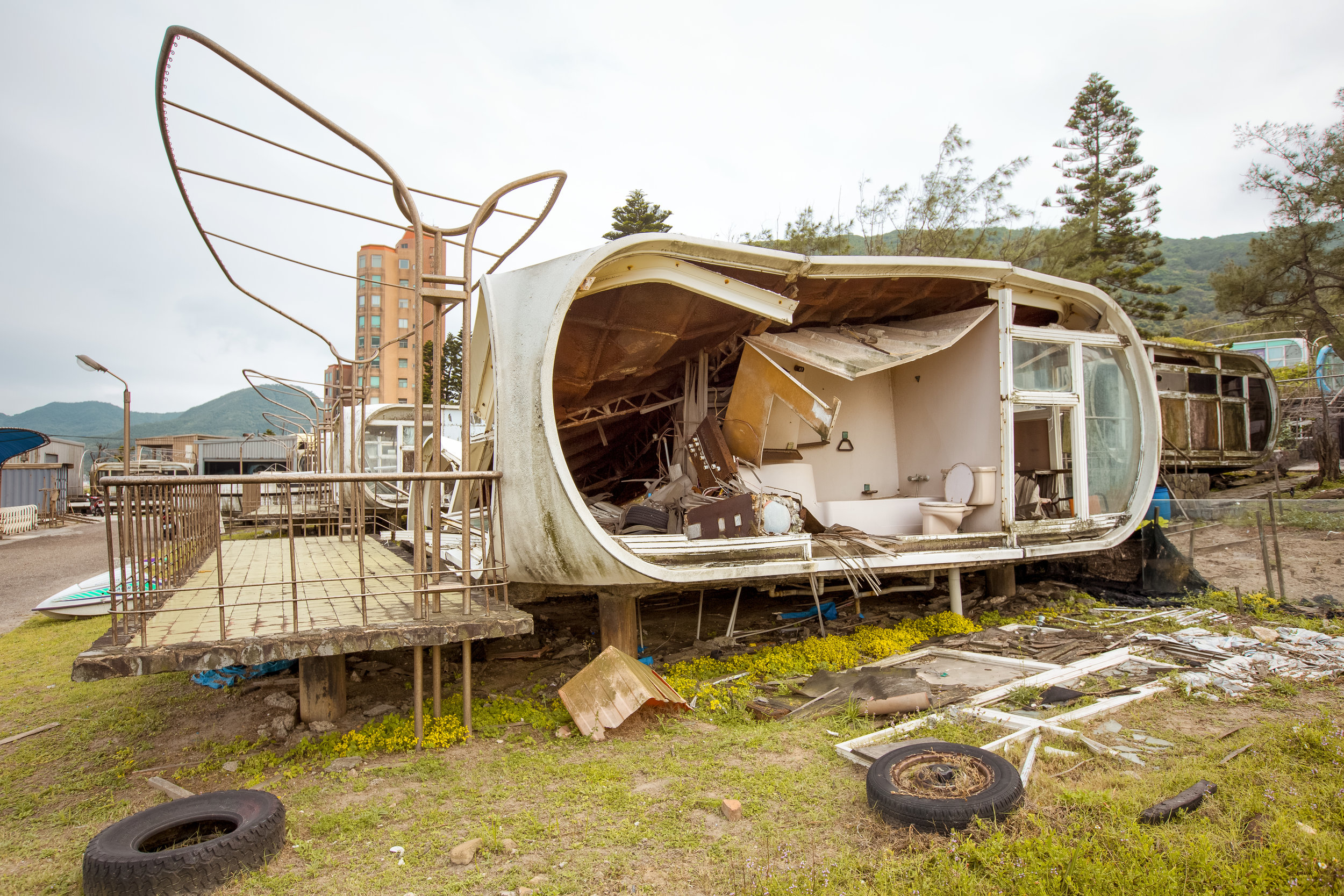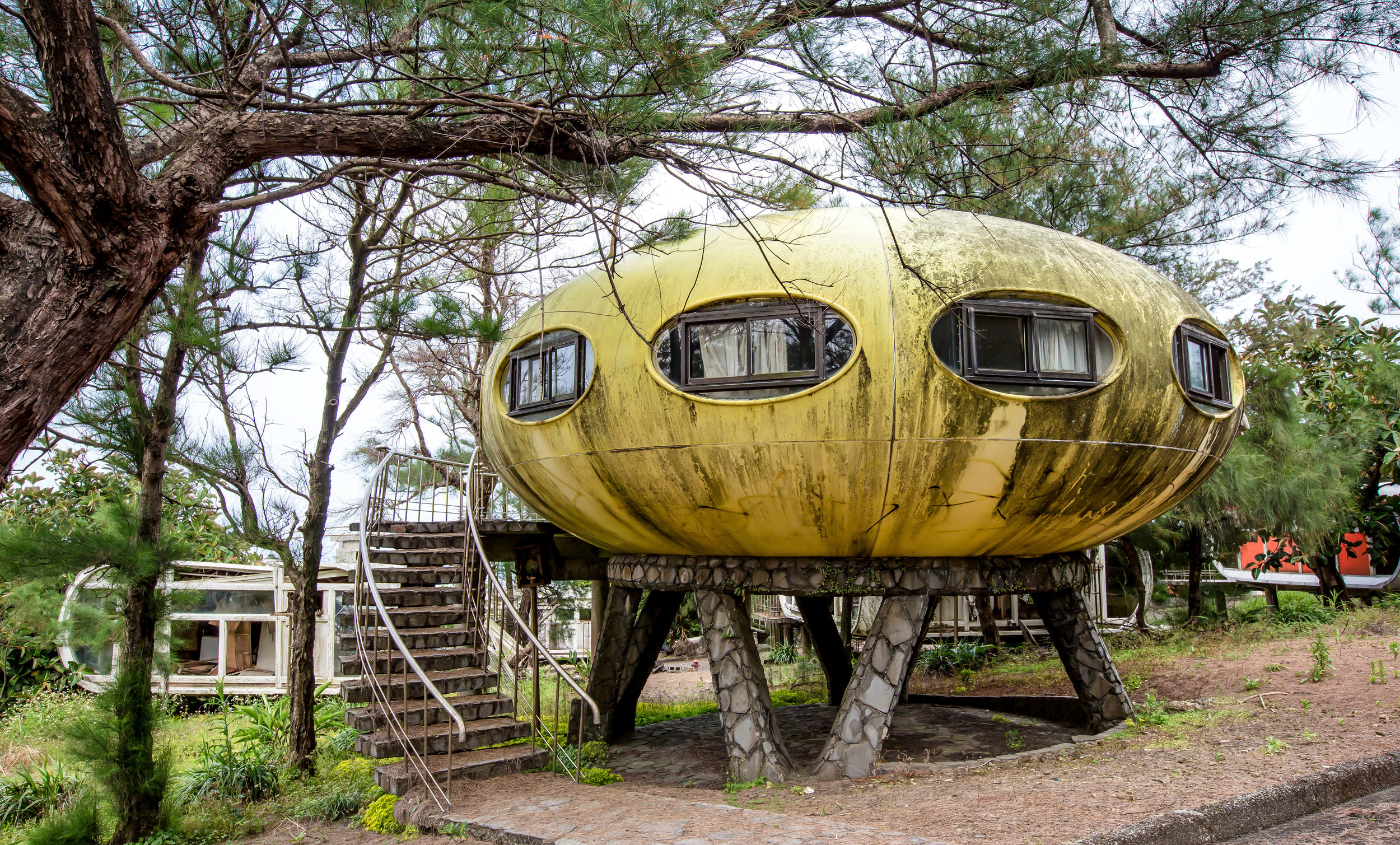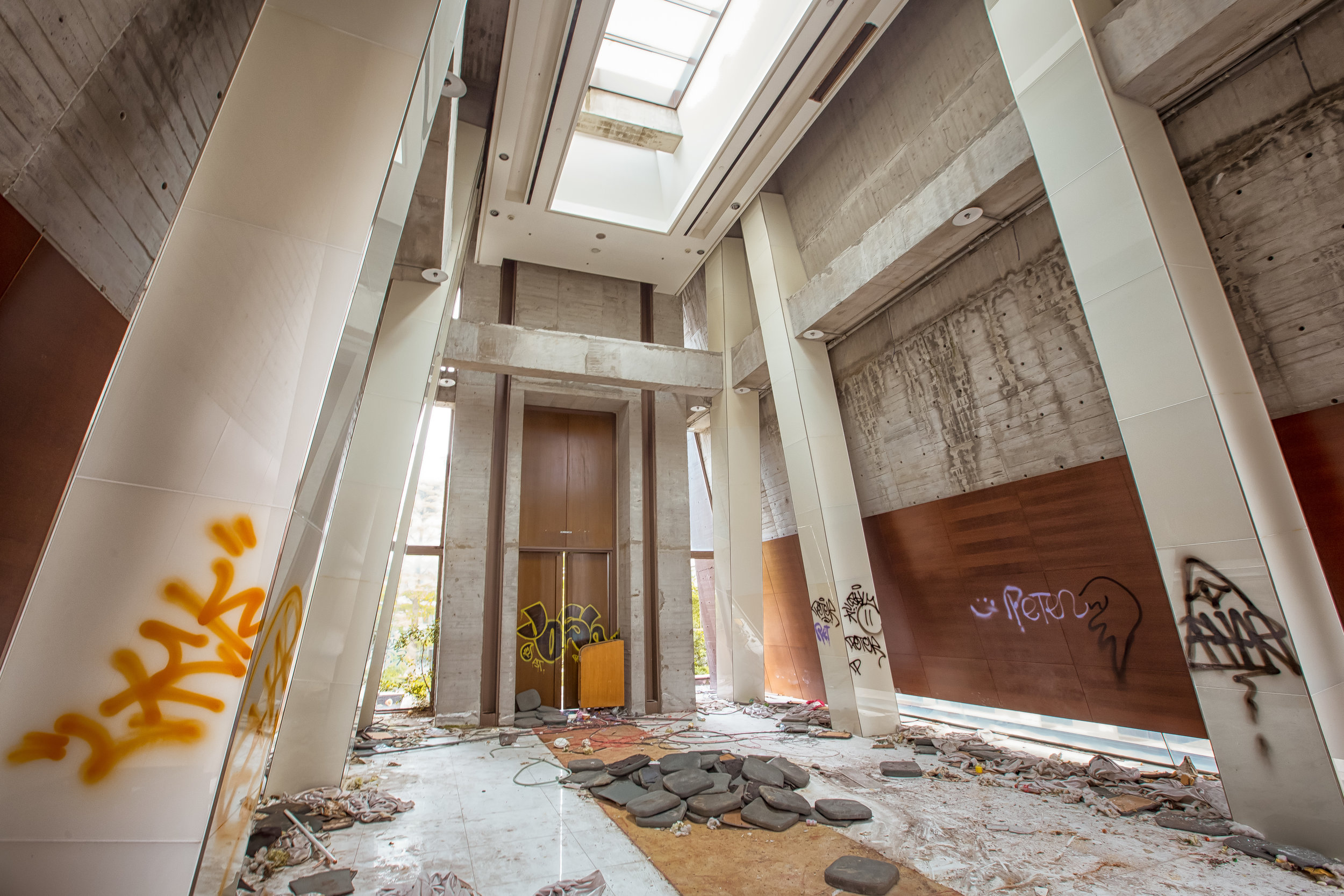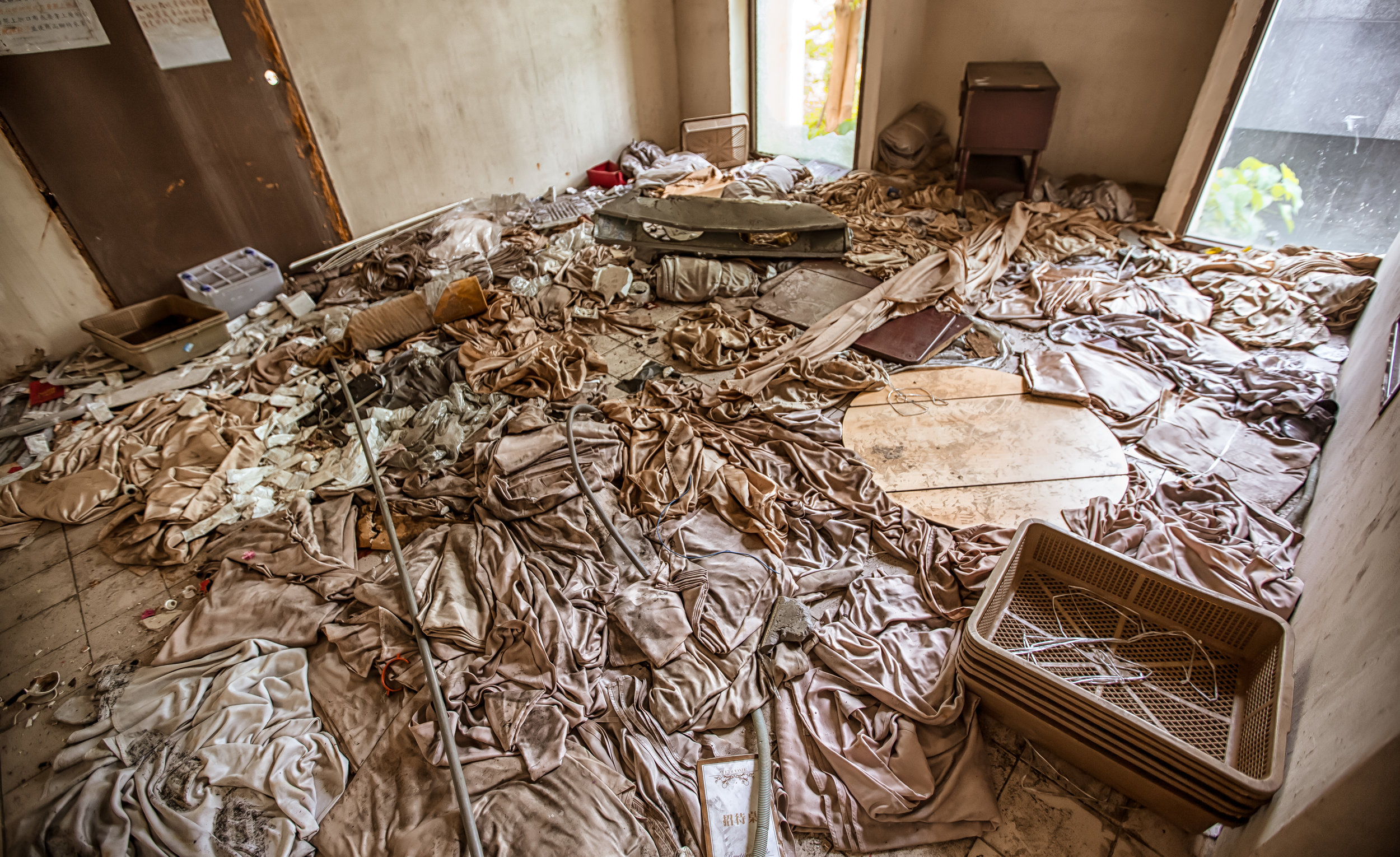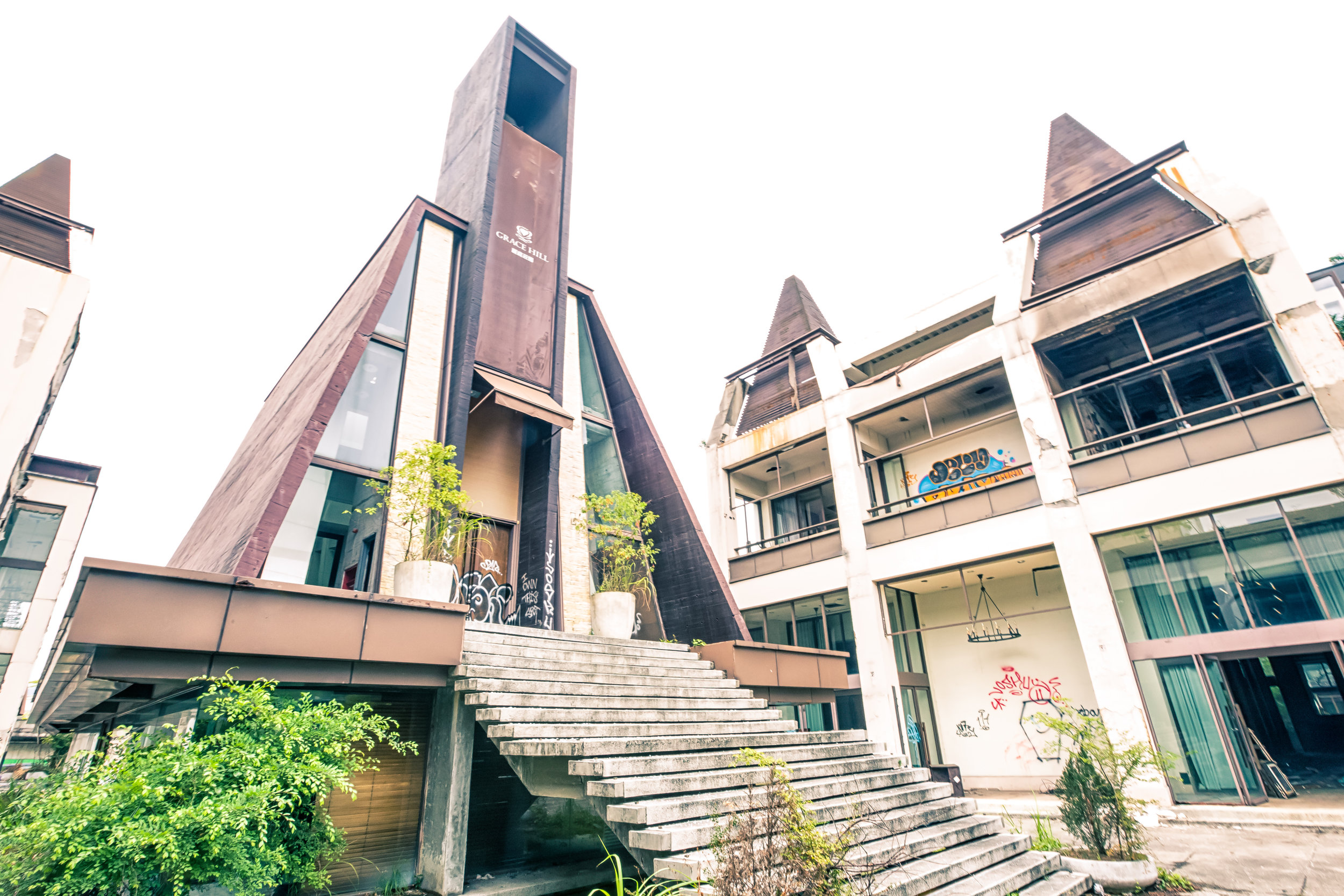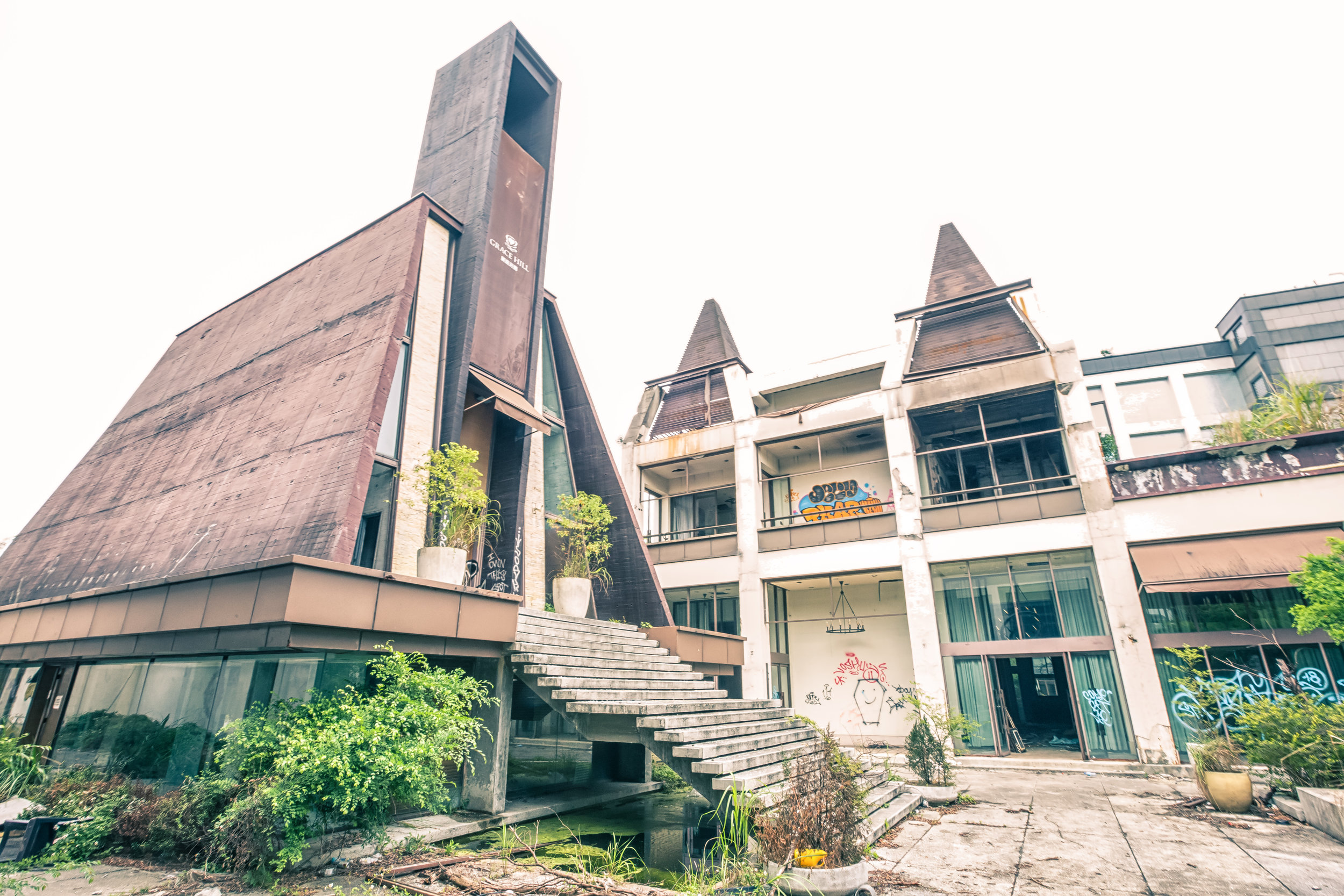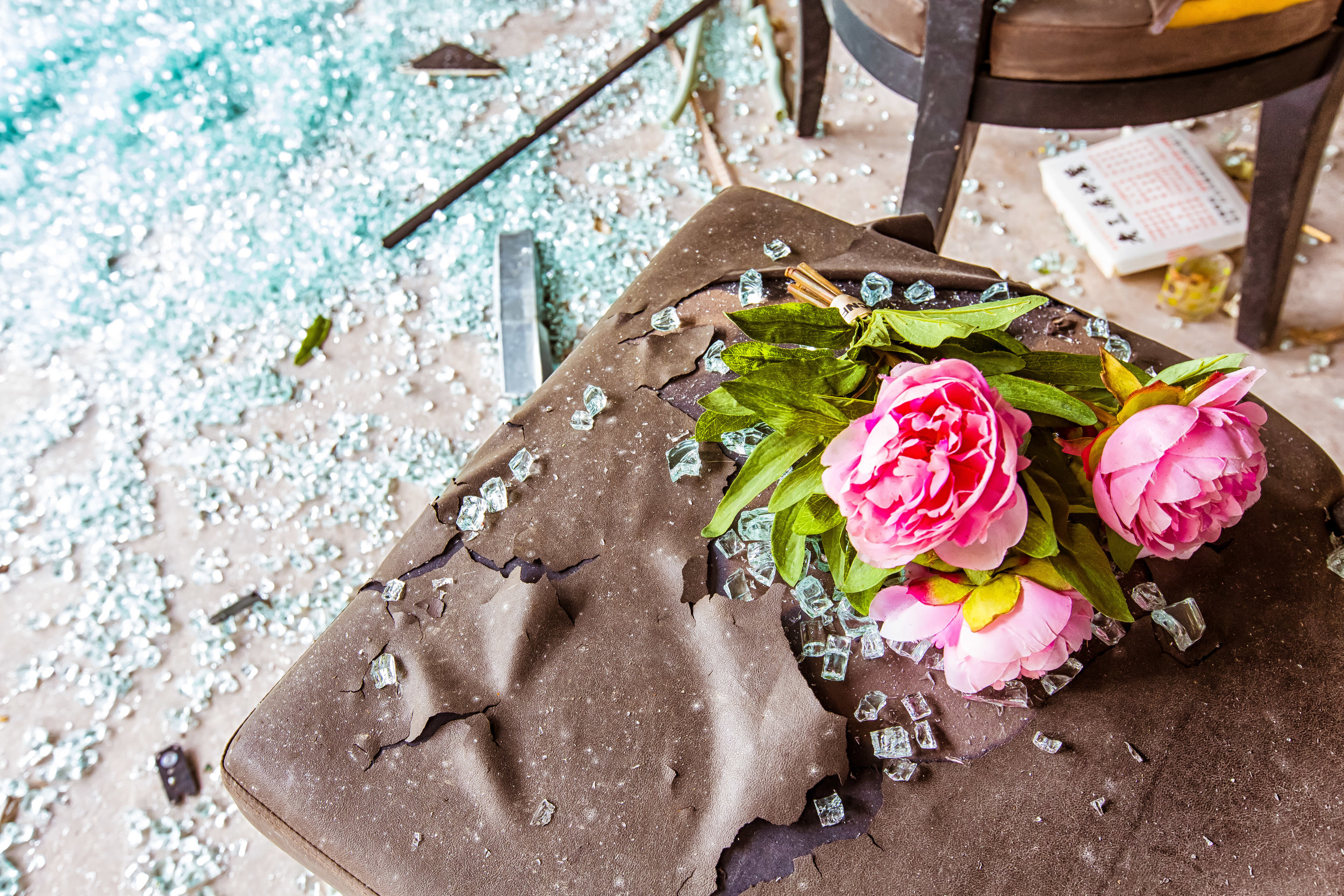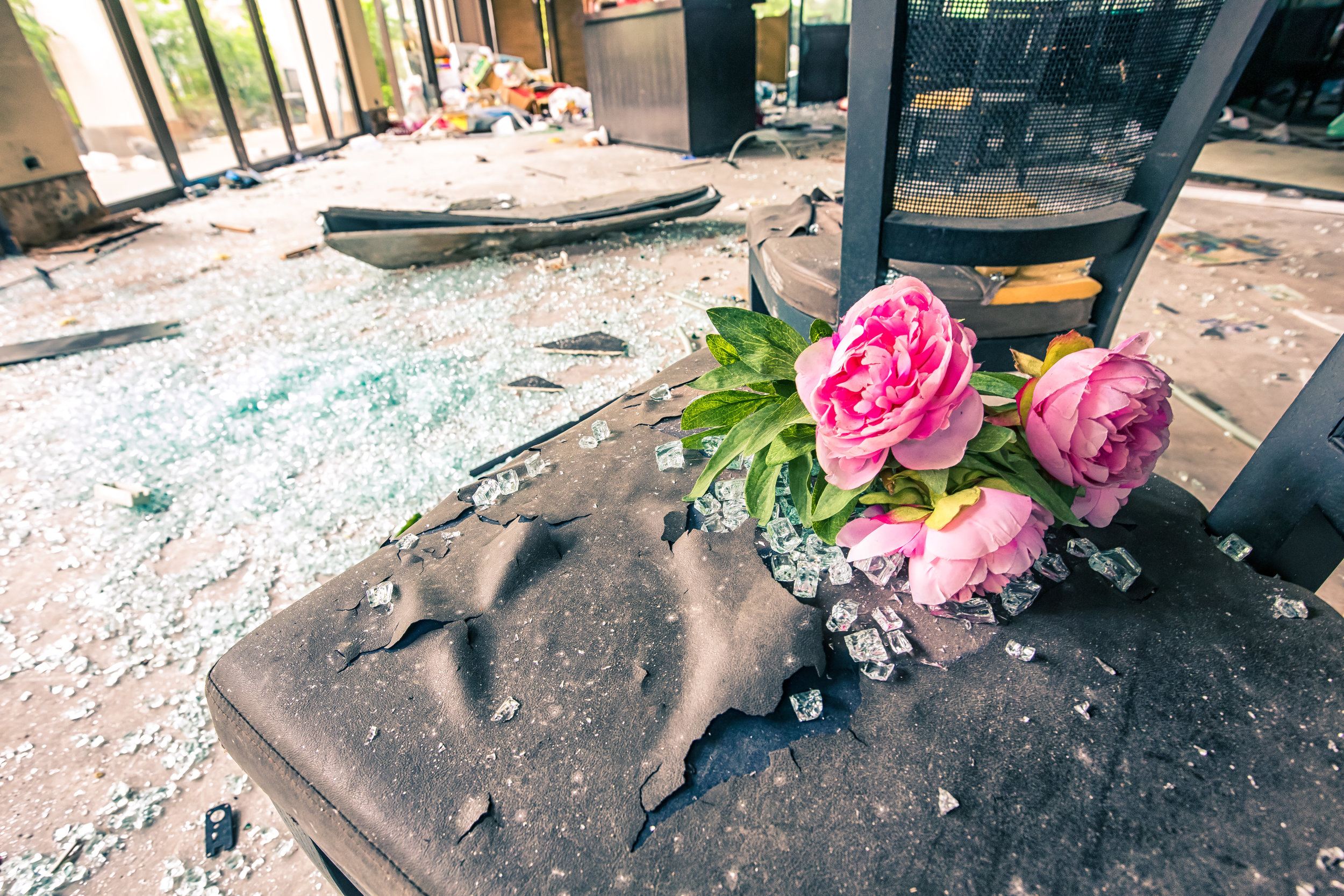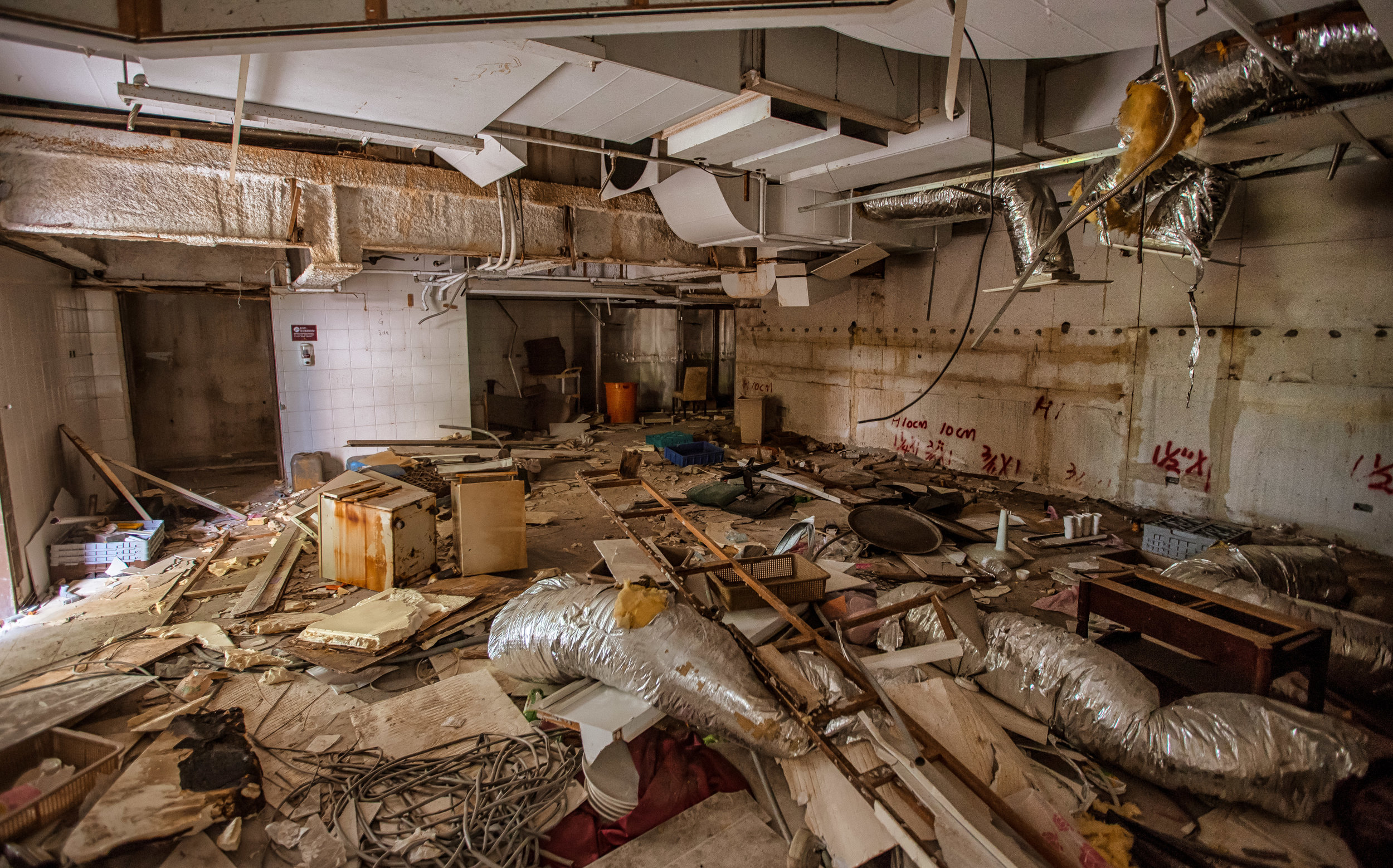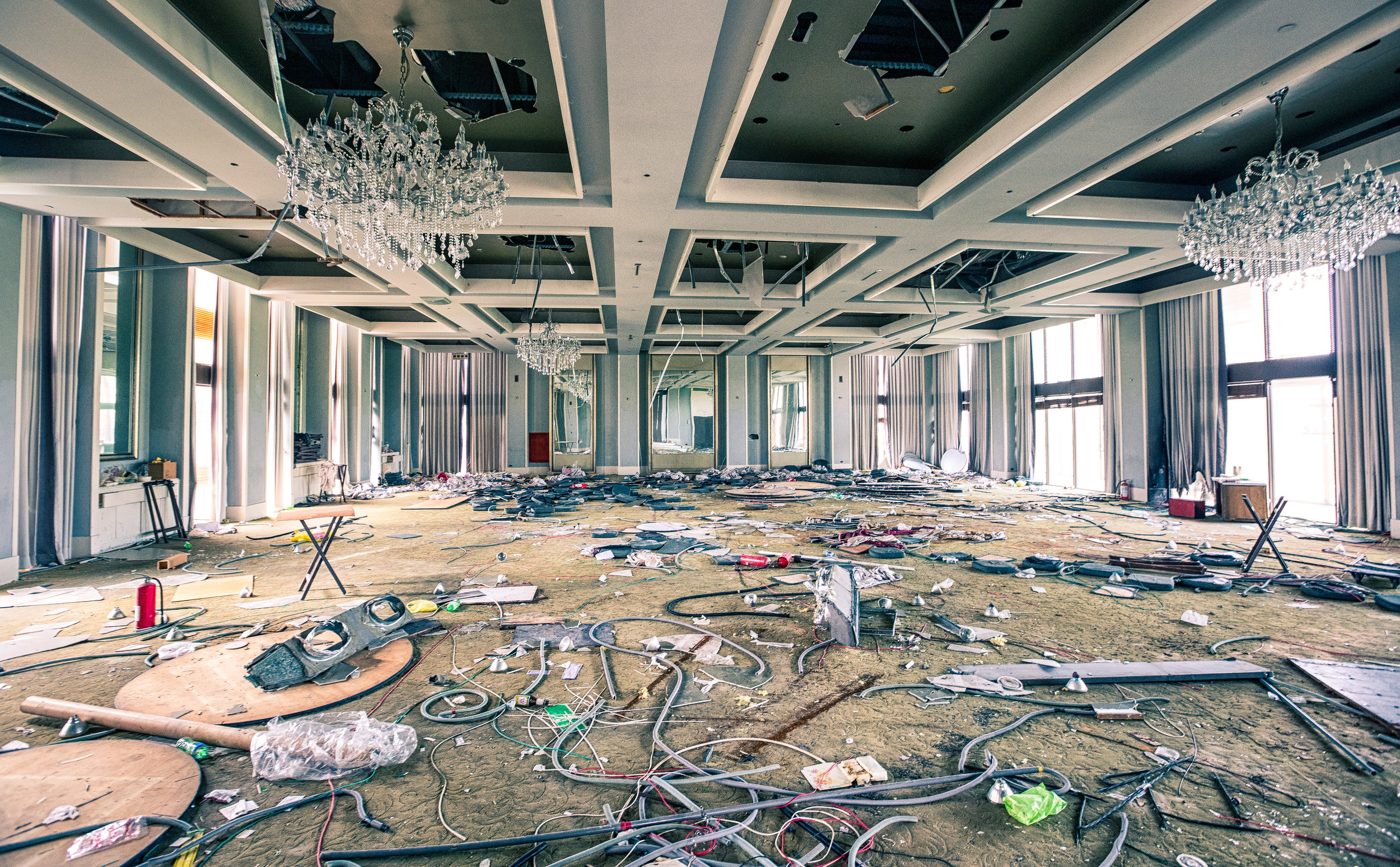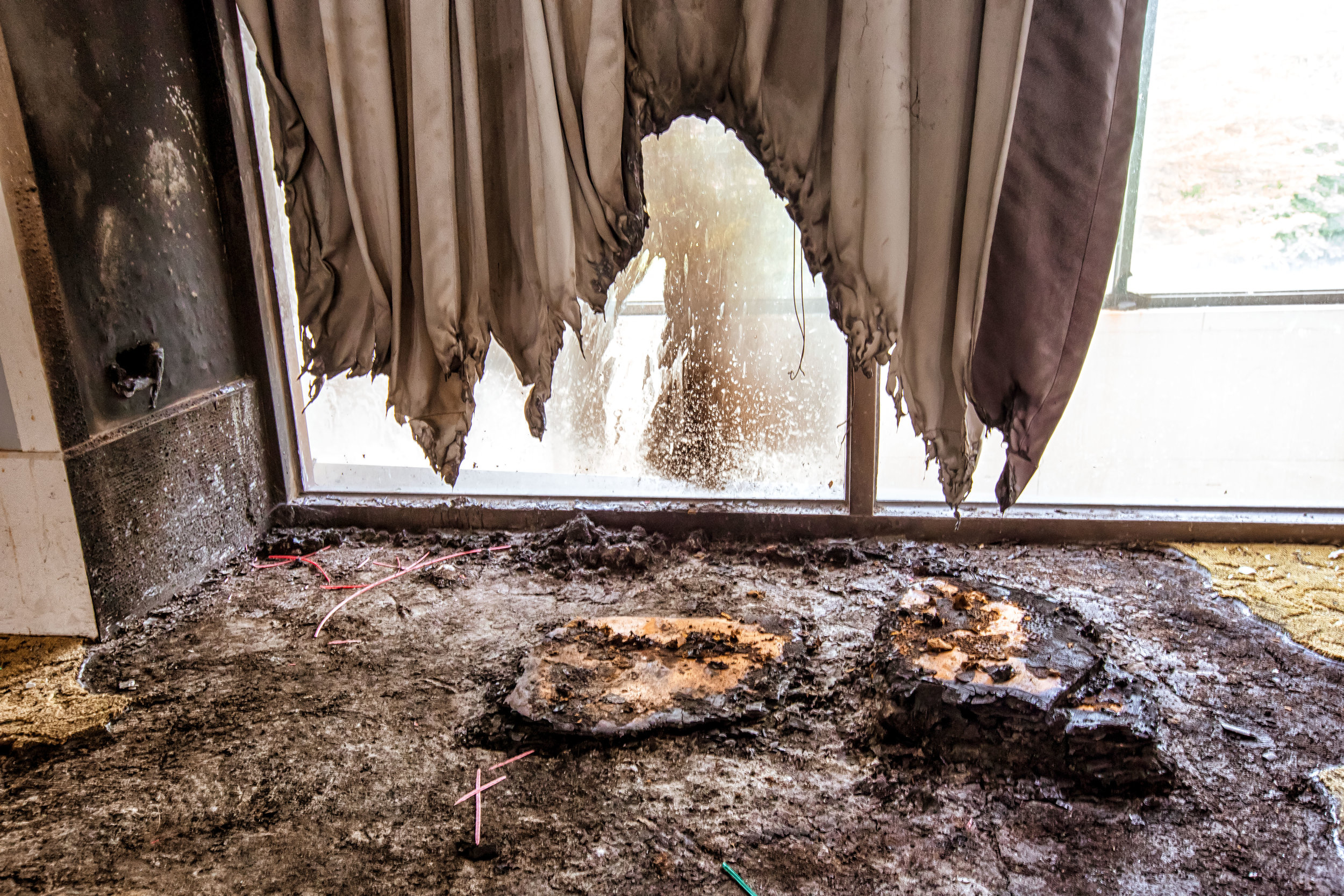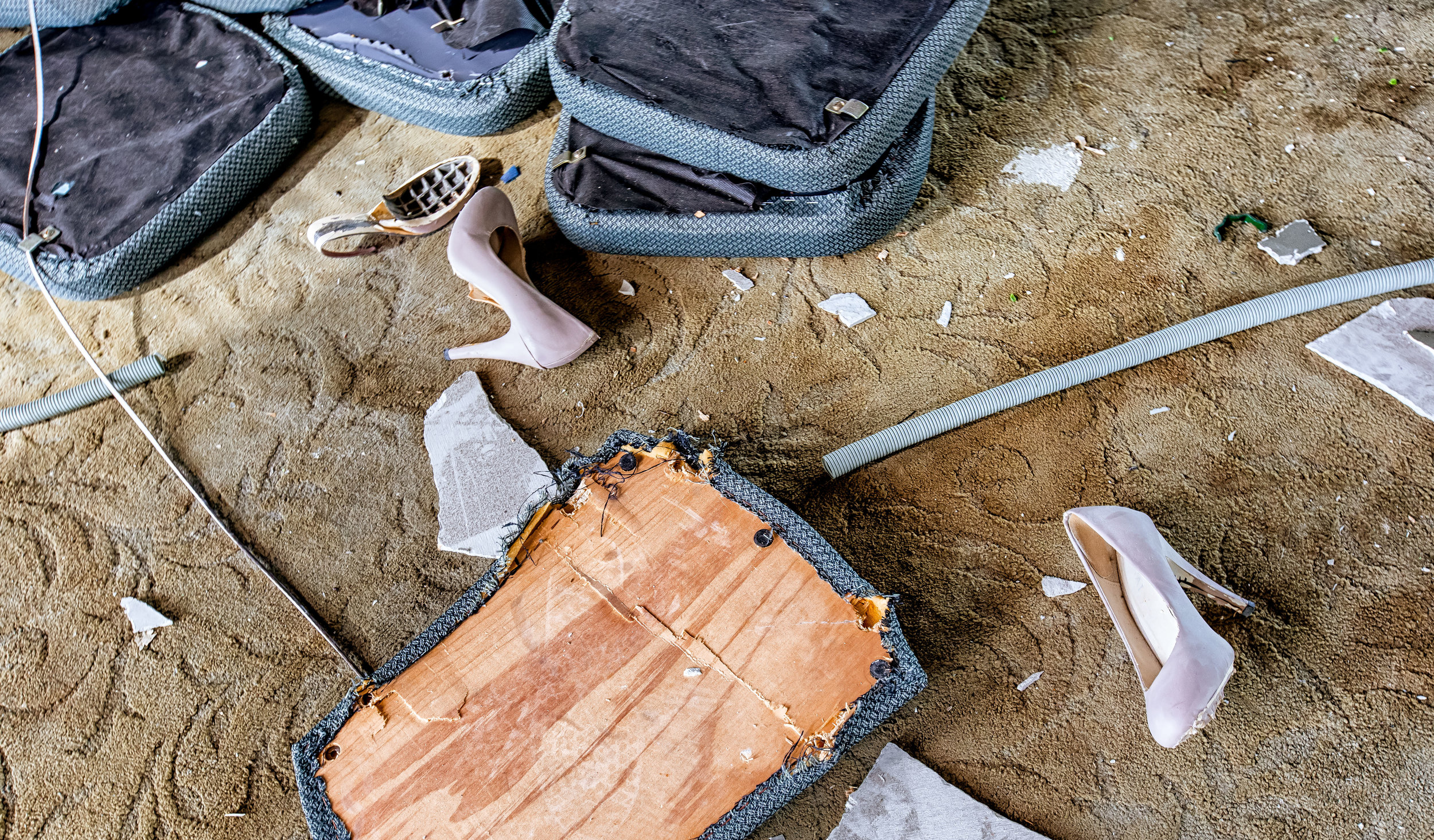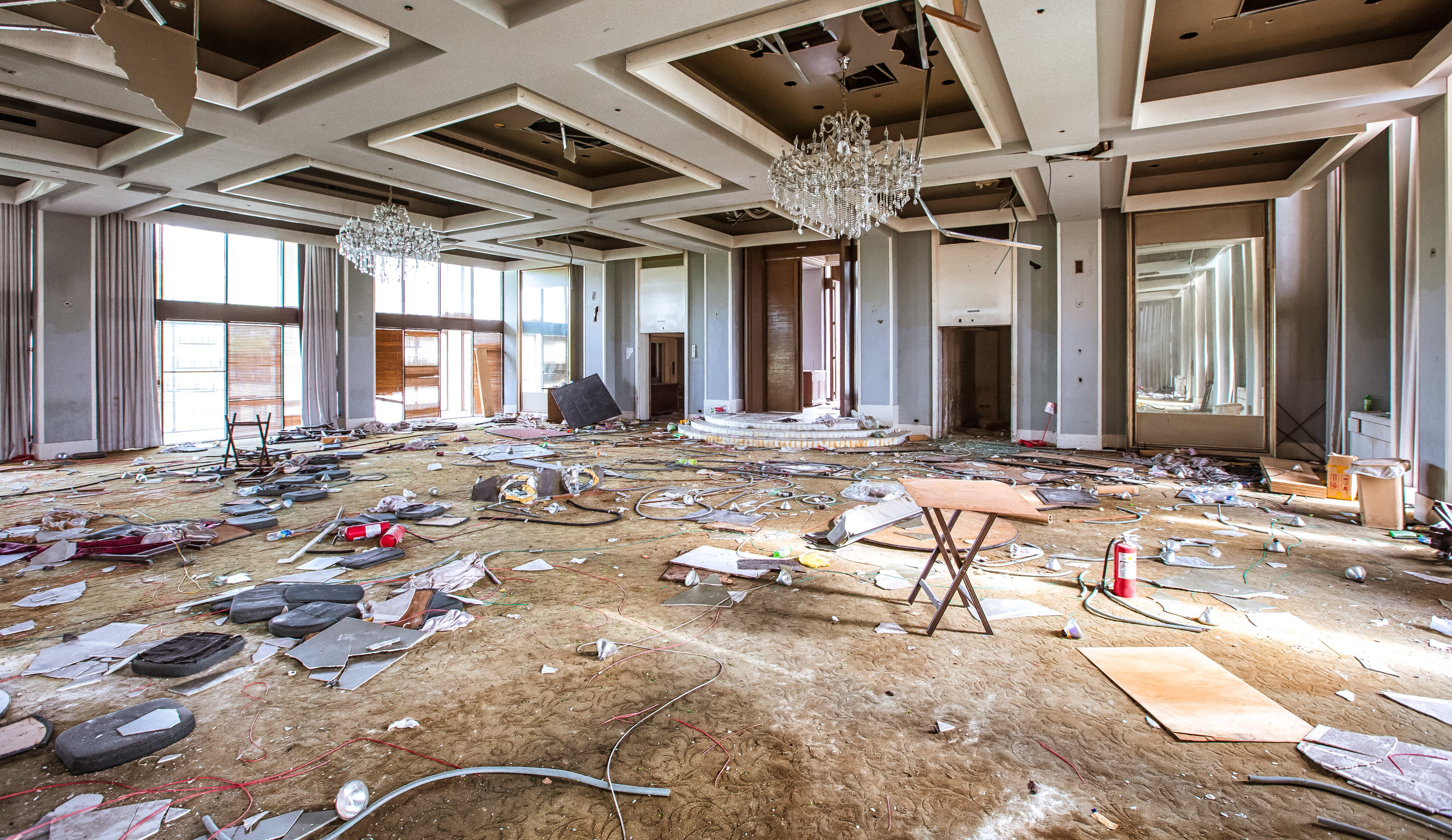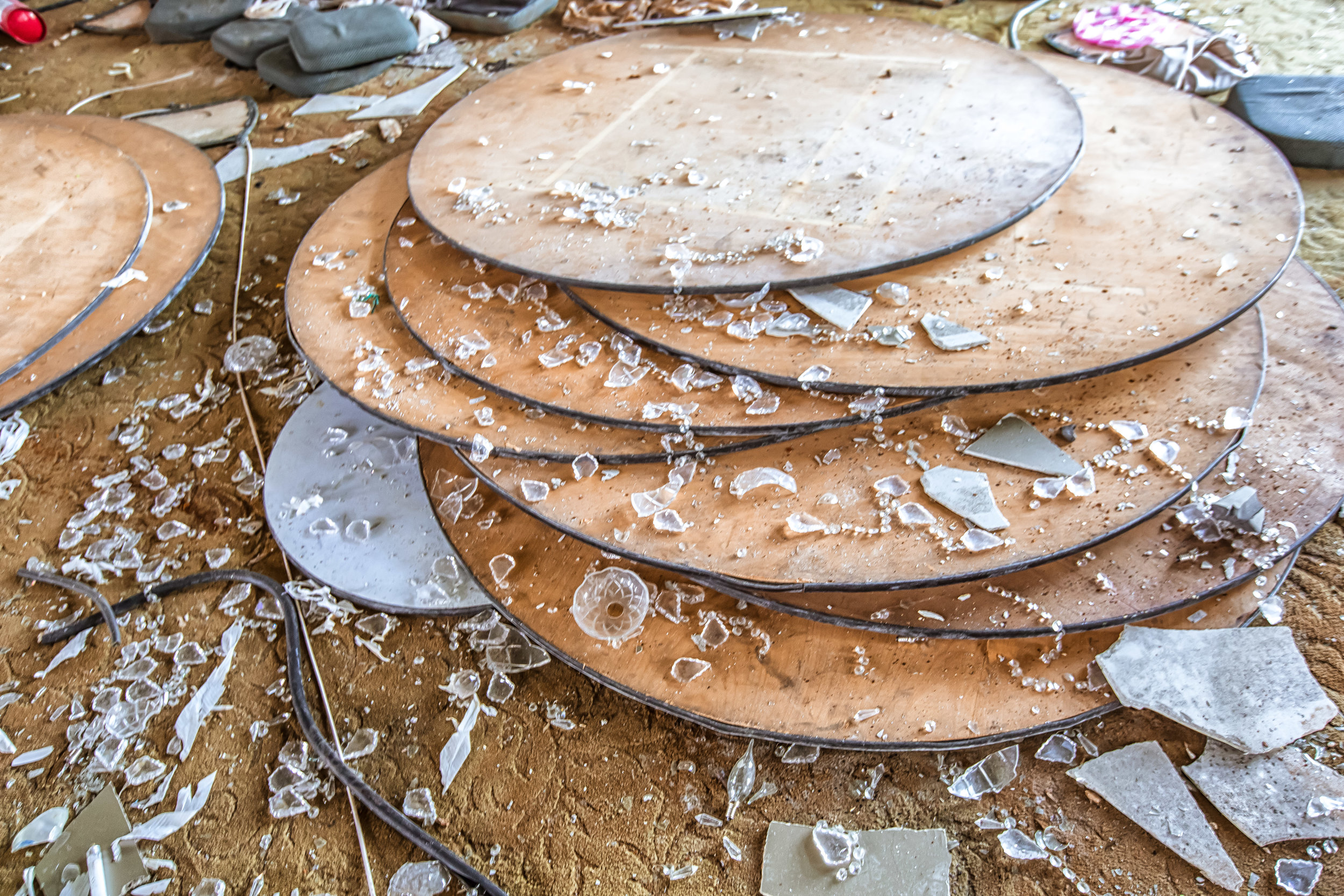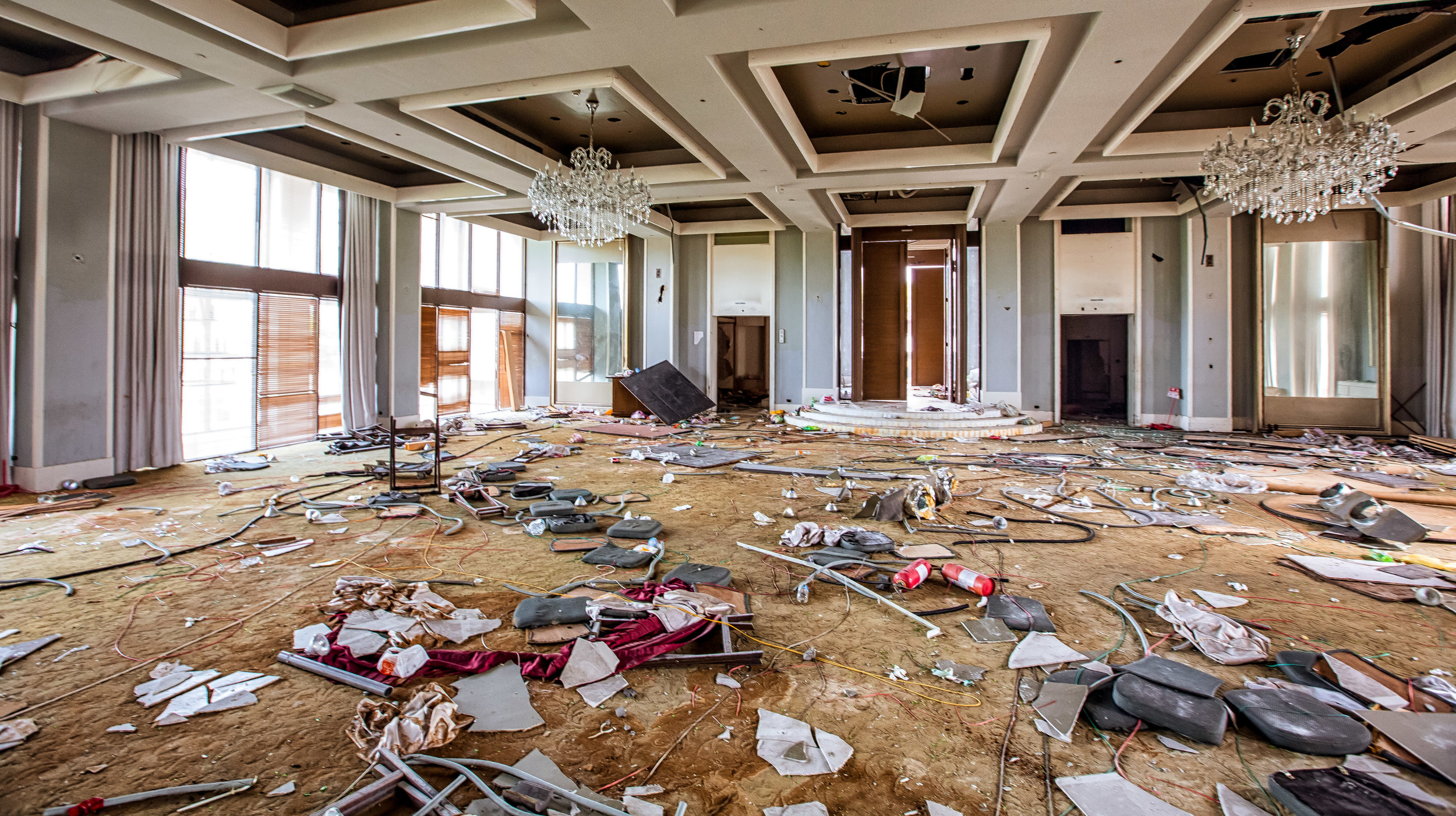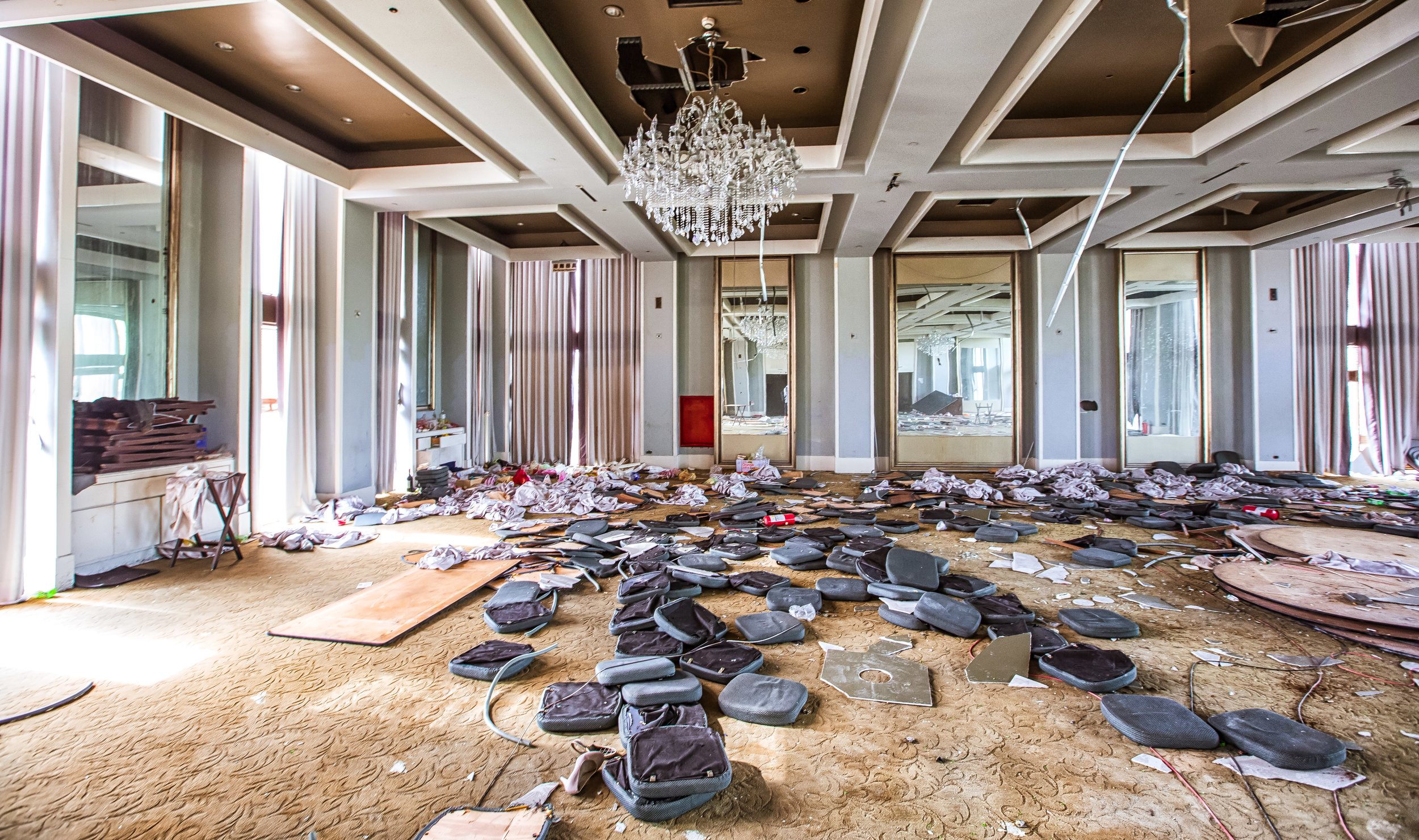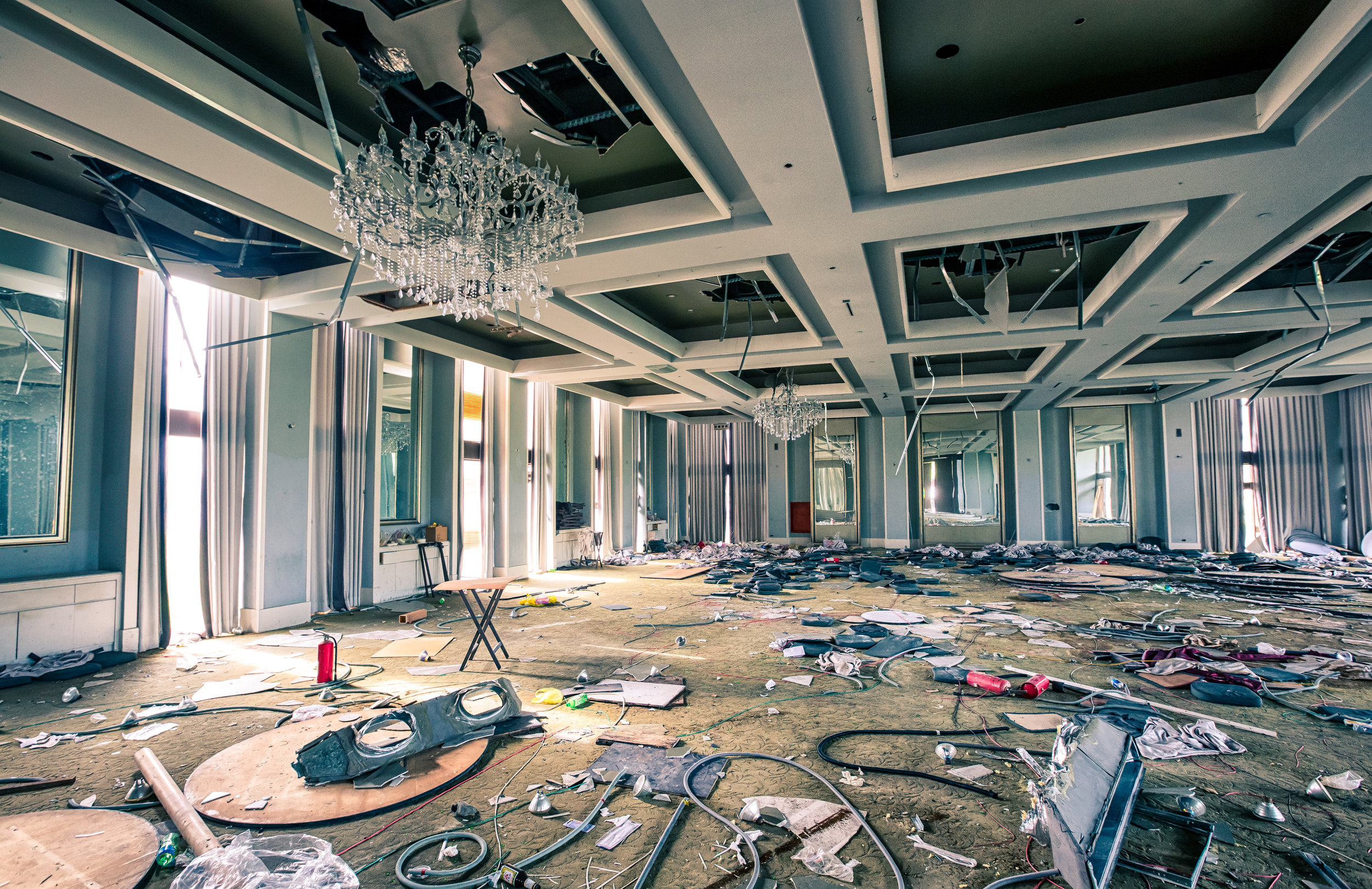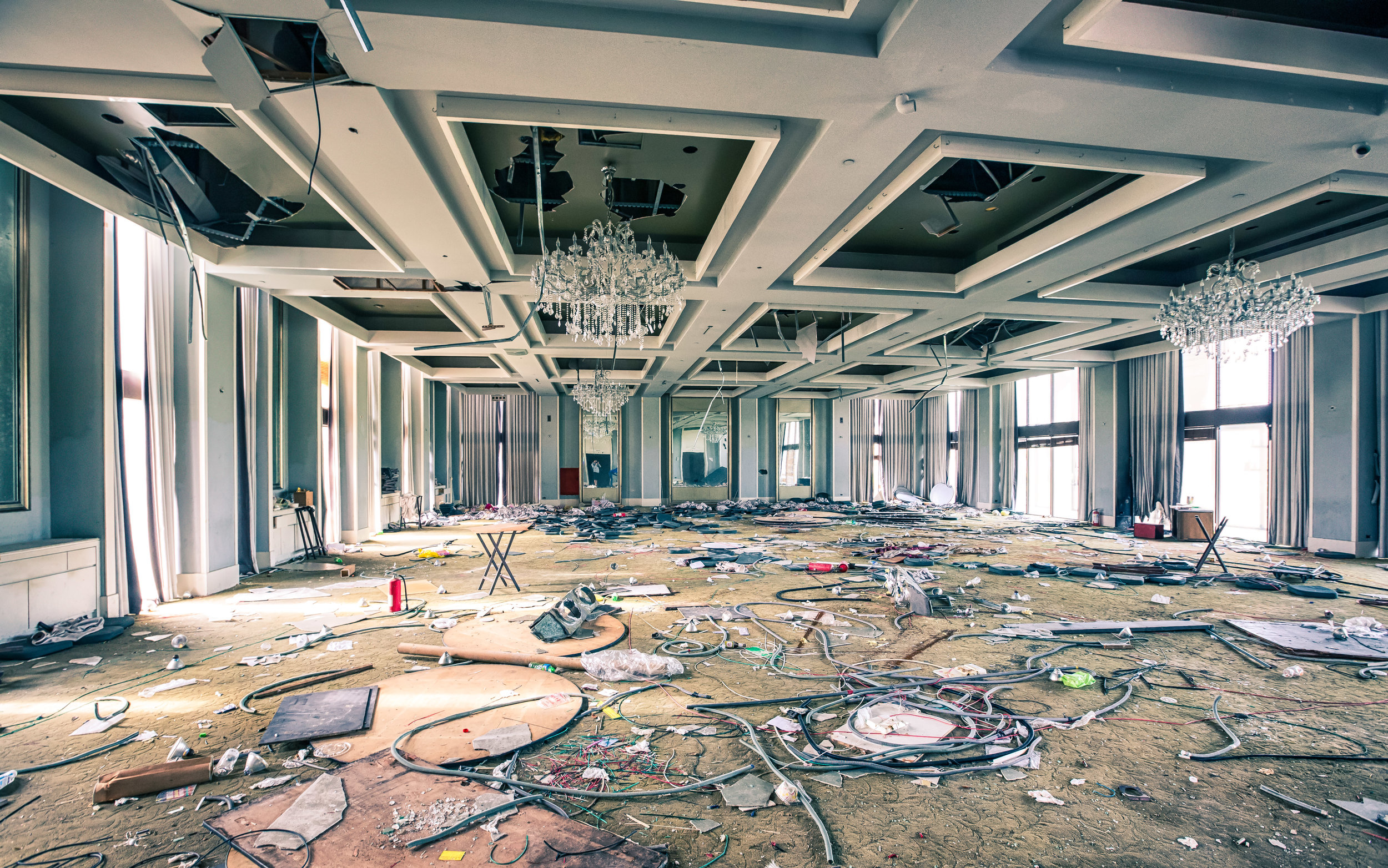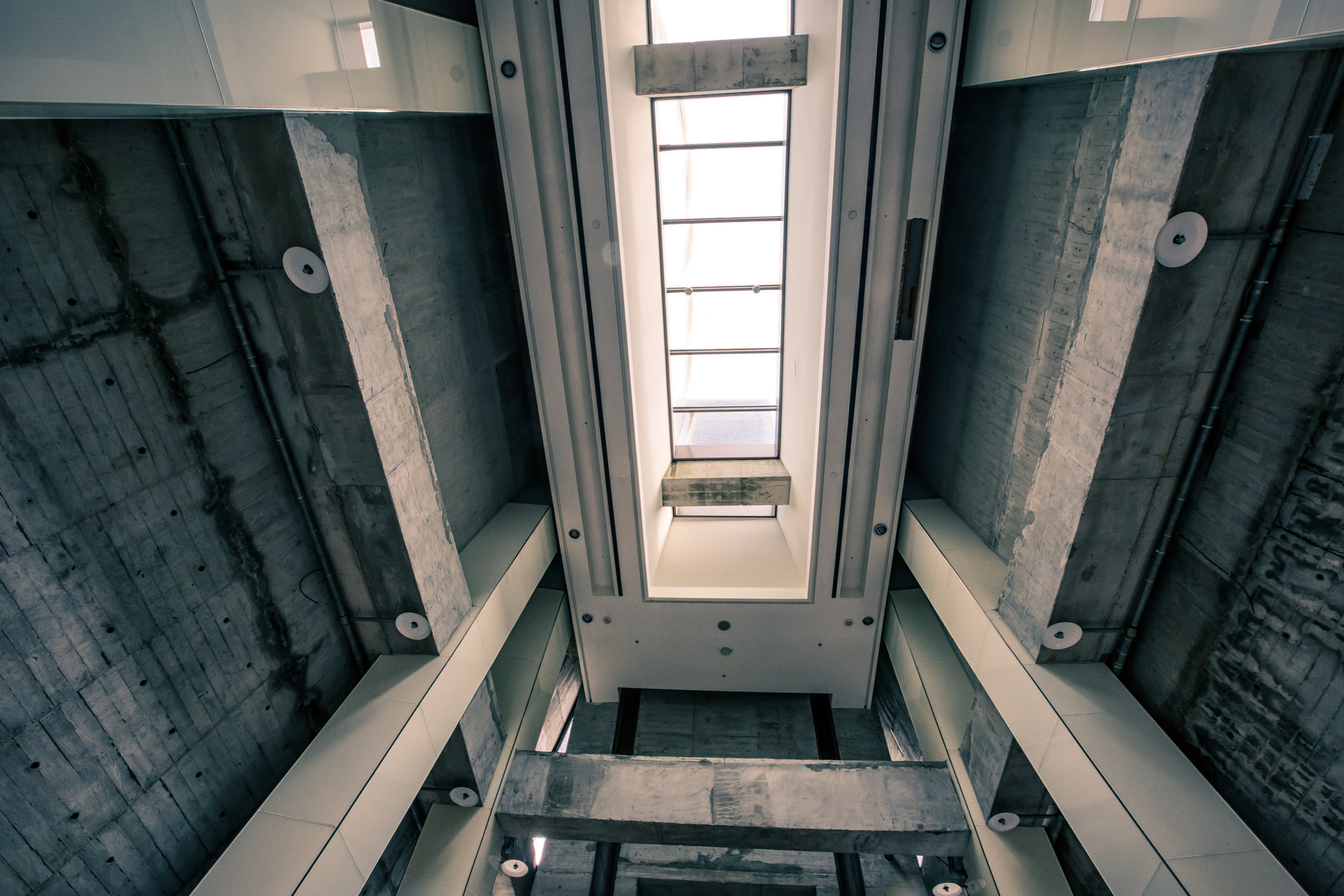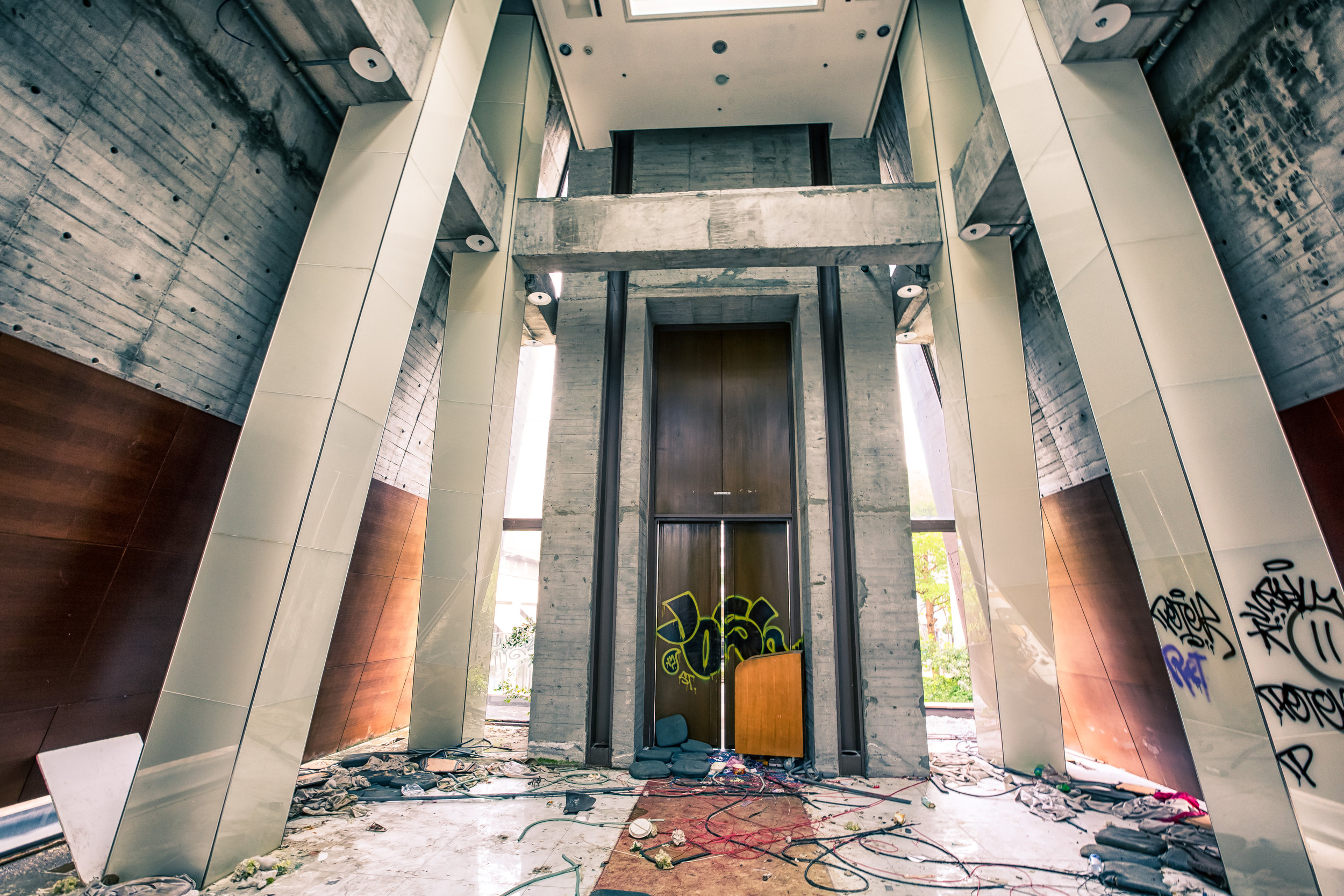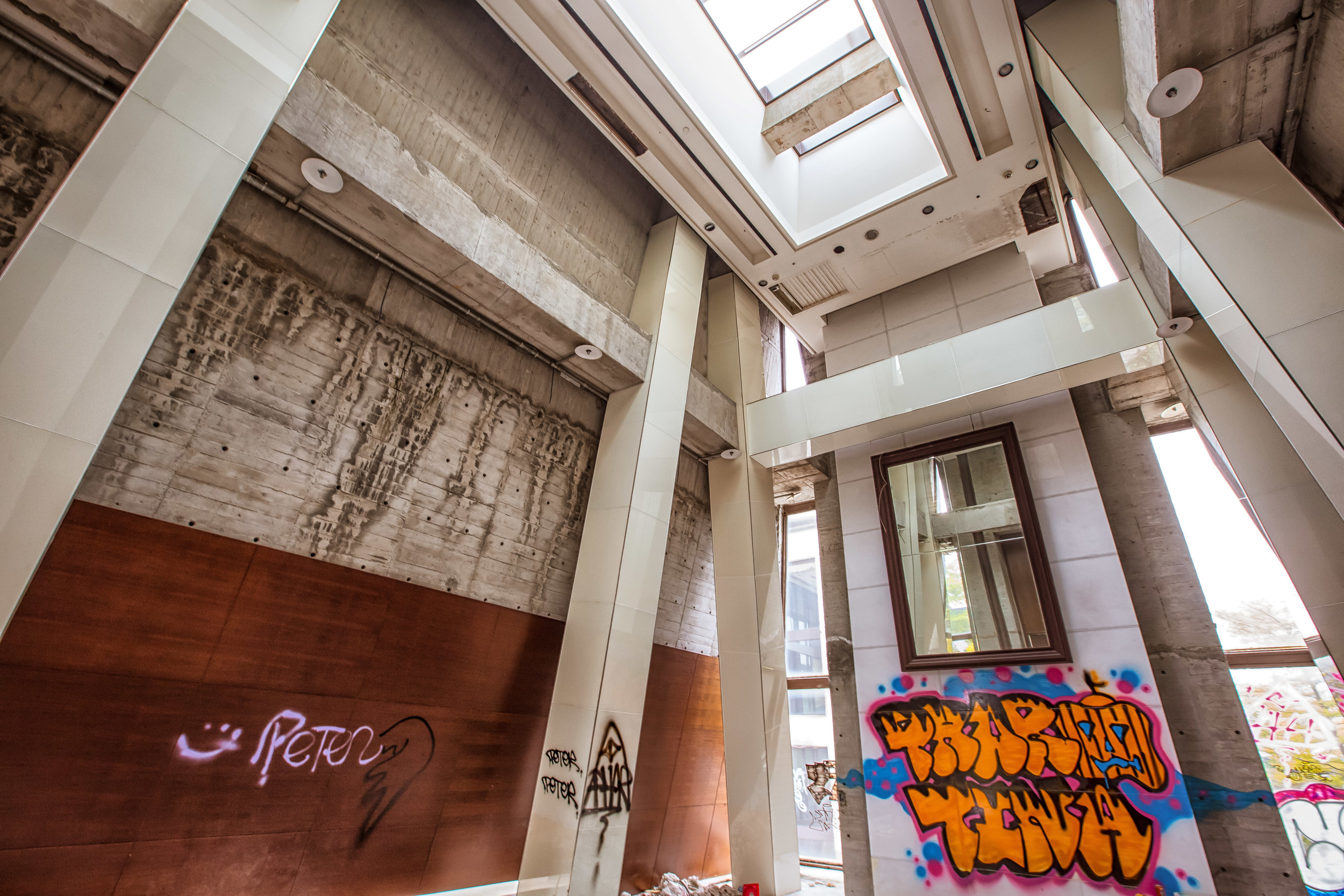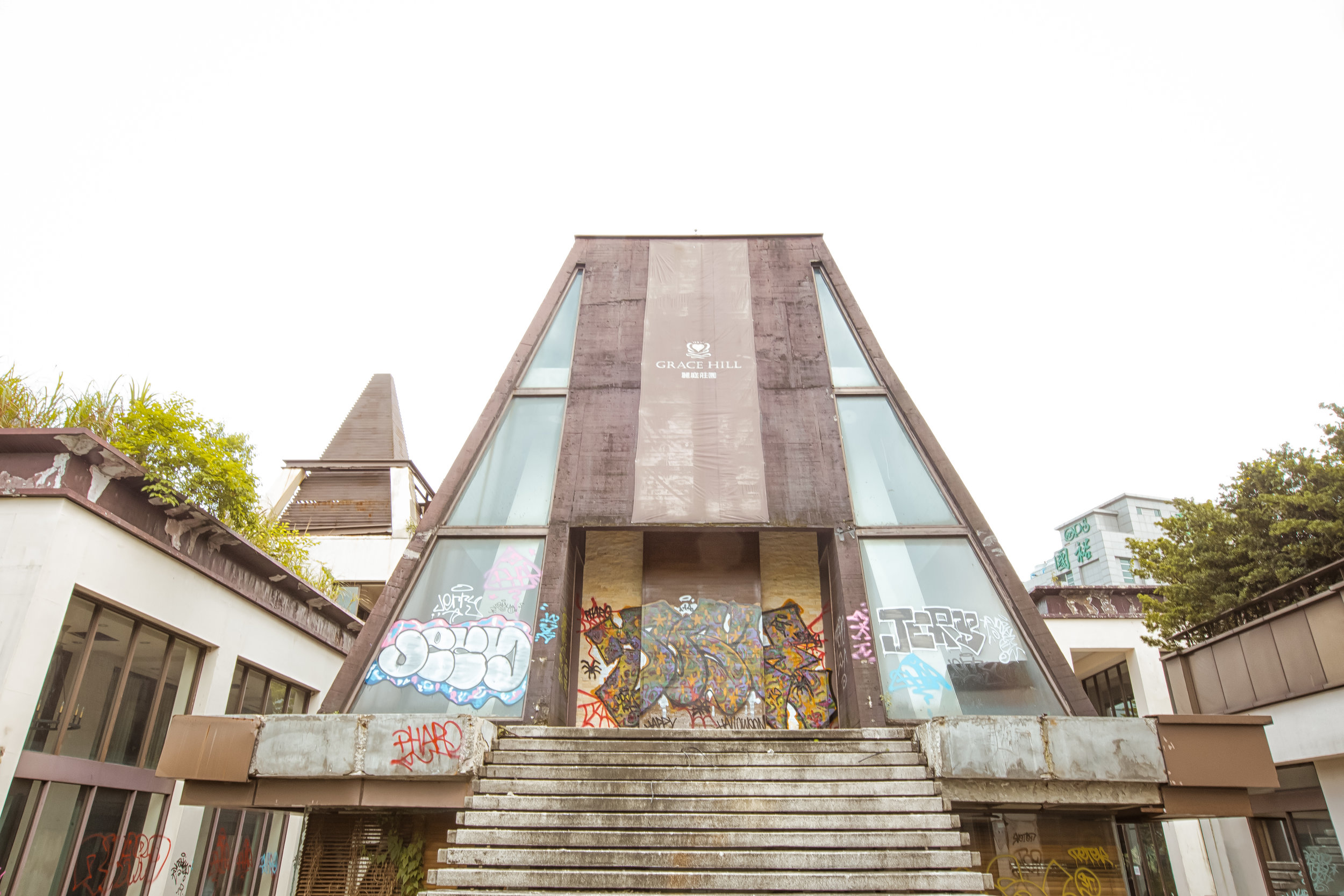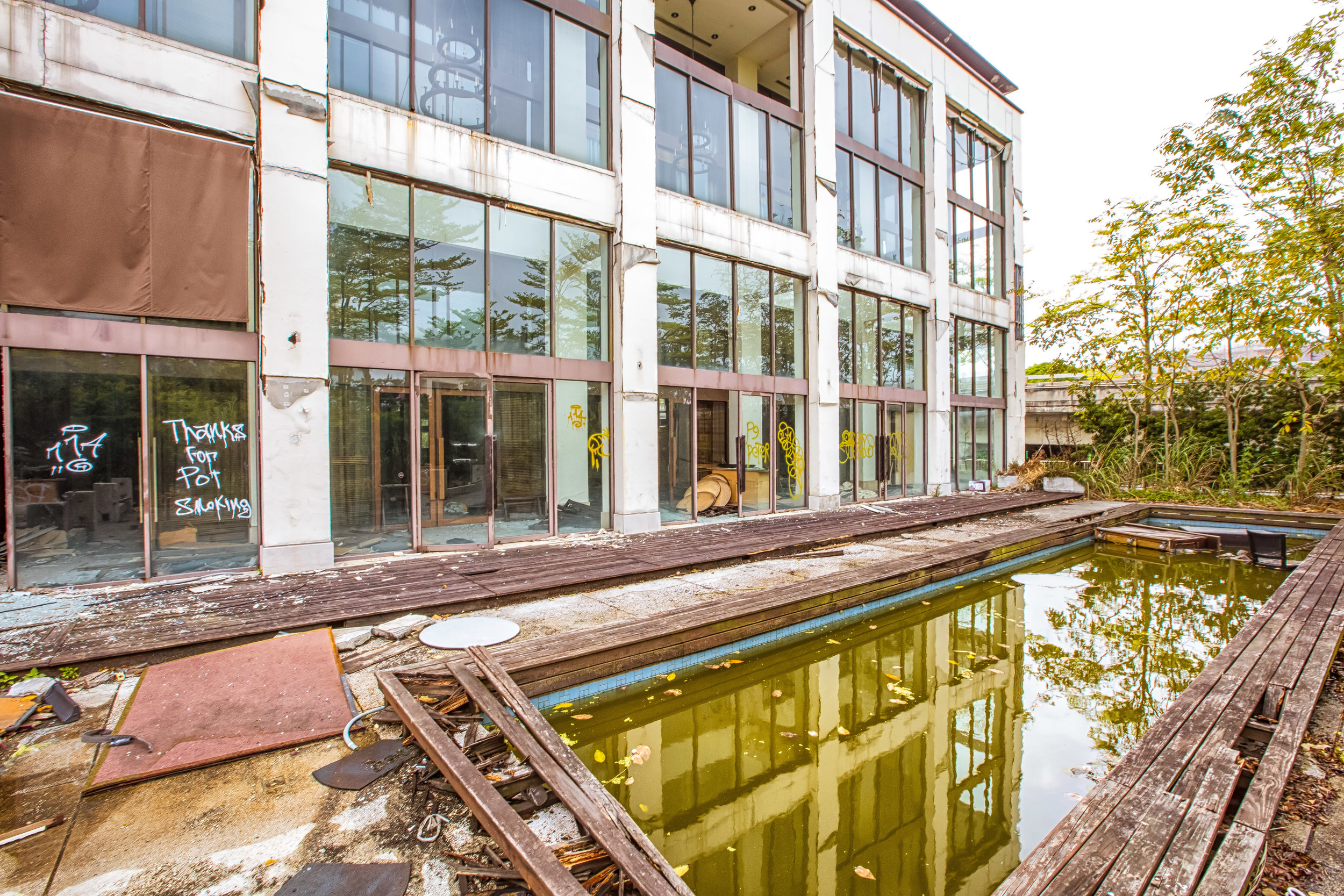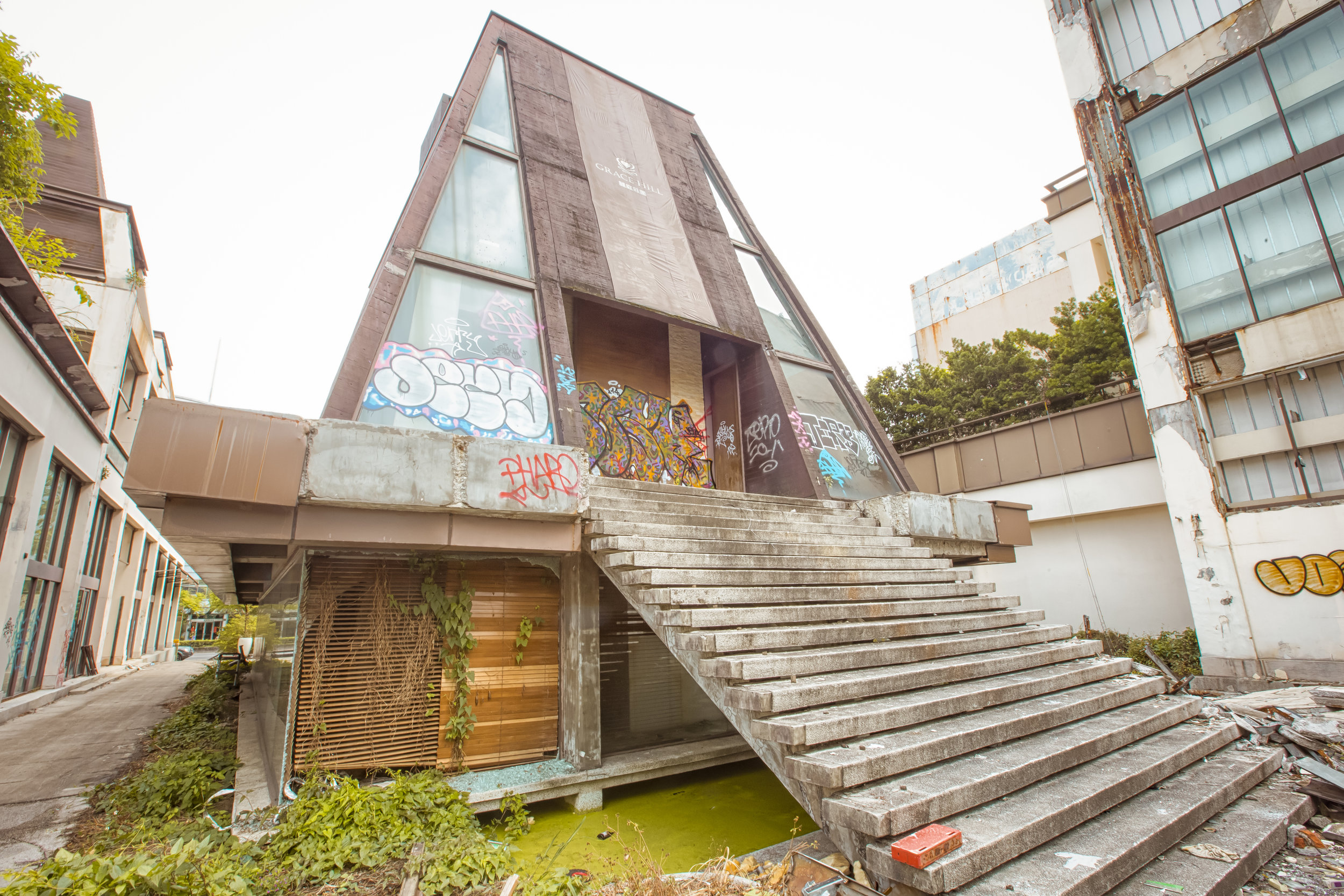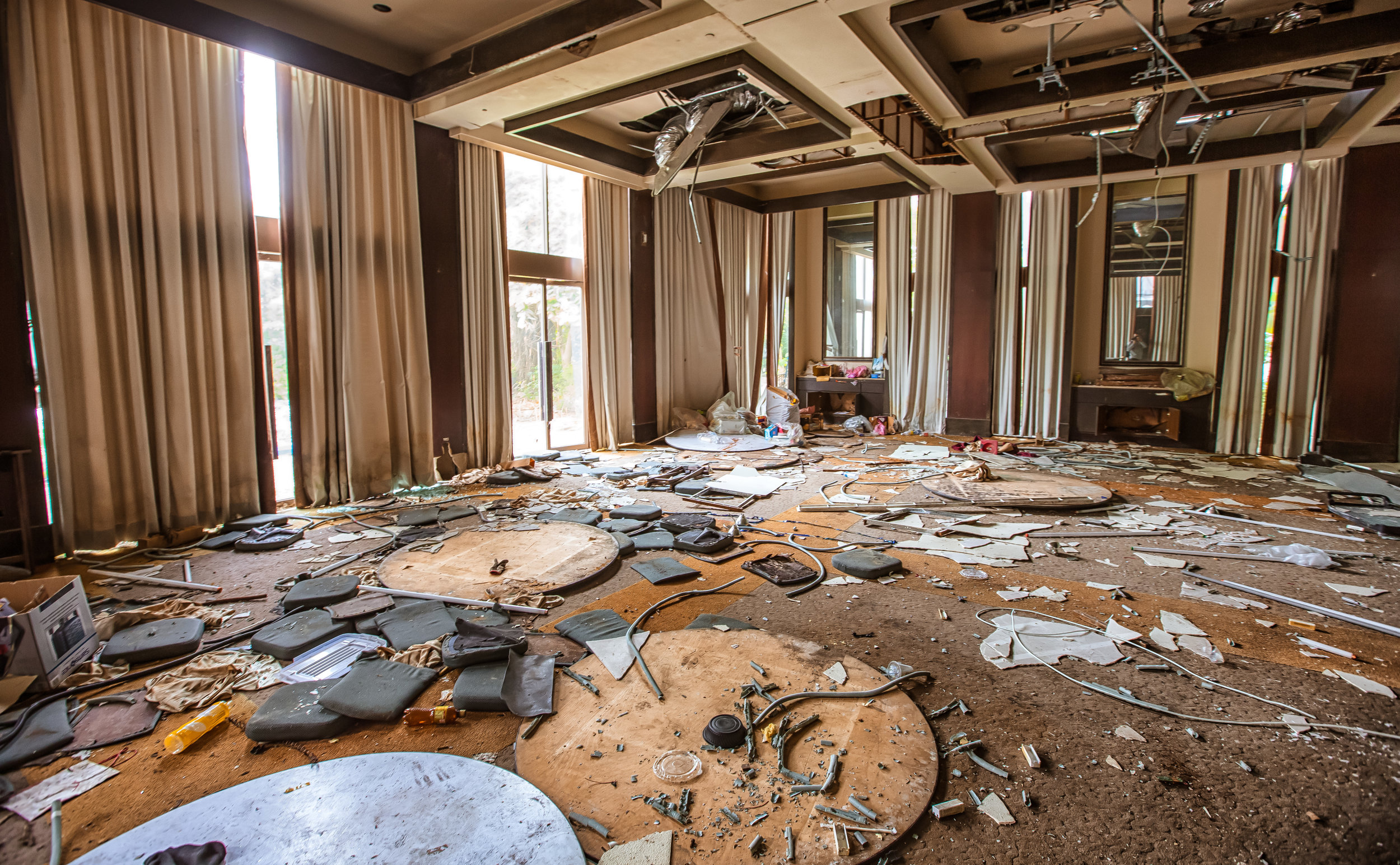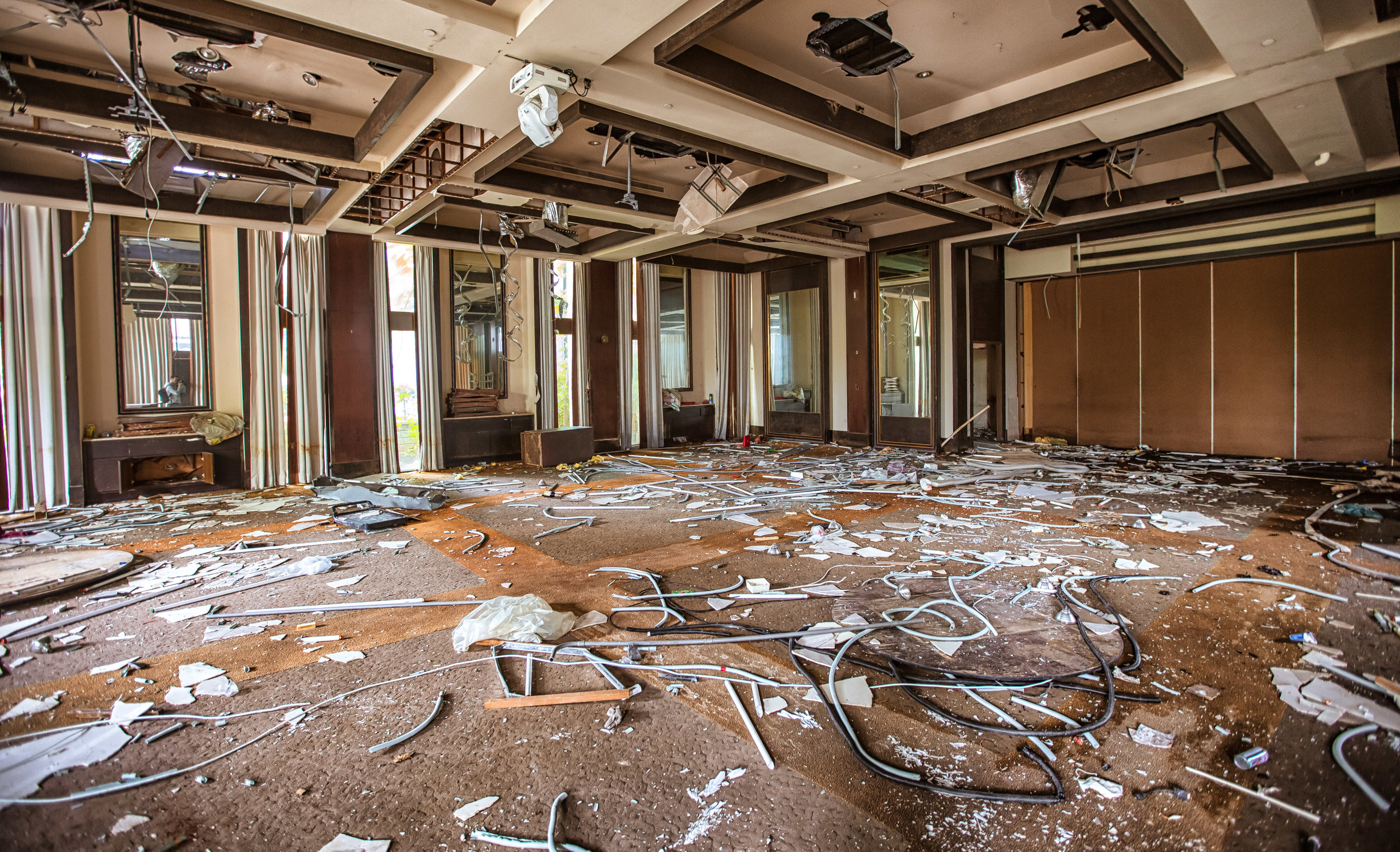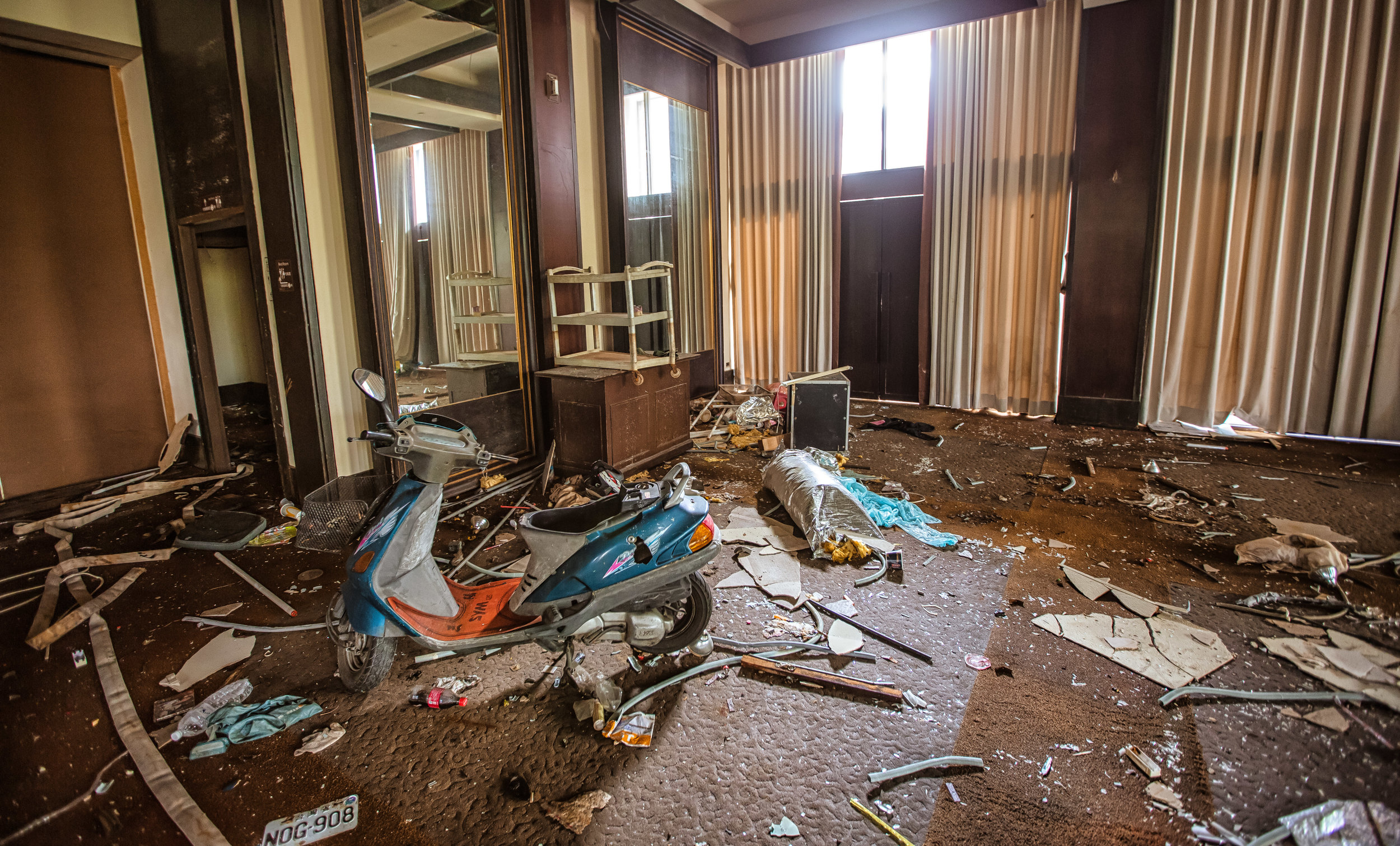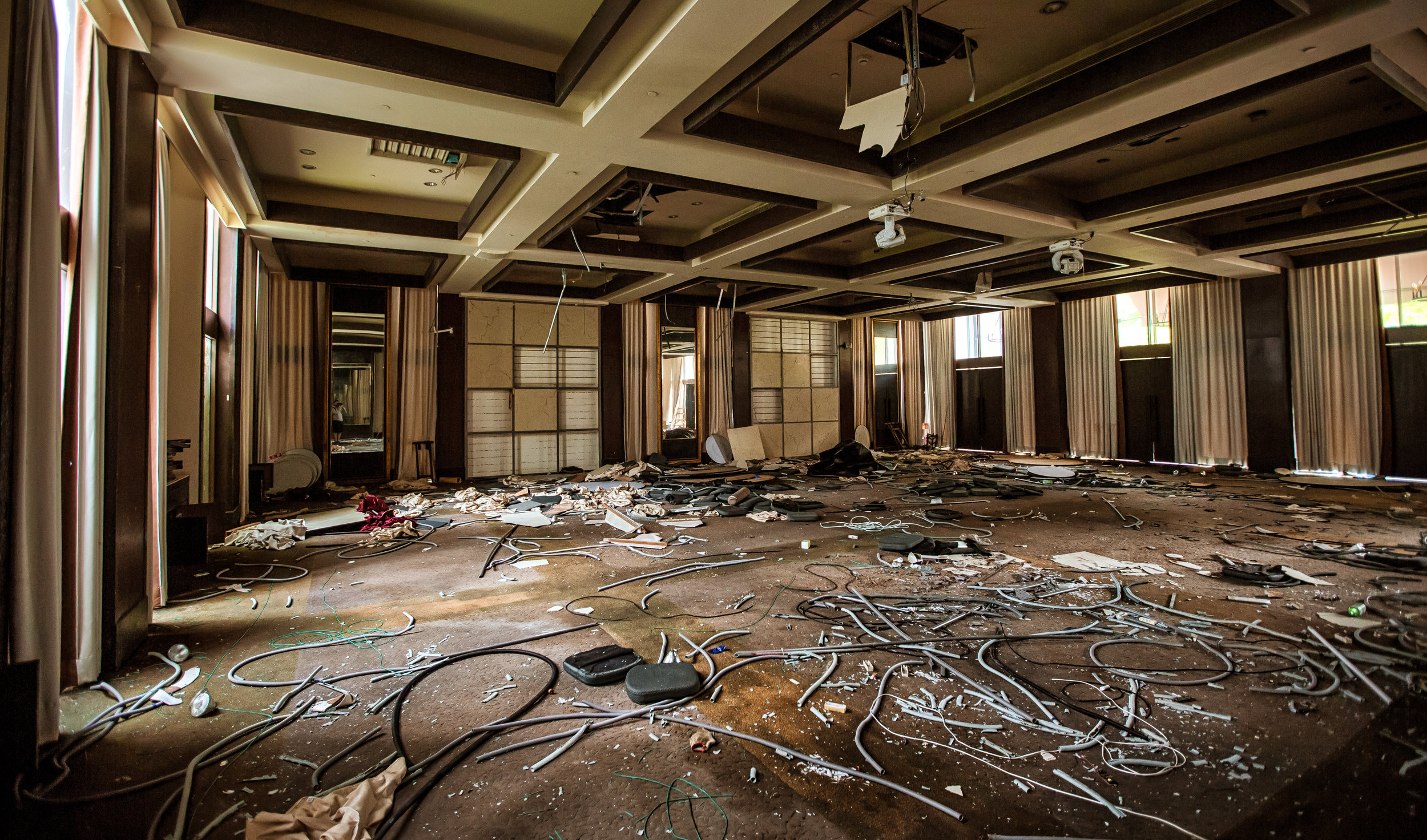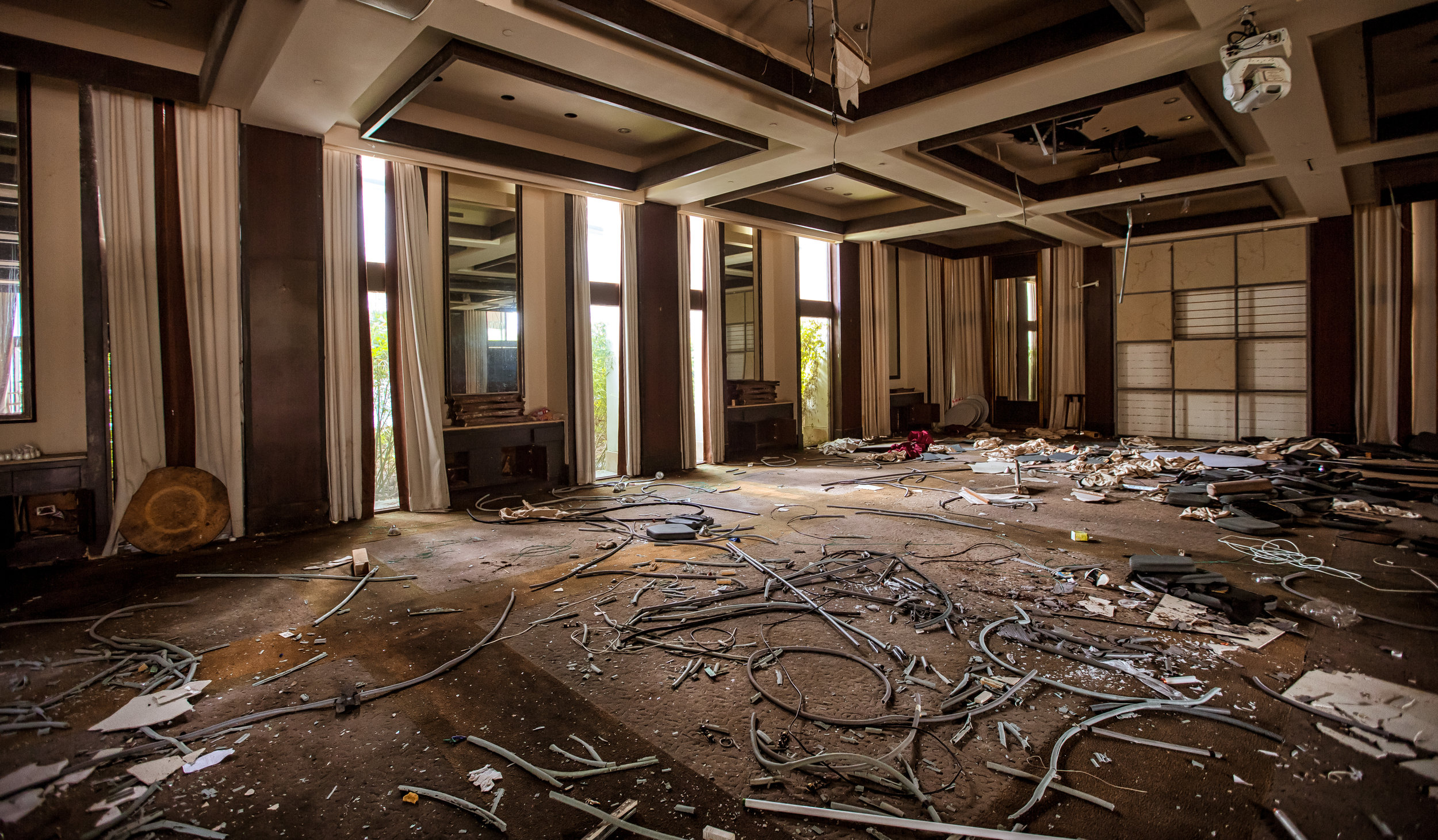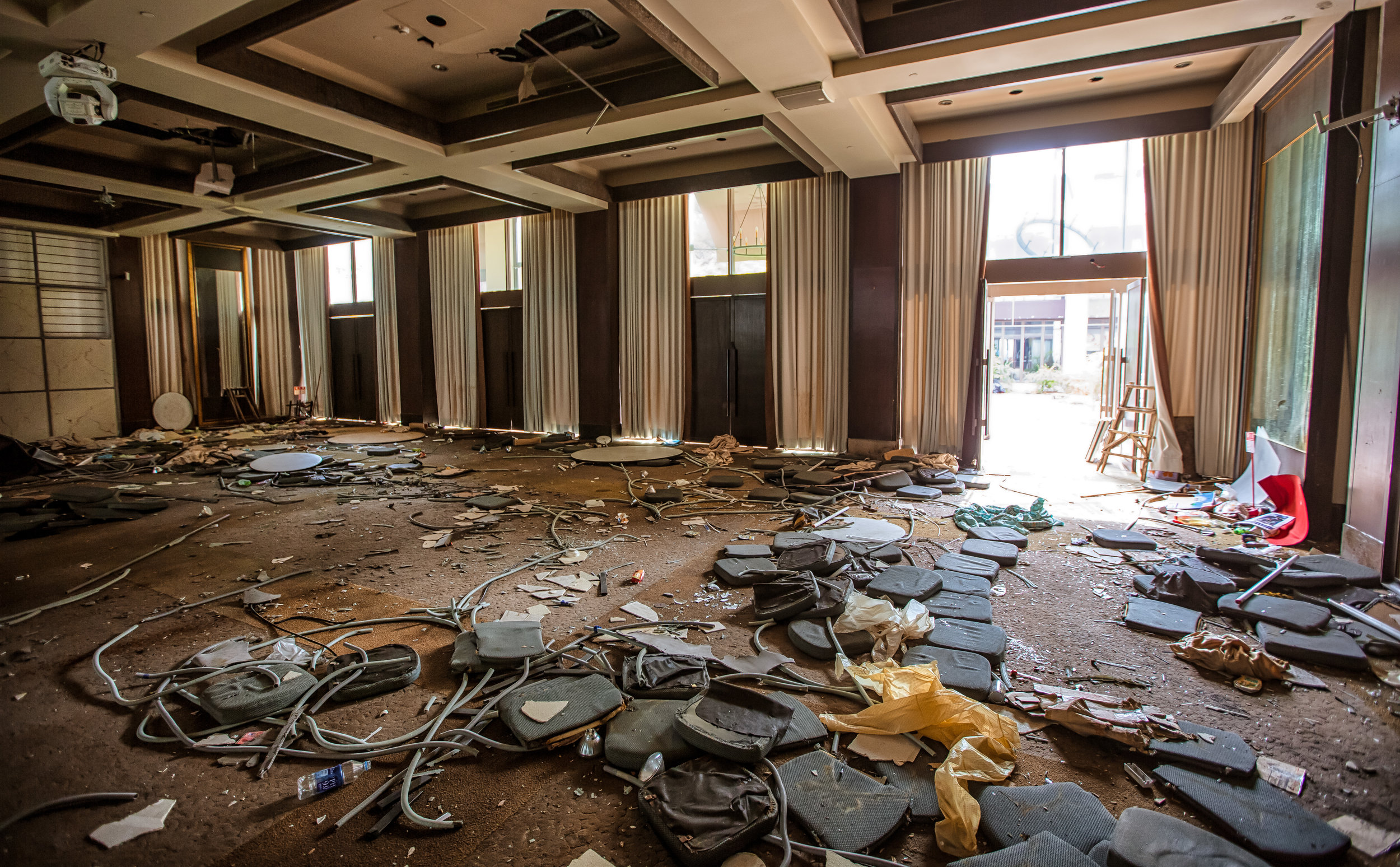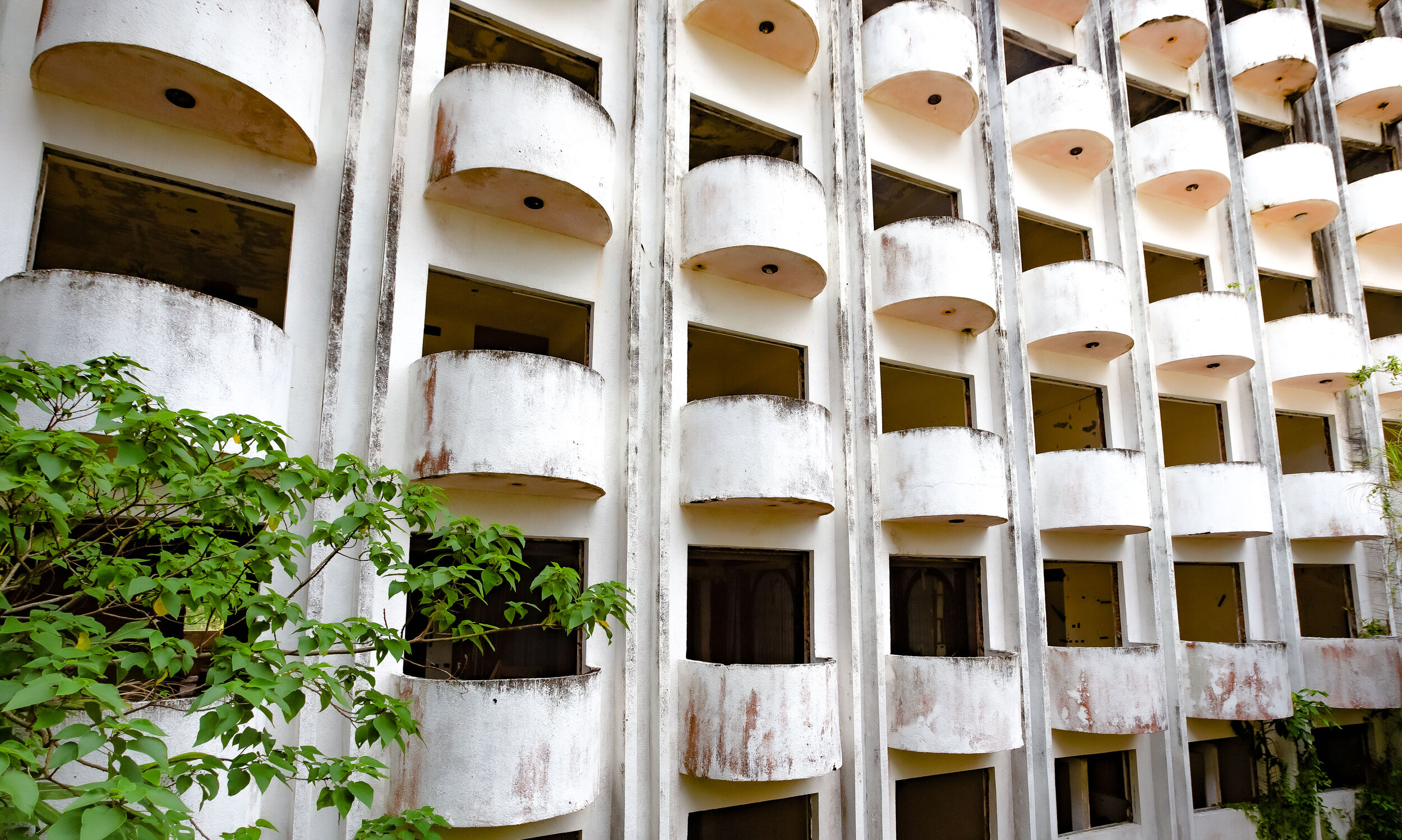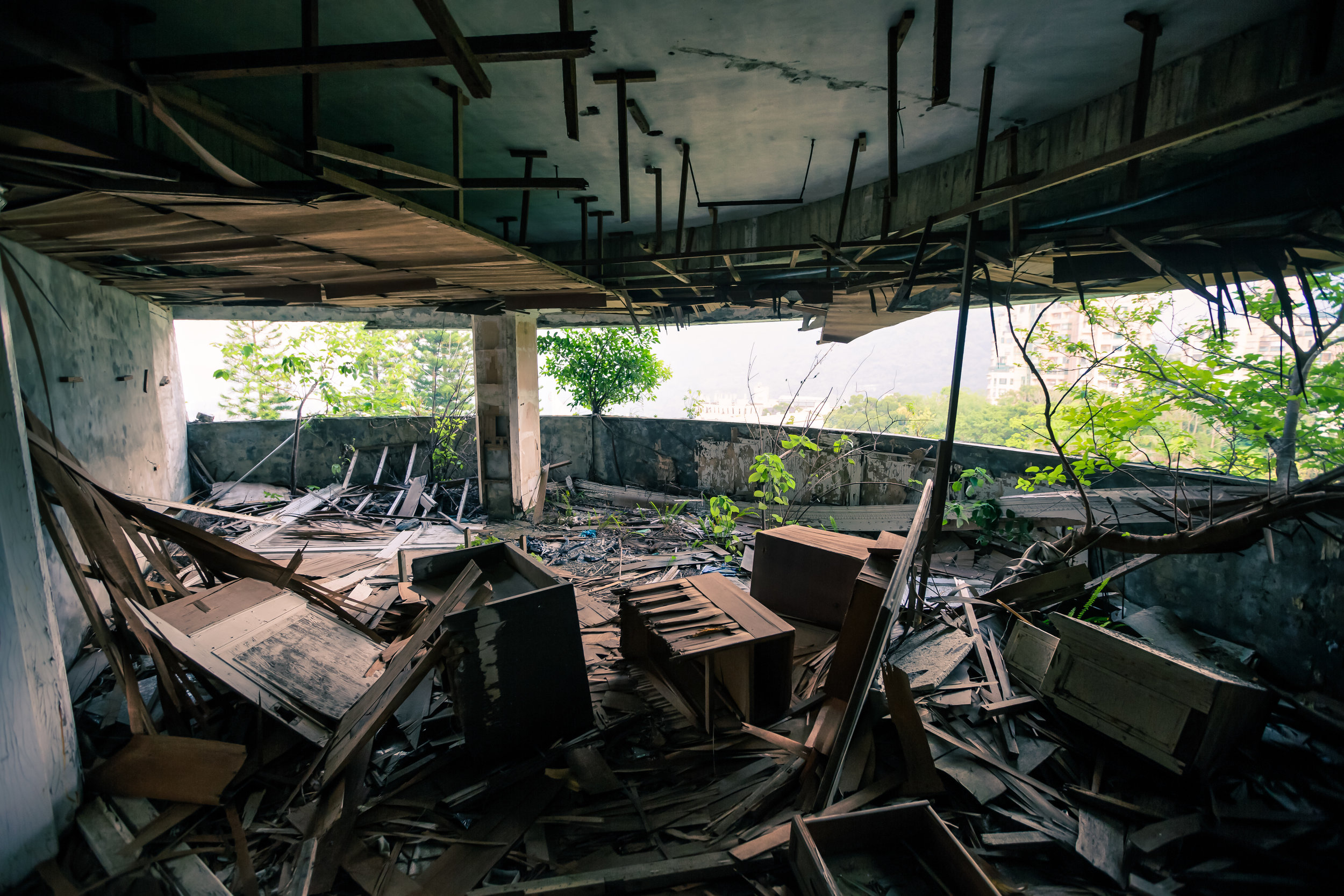I know that I’ve probably said this a bunch of times on my blog but I’m glad to say it again: Taiwan’s North Coast is home to some of the most beautiful scenery in the country.
The fusion of the beautiful ocean on one side with tall green mountains on the other makes the drive along the coast a highly recommended day-trip for anyone visiting Taiwan. The coastal highway which wraps around the perimeter of Taiwan’s northern coast is not only a breathtaking drive but also features a number of tourist attractions along the way ensuring that you’ll never run out of things to see and do.
While the area is known for its breathtaking natural beauty, it is also known as the home of what is considered some of the strangest architecture that you’re going to find anywhere in the country. A short drive from the popular Yehliu Geological Park is Emerald Bay, home to the world-famous “UFO houses.”
The houses, which are part of a beachside community of vacation homes have garnered quite a bit of international attention over the past few years and have been attracting curious onlookers here in Taiwan for almost four decades.
For most people the so-called “UFO houses” are a peculiar sight and if you visit you’ll likely notice that there are more people walking around taking selfies than there are surfers on the beach.
The sad thing about this is that even though people are interested in taking photos for the Instagram collection, they are far less concerned with the story as to why the houses are even there in the first place or that they could disappear without any notice.
In fact, the “UFO Houses” which are officially known as “Futuros” have an interesting history and the small community of houses on Taiwan’s North Coast consists of the highest concentration of this architectural design in the world.
To highlight the dire situation the Futuros face, and to clear up a bit of confusion, I think its important to first point out that the coastal area was also once home to the a similar vacation community known as the “Sanzhi Pod Houses” (三芝飛碟屋). People often confuse the ‘Pod Houses’ with the ‘UFO Houses’ as they were somewhat similar in design.
If you are here looking for the Pod Houses, I’m sorry to report that you’re in the wrong place and that they have unfortunately already been demolished. The Wanli UFO Houses are unfortunately all that remains of Taiwan’s ‘alien’ spacecraft-style of vacation homes.
Even though the Pod Houses attracted quite a bit of attention, in typical Taiwan fashion, they were there one day and gone the next without any prior notice.
The Wanli UFO Houses may ultimately one day face a similar fate.
Link: The Haunted Sanzhi UFO Houses (Photos from my friend Carrie Kellenberger)
Futuro Architecture
What exactly is Futuro Architecture and why are there UFO-looking houses on Taiwan’s North Coast?
The alien spacecraft-looking structures were the brainchild of Finnish Architect Matti Suuronen in the late 1960s. The Futuristic design was an expression of creativity that was thought would attract buyers but the concept was a bit more altruistic as it was thought to be a viable answer to help solve housing issues all over the world.
A Futuro was essentially a round pill-like structure that was constructed using lightweight fibreglass-reinforced plastic. The construction material not only made the houses considerably light but eliminated the need for insulation as the martial helped to keep the house warm.
The interior of each unit consisted of a living room, dining room, kitchen, bathroom and private bedroom all squeezed into a floor space of 50 square meters.
Adding to their convenience, the pill-like part of the house was supported off of the ground by a four-legged metal base which eliminated the necessity for expensive grading or excavation. This meant that the Futuros could be placed on virtually any topography and also that they could be easily transported if owners suddenly wanted a change in scenery!
Once the design was perfected and ready for mass production the designers also made available specialized furniture and allowed for customizable fully-furnished packages.
Unfortunately due to the volatility of the global economy, less than a hundred of the pre-fabricated homes were constructed before production was shut down in 1973.
Factors which included the skyrocketing price of plastic and oil (caused by the 1973 oil crisis) made construction of the houses extremely expensive to manufacture and transport.
Even though the houses were considered a commercial failure, the conceptual design of a Futuro home (even fifty years later) continues to give off the impression of modernity and their memory continues to command quite a bit of fascination today, especially among designers and architects.
One could only imagine that if it weren’t or the oil crisis that there would be thousands if not millions of people living in homes like this today.
There are an estimated sixty Futuro home’s in existence today and can be found (mostly) throughout America and Europe but as I mentioned above the highest concentration can be found here in Taiwan.
More in-depth information about Futuro Homes can be found here:
The Futuro House (The internet’s best resource about these homes)
Taiwan’s Futuro Village
New Taipei City’s Wanli District (萬里區) is a rural area most well-known for its fishing harbours and the Yehliu Geopark (野柳地質公園) which (for some strange reason) is one of Taiwan’s most popular tourist attractions.
A short distance from the popular geopark is the surfing community known as either “Feicui Bay” or “Emerald Bay” (翡翠灣). The beautiful white sand beach also happens to be a tourist attraction but for a completely different kind of tourism.
Emerald Bay was once a popular resort area that provided the people of Taiwan with the rare opportunity to enjoy a beach vacation during a time when most of Taiwan’s coastline was off-limits. Back in the days when Taiwan’s economy was unstoppable, the area, like many other around Taiwan was developed for mass tourism with not only these vacation homes but large resorts.
Unortunately Taiwan’s economy eventually slowed down and the tourists that once packed the beach and the hotels all but disappeared leaving Emerald Bay to become somwhat of an abandoned ghost town.
In a recent blog post I wrote about the abandoned Sesame Hotel which was part of a resort area that was highly developed for tourism during the years known as Taiwan’s Economic Miracle (台灣奇蹟). The story of what happened to the Sesame Hotel is almost a mirror-image of what happened at Emerald Bay and many other areas that were set up for tourism during that period.
To sum things up briefly, in the 1970’s and 80’s Taiwan was able to achieve unbelievable economic growth becoming a global powerhouse and one of the “Four Asian Tiger” economies. The ‘miracle’ referred to Taiwan’s rapid industrialization and economic growth and the nation’s ability to manufacture and produce electronics for global markets.
The miracle made a lot of people extremely rich and in turn ‘trickled down’ to almost everyone in Taiwanese society who could now enjoy the newfound ability to spend money on leisure activities.
Emerald Bay’s fate as a failed as a tourist resort area was not an isolated incident in Taiwan as many of the areas that were developed around the country for mass-tourism quickly became unsustainable business ventures when the economy started to slow down.
The story of Emerald Bay starts with Mr. Su Ming (蘇銘), a government official who fled to Taiwan with the Nationalist government after the Chinese Civil War.
After spending several decades serving his country as a civil servant he decided to retire and start a new life as an entrepreneur. Su’s first venture was to produce sarsaparilla soda drinks for American servicemen who were stationed in Taiwan.
The drink quickly became a hit with locals who saw the Americans drinking it which allowed Su to amass a large fortune in a short period of time. Being a savvy businessman he he later diversified his fortune into different companies producing household items like toothpaste and laundry detergent.
While Su was making his fortune, hotels, resorts and amusement parks were popping up all over the country. One area that that was severely lacking however were beach resorts. This is because at the time martial-law was still in effect and beaches were military-controlled areas and thus off-limits.
Luckily Su Ming still had contacts within the government and was able to use those relationships to help bypass certain regulations which allowed for the purchase beach front property. Similar to Su’s idea to produce drinks for Americans, the government was able to get on board with his plan for a beach resort solely because it was in their best interests to cater to the needs of American servicemen who were stationed in the area as America was providing aid and military assistance.
In the 1980’s construction started on the “UFO Houses” (太空玲瓏屋) which were imitations of Matti Suuronen’s Futuro-style homes. The homes were billed as ‘perfect’ vacation homes for American soldiers stationed in Asia as well as wealthy residents of Taiwan.
Su Ming, who is said to have been quite forward thinking considered the futuristic design of the houses to be a good fit for modern Taiwanese society which was interested in western styles of architecture and designs that would stand out from what was most common here.
The reported price for one of the homes was about $3 million Taiwanese Dollars ($90K USD) with sales boosted locally thanks to the help of the popular television show “Happy Holidays” (歡樂假期) hosted by Taiwanese celebrity Bao Gaoliang (包國良).
The Futuro-style homes however were only part of the first phase of development in the area as Su also had plans for large hotels and hot spring resorts. Unfortunately nothing lasts forever - When the economy started to cool off and the number of tourists started dropping investors in the project started getting cold feet which left several development projects unfinished and the area in a bit of a mess.
In retrospect, Emerald Bay was a pretty poor choice as a location for a resort or a number of reasons:
- The summers are long, hot and humid and most locals don’t like tanning.
- The winters are miserable, cold, windy and rainy.
- The bay was never really safe or suitable for swimming.
- Hanging out at the beach on the weekends is something that never really caught on here.
- Going anywhere near the ocean during Ghost Month is culturally taboo.
So, like what happened at many of Taiwan’s other tourist attractions and resorts, the area was pretty much abandoned by both tourists and investors. The UFO homes remained the property of their owners though, so even though the resort area was abandoned, the homes continued to be occupied for quite a few years afterwards. In fact, a few of them are still inhabited today. The commercial abandonment of the area around it though likely factored into people’s decision to stop coming.
It is unclear how many Futuro homes were originally constructed on the property but today there are at least thirteen remaining on site. Most if not all of them have been abandoned.
In addition to the “Futuros” there are also a number of “Venturos” which are similarly designed homes that were also designed by architect Matti Suuronen. The Venturo houses that are on site tend to be in much better condition than the Futuros and quite a few of them are still occupied today.
There is debate as to whether the beach houses have anything to do with Suuronen or if they were merely just copies of his original design. From the available literature that I’ve found in Chinese it is clear that the Futuros here were all constructed well after Suuronen’s company ended production and it is also highly unlikely that they would have had the houses imported from Europe.
Adding to the argument that the Futuros in Wanli are “Made in Taiwan” versions are the differences in design from Suuronen’s original concept. The houses here are not propped up by a four-legged metal base (so that they could be easily transported) instead are placed on a concrete base elevated much higher off the ground. Additionally there is a solid set of concrete stairs that leads up to the entrance.
There is quite a bit of information online about the Wanli UFO homes, especially in English, but I’d be a bit careful about what I’d take as fact. The best resource I’ve found in English is the Futuro House website which has compiled a lot of information from different content creators and chronicles the design of the houses as well as where you can find them. The site has also devoted quite a bit of information introducing the Wanli homes with help from my good friend Alexander Synaptic.
The homes continue to attract quite a bit of interest from both locals and foreigners and is a popular spot for people to stop by and take photos. If you plan on visiting you’ll want to be a bit careful about where you are exploring as some of the homes are still inhabited and there are guards patrolling the property. You are of course free to walk around the community as long as you stay respectful.
Getting There
Since the demolition of the famed Sanzhi Pod Houses, people often ask if the Wanli Futuro Homes still exist. The small beach-side community is of great interest to quite a few people but it seems most people are unaware of their exact location or if they’re still around.
The small community of homes is located at Feicui Bay (翡翠灣) in Taiwan’s northern village of Wanli (萬里). If you have a car or a motorcycle, the beach is a short drive from Taipei via the north coast highway or the route which takes you over Yangmingshan (陽明山).
If you are relying on public transportation you can either take the train to Keelung and transfer to bus 790 from there or take bus 1815 directly from Taipei City Hall bus station getting off at the Feicui Bay stop.
Bus links - Bus 1815 from Taipei | Bus 790 from Keelung
The future of Wanli’s “UFO” village is currently undecided - Even though the village still has a few residents most of the Futuro’s have been abandoned and are currently in a state of disrepair. A look at any of the recent news stories about the area shows that there have been discussions about either demolishing them or preserving them.
A decision on the matter has yet to have been made, but as I mentioned earlier, when it comes to Taiwan, they could ultimately disappear without any prior notice. At this point only time can tell what will happen to these beautiful homes.
I will endeavour to keep track of any future developments and will keep this blog updated if something happens. If you are unsure as to whether the community is still around, the fastest way to get your answer is to search #wanliufovillage or #飛碟屋遺址 on Instagram which will give the most recent conditions. Likewise you can check the Futuro House website, which is the best resource on the internet with regards to this style of architecture as well as the Wanli community.
Gallery / Flickr (High Res Shots)
